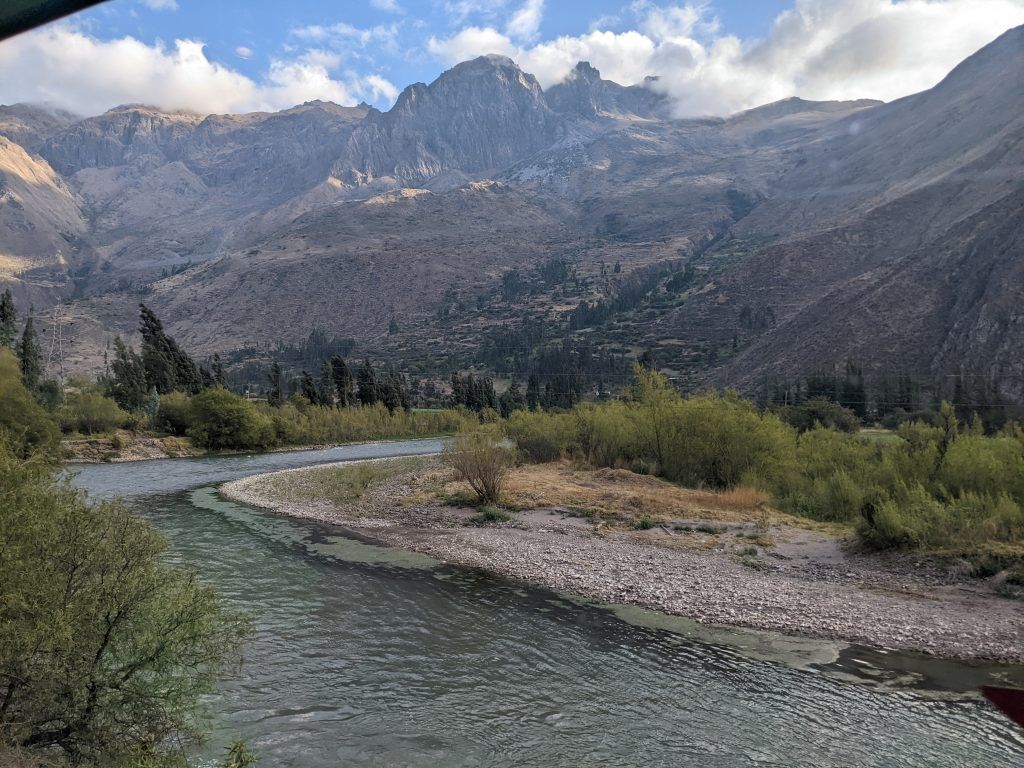Throughout my four months in Ecuador and Peru there was always Machu Picchu looming in the distance as an ending bookmark to compliment my exploration of the Galapagos Islands at the beginning of these four months. And as planned, it proved a fitting climax to this journey. I was able to do the traditional five day Inca Trail through the Sacred Valley to Machu Picchu.
As a historical context, the Incas – in contrast to the Maya – had no written language, and no European visited the site until the 19th century. There are, therefore, no written records of Machu Picchu while it was in use. The names of the buildings, their supposed uses, and their inhabitants are all the product of modern archeologists, on the basis of physical evidence, including tombs at the site.
Most recent archaeologists believe that Machu Picchu was constructed as an estate for the Inca emperor Pachacuti (1438–1472). Our guide said it was actually a multi-purpose site with a royal residence for the local governor that was used by the king when he visited, religious sections, separate mens and womens educational academies, storage facilities, residencies, and tiers of terraces used for agriculture. The Incas built it around 1450 but abandoned it a century later, at the time of the Spanish conquest. According to AMS radiocarbon dating, it was occupied from around 1420 to 1532.
As for my journey, below is the path we took over our 4 days of trekking and camping.
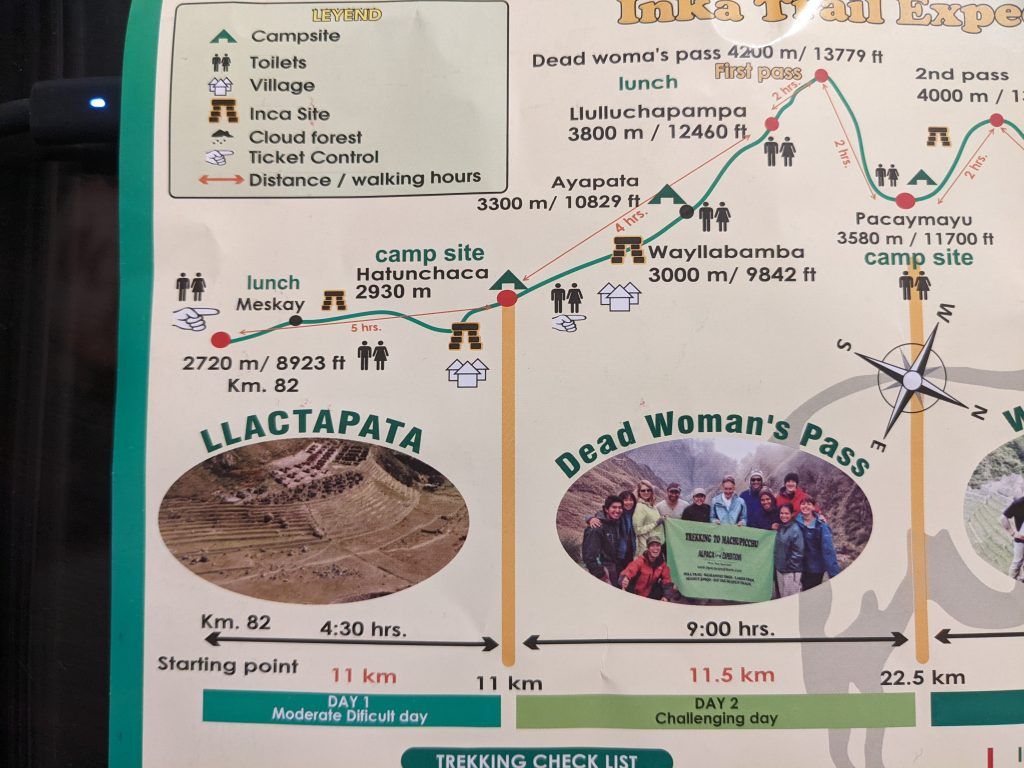
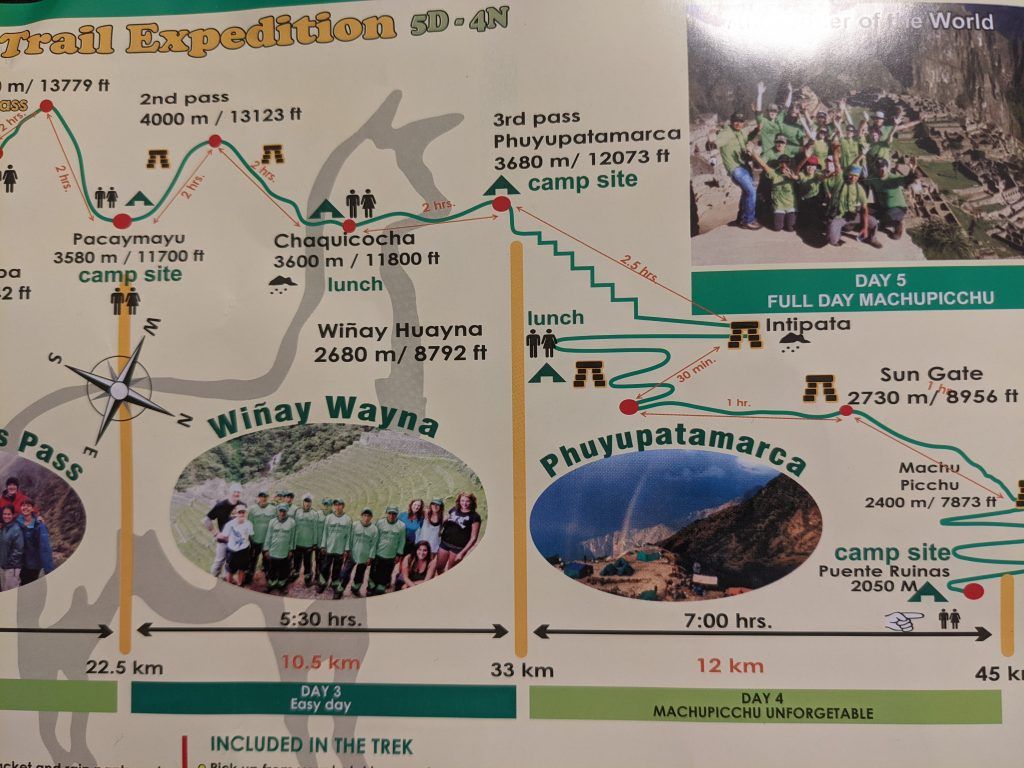
Our group included Dan and Christine, a wonderful couple from Milwaukee, Toad Koo, a really cool veterinarian originally from Hong Kong that was about to take a job in Singapore after studying in Canada, our incredibly knowledgeable guide Juan Carlos, nine porters, and one chef. The company I chose, Alcapa Expeditions, did an incredible job. Its founder and owner is a former porter who went back to university to become a guide and then started the company eight years ago.
It was definitely a difficult trek. The long ascents at altitude kicked my butt. And the steep descents grinded on my toes, knees and quads. But the scenery was amazing. We went through desert, alpine, cloud forest and rain forest ecosystems, all surrounded by multiple 6,000 meter (19,700 feet) plus Andean peaks.
Day 1: Cusco to Hatunchaca
Below is the description of our first day from Alcapa Expeditions:
We will depart for your Machu Picchu Inca Trail Tour from Cusco at 5 a.m. in private transportation and head toward KM 82, the starting point of the Inca Trail. After this beautiful drive, your chef will prepare breakfast before you start your trek. We start our hike walking along the left shore of the Urubamba River, following the trail along a flat terrain, to the community of Miskay (2800 m /9184 ft). The first two hours of the trek are relatively easy as we make our way to our first Inca site and checkpoint, Patallacta. This site will start the approach to Machu Picchu. After we arrive at Patallacta, we will make our way down into the canyon to enjoy lunch and the views of Patallacta. From Patallacta, we will continue on the trail at an easygoing pace, while enjoying the scenery and haring stories from your guide. It’s about a two-hour walk to reach our camping site at the village of Hatunchaka (3,300 meters).
There were multiple groups and sets of porters starting out with us. Most were doing the more intense 4 day trip which did a much more concentrated version of basically the same trail and distance we did.
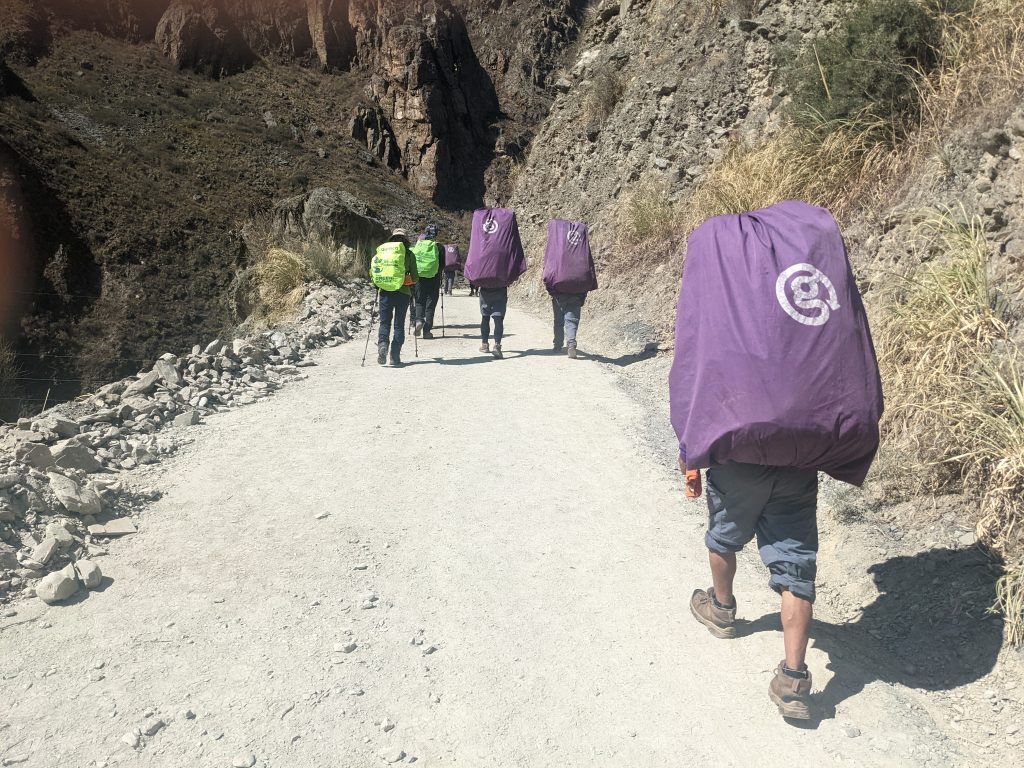
One of the Inca rest stations that were originally located every 5-7km of the trail.
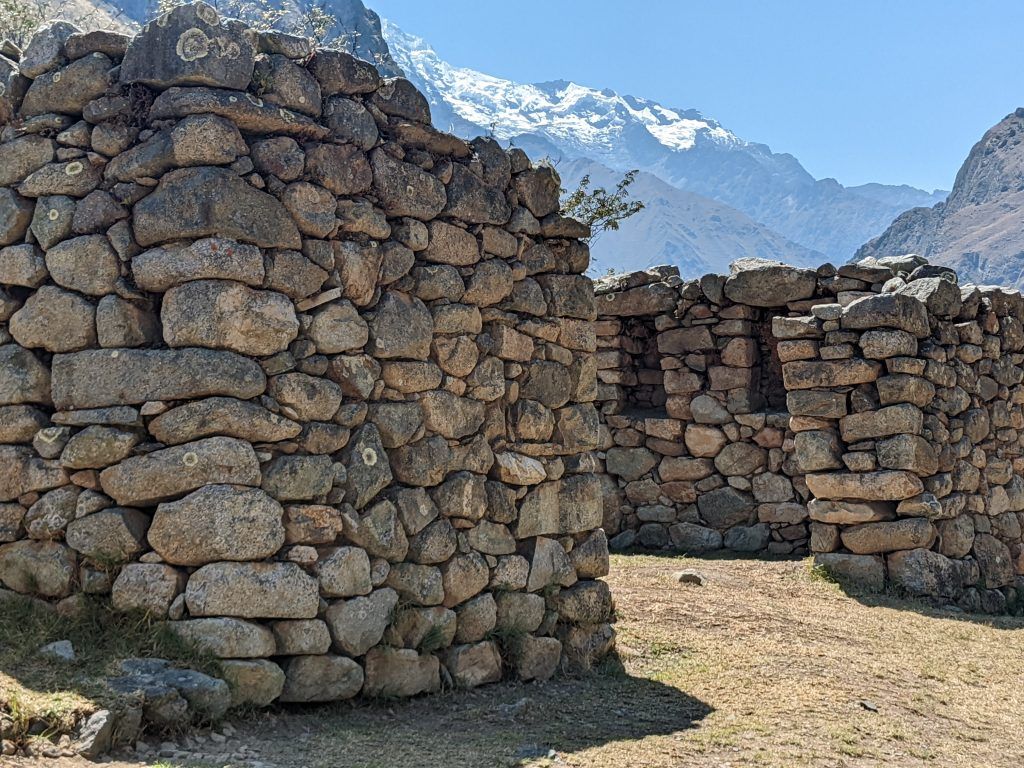
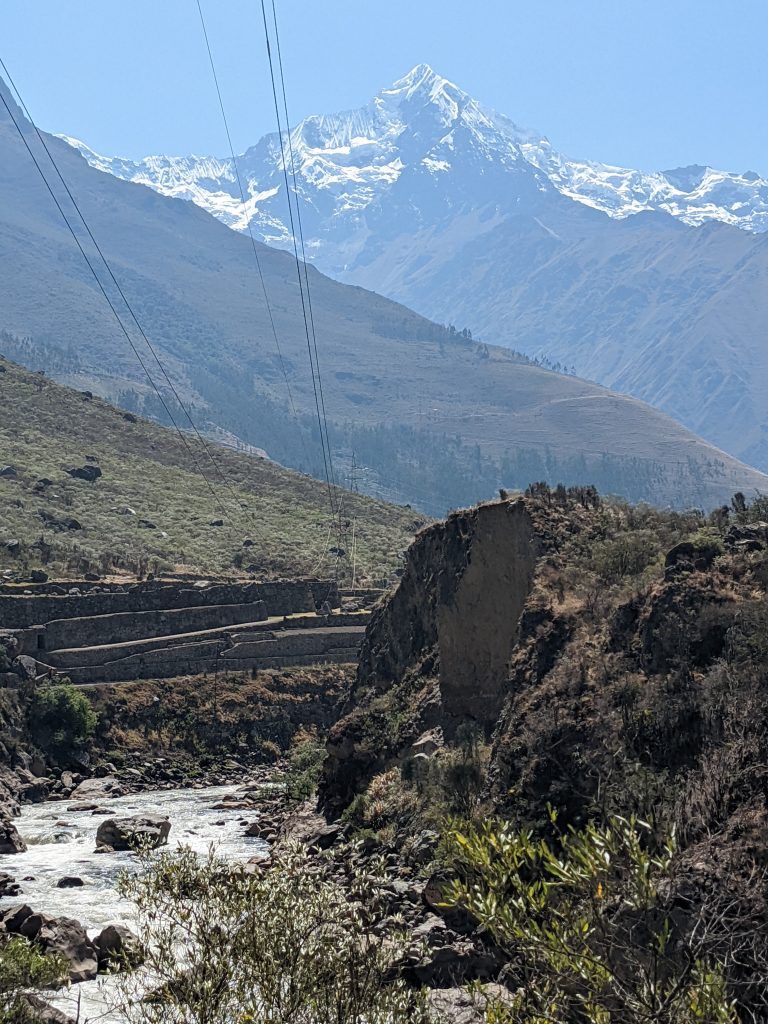
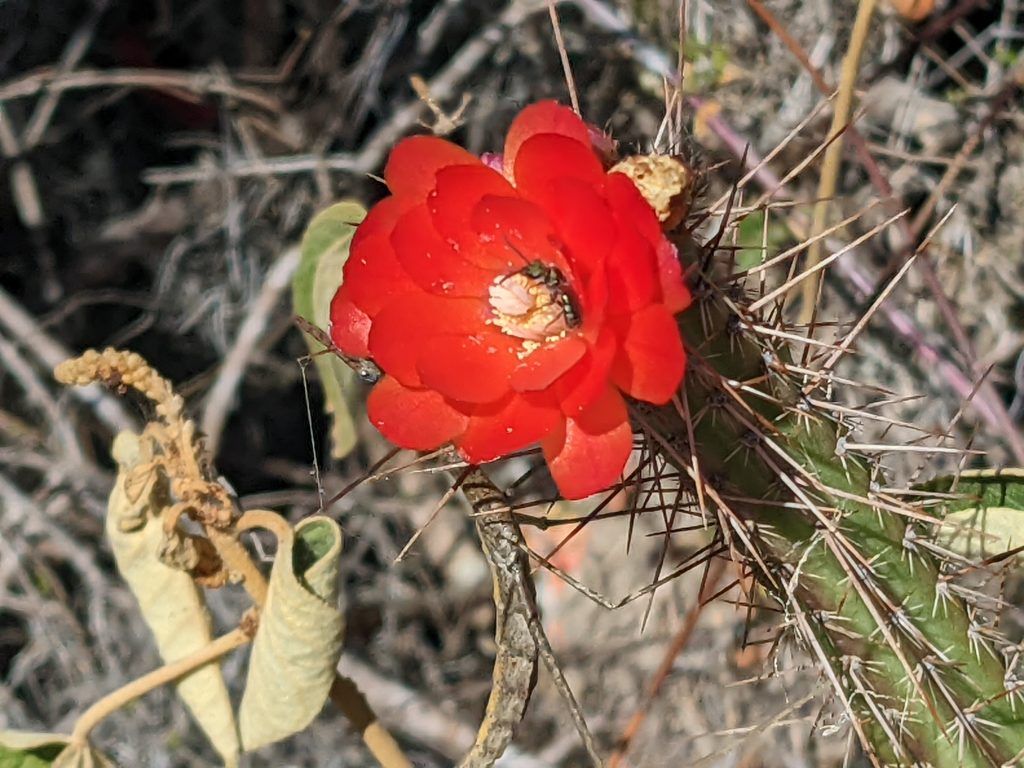
There are small white insects living on cactuses that when you squish them they produce a red color that’s used for lipstick and makeup throughout the world.
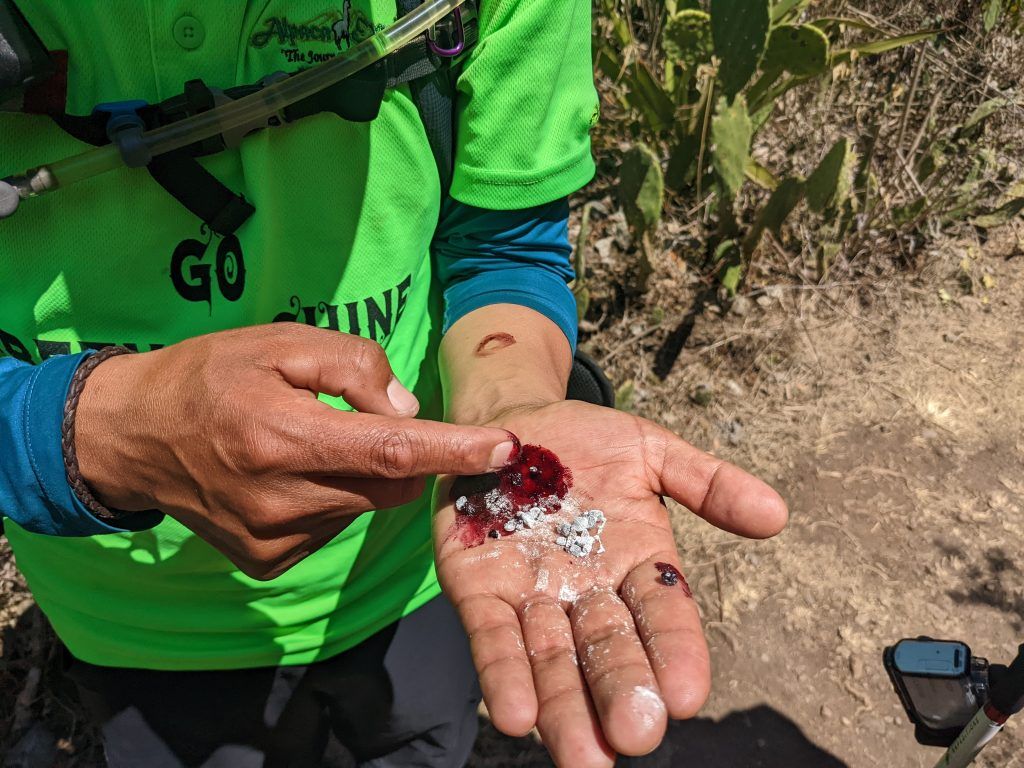
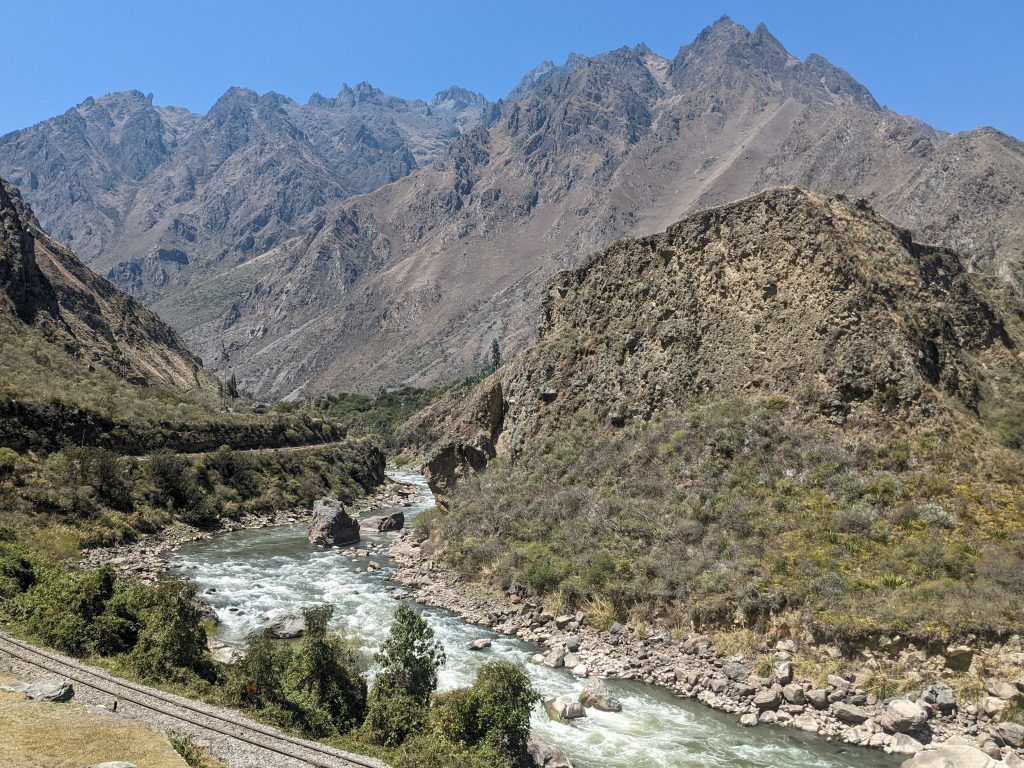
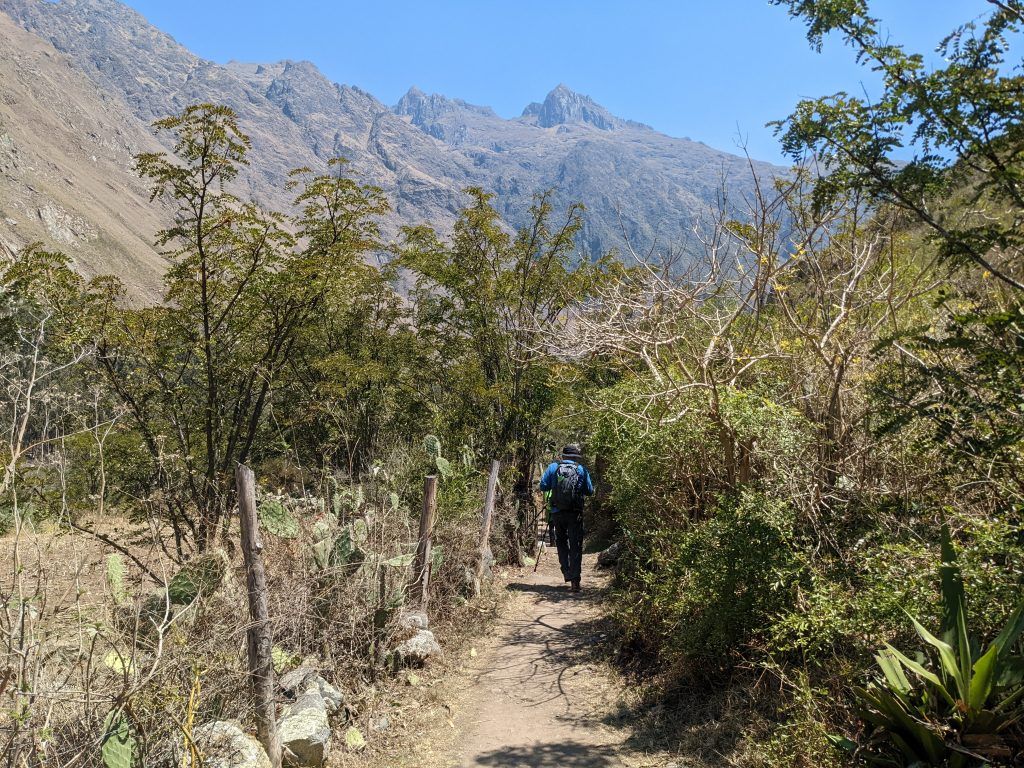
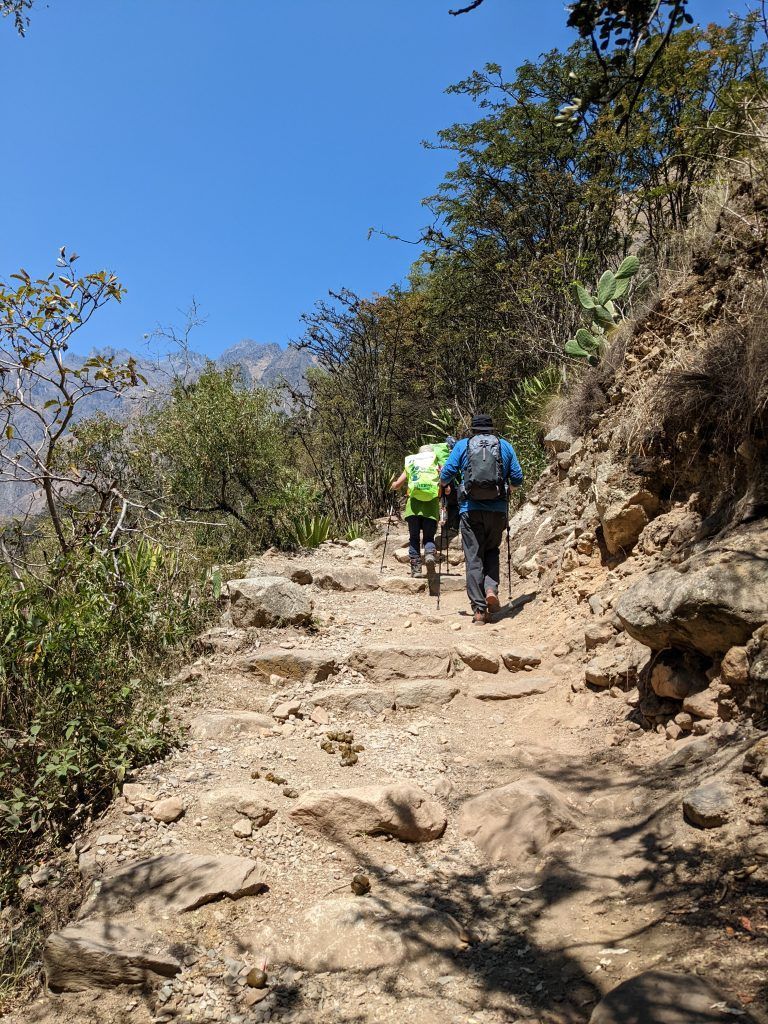
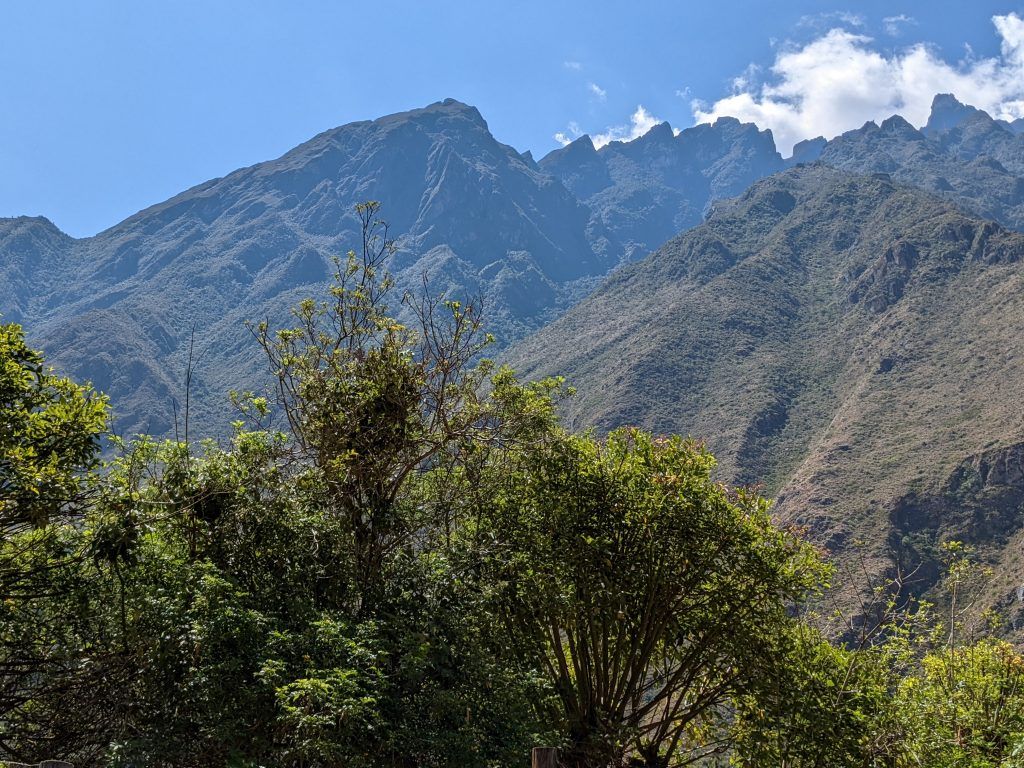
The Inca site of Llactapata.
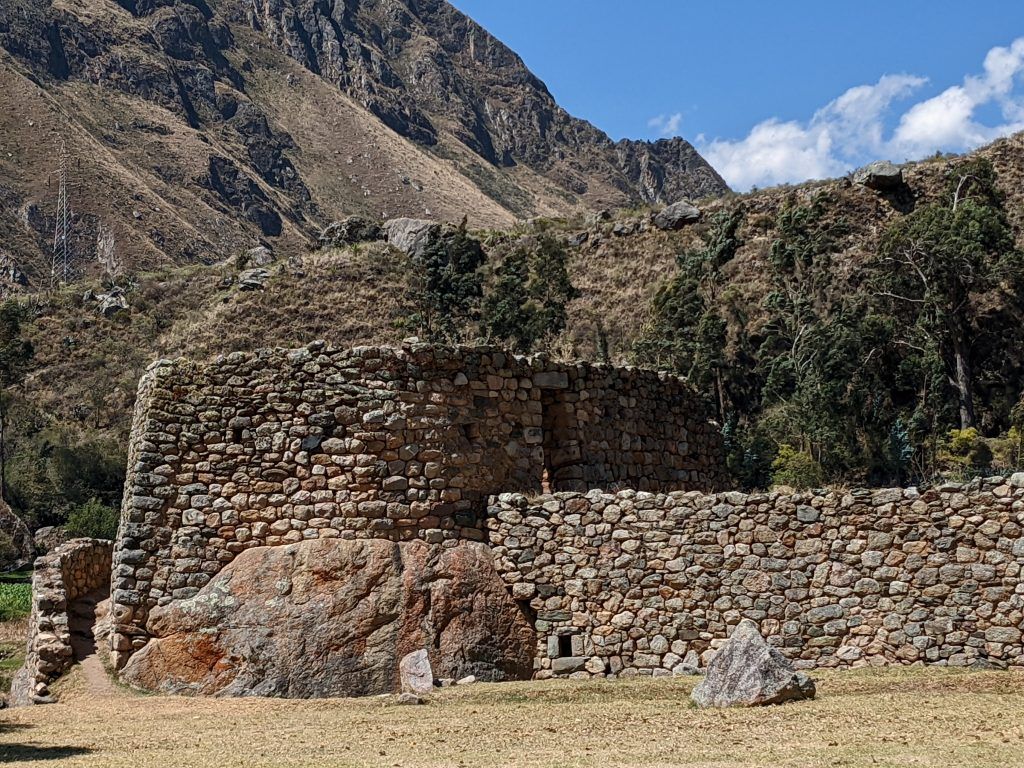
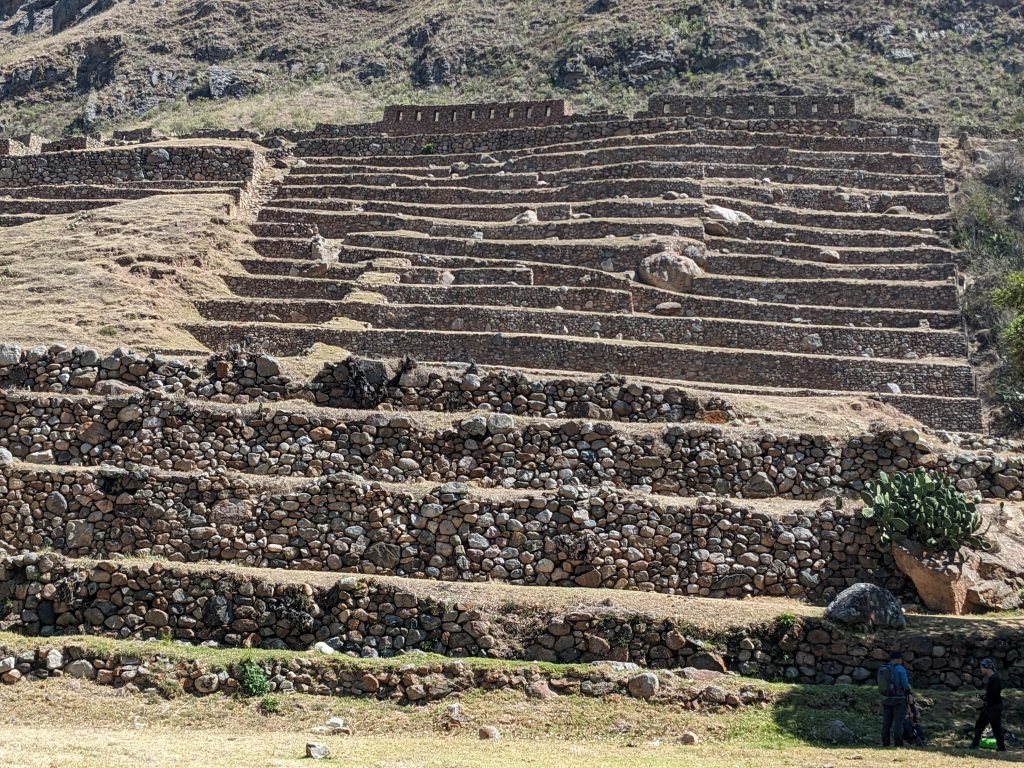
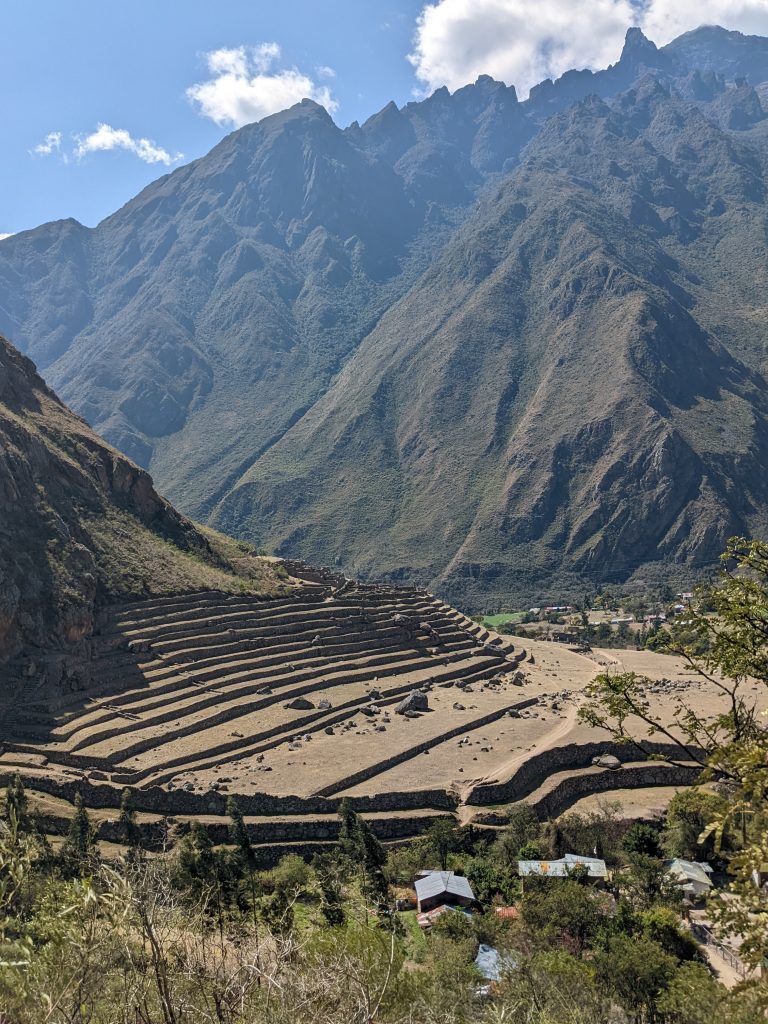
The view from our first lunch spot.
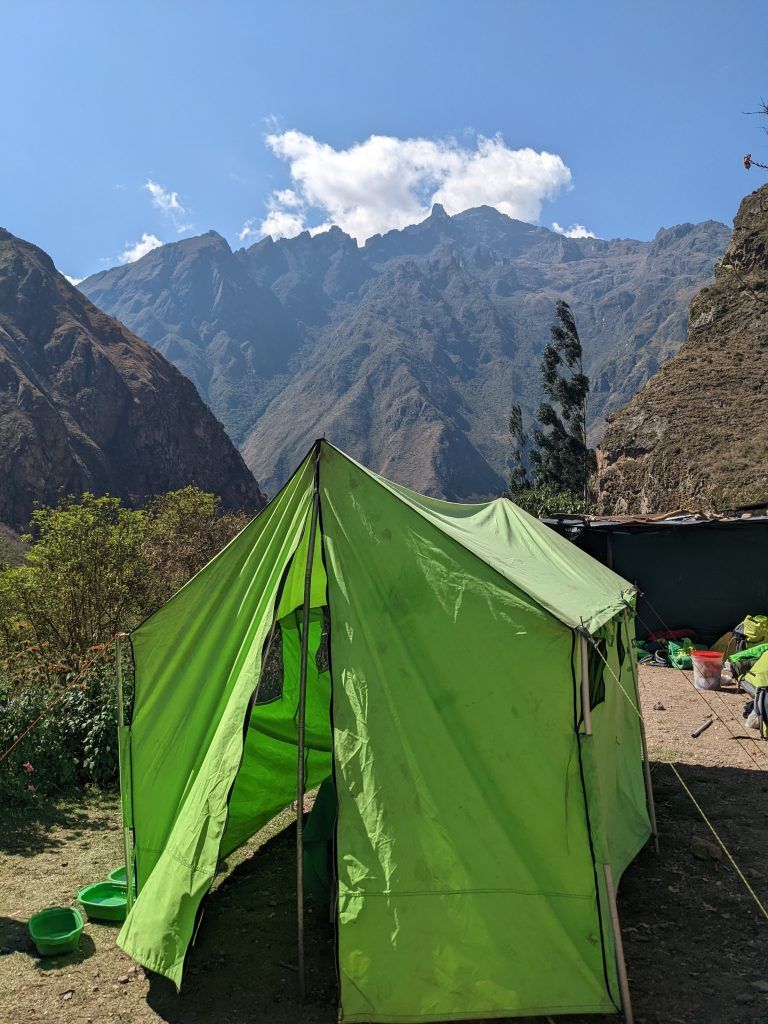
One of our typical five course meals. We’d already eaten the soup.
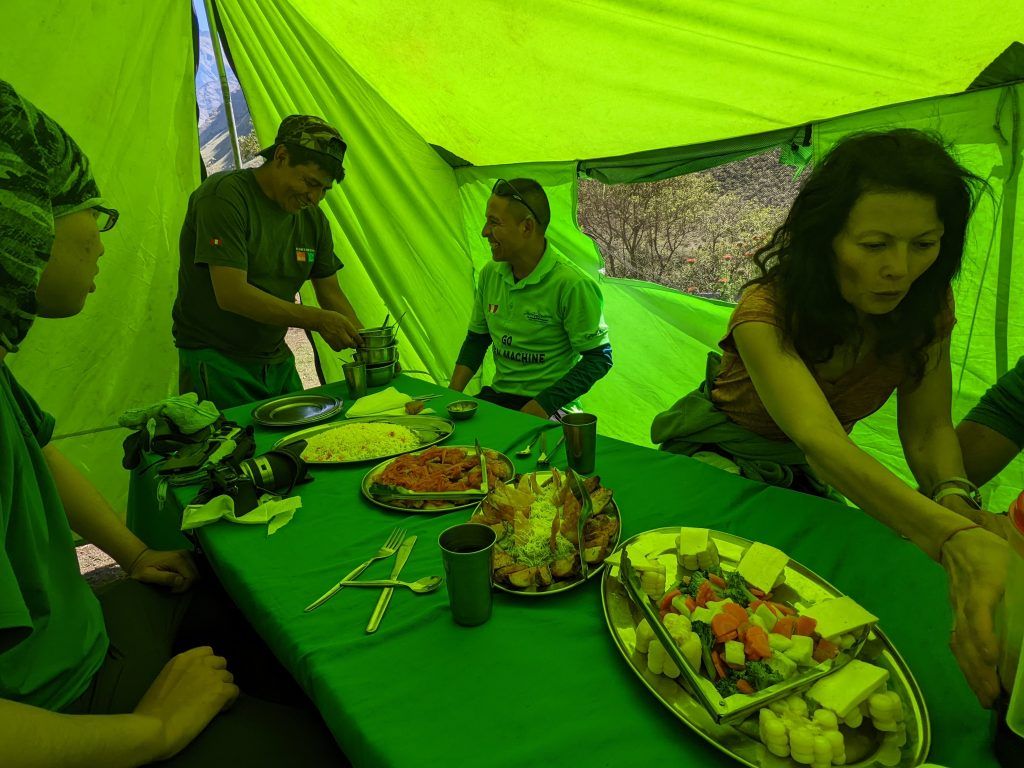
The view from our first night’s campsite.
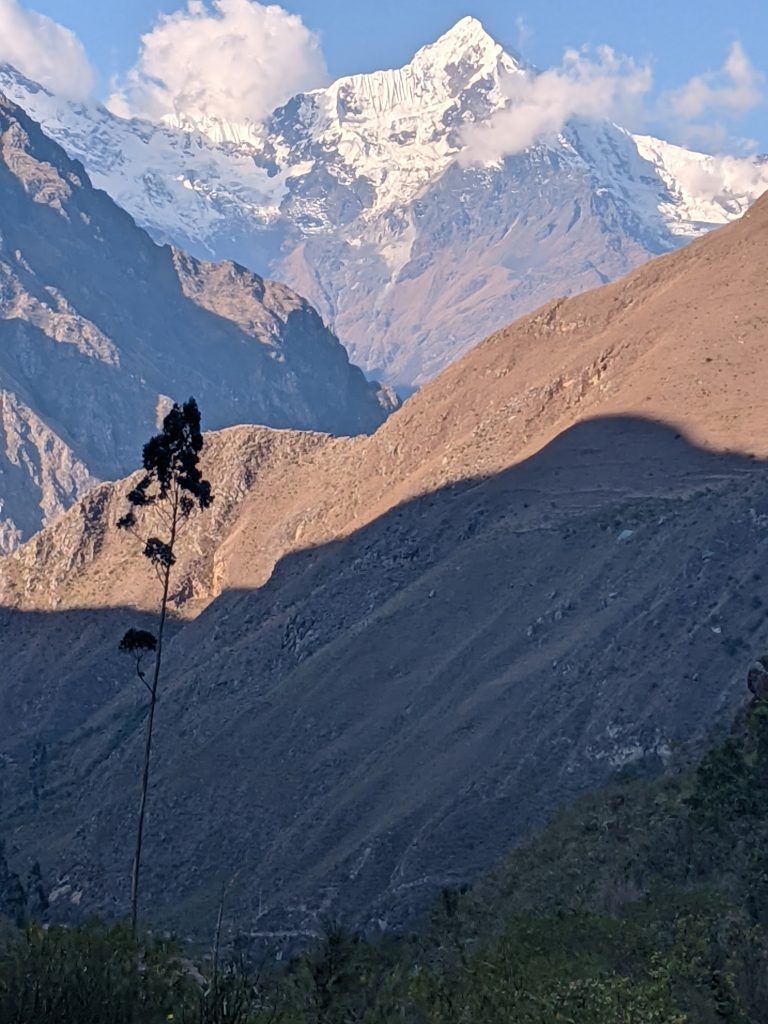
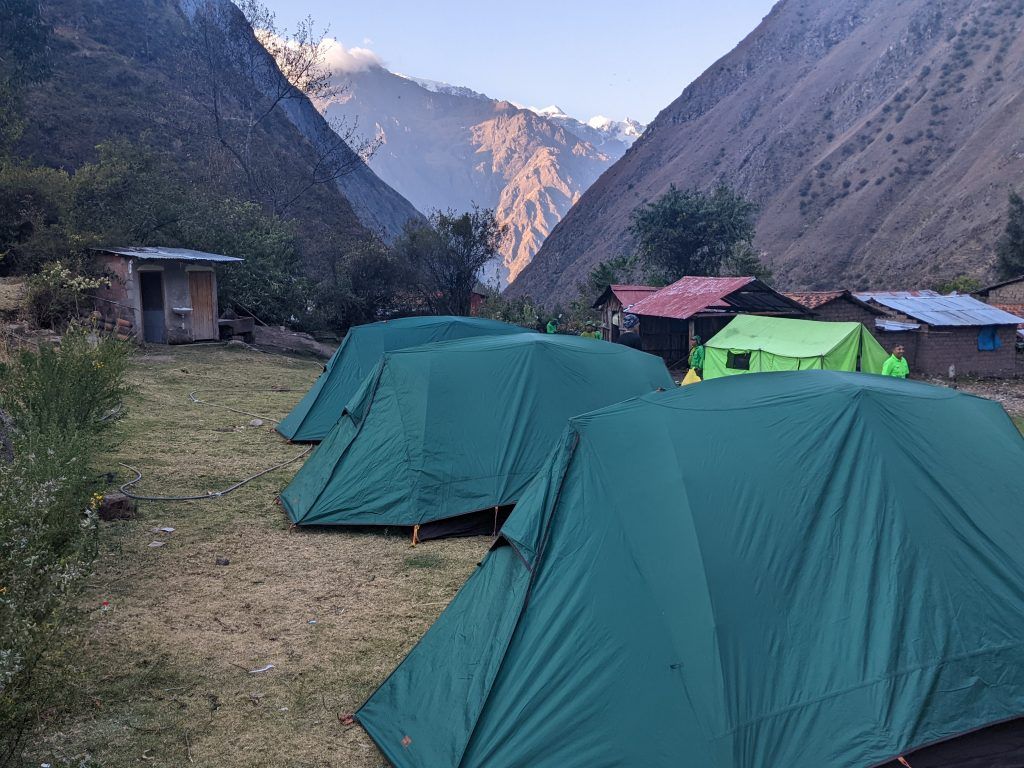
I had a nice, large, comfortable tent for the three nights we camped.
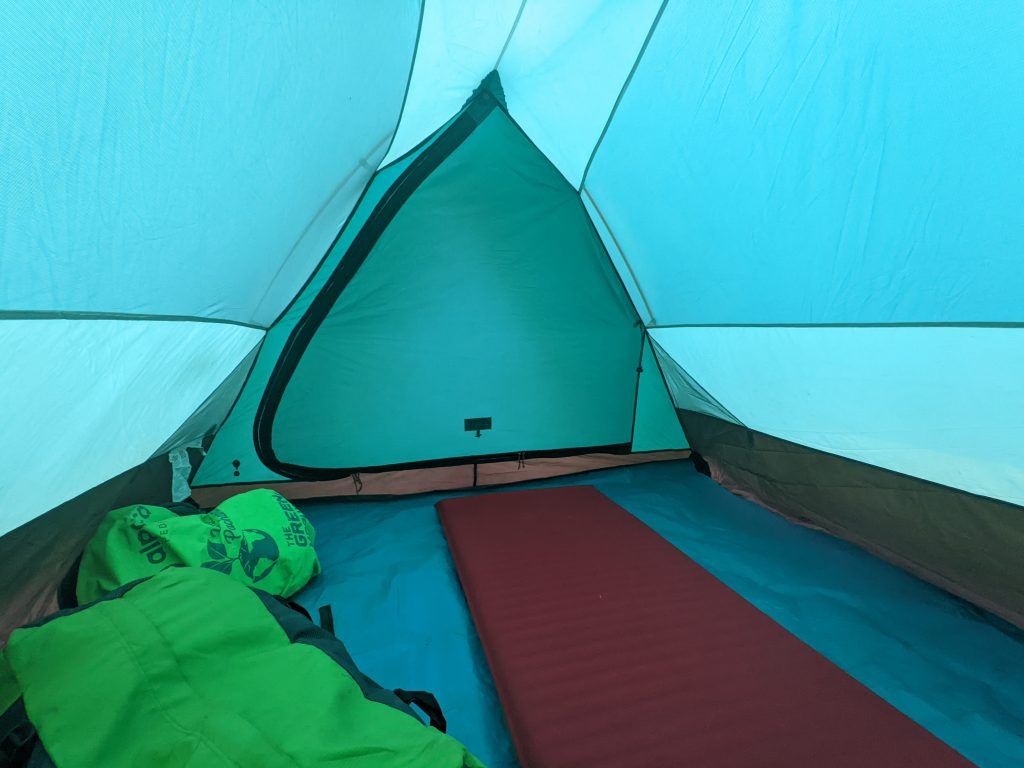
Day 2: Hatunchaca to Pacaymayo
Our second day’s journey from the Alpaca Expeditions description:
We wake up early to begin our ascent to Dead Woman´s Pass. The views of the snow-capped mountains and the cloud forest are fantastic. This first stretch is the most challenging part of the trek. It consists of a steep ascent that stretches for nine kilometers, which will bring us to the first mountain pass in the Inca Trail, Abra Warmihuañusca (Dead Woman’s pass). We will stop at Llulluchapampa to relax and to buy any last essentials. We may be able to see deer and falcons in this area. We will have the chance to spot domesticated llamas and alpacas, who graze on ichu (one of the few plants that grow at that altitude). After the two-hour walk up to the pass, we can enjoy the beautiful views and a refreshing cup of coca tea. After we have made it to the pass, it’s downhill the rest of the day.
A morning picture of six of our nine incredible porters and our chef. I’m not sure why some looked so serious in the picture. They were always laughing as they walked and worked.
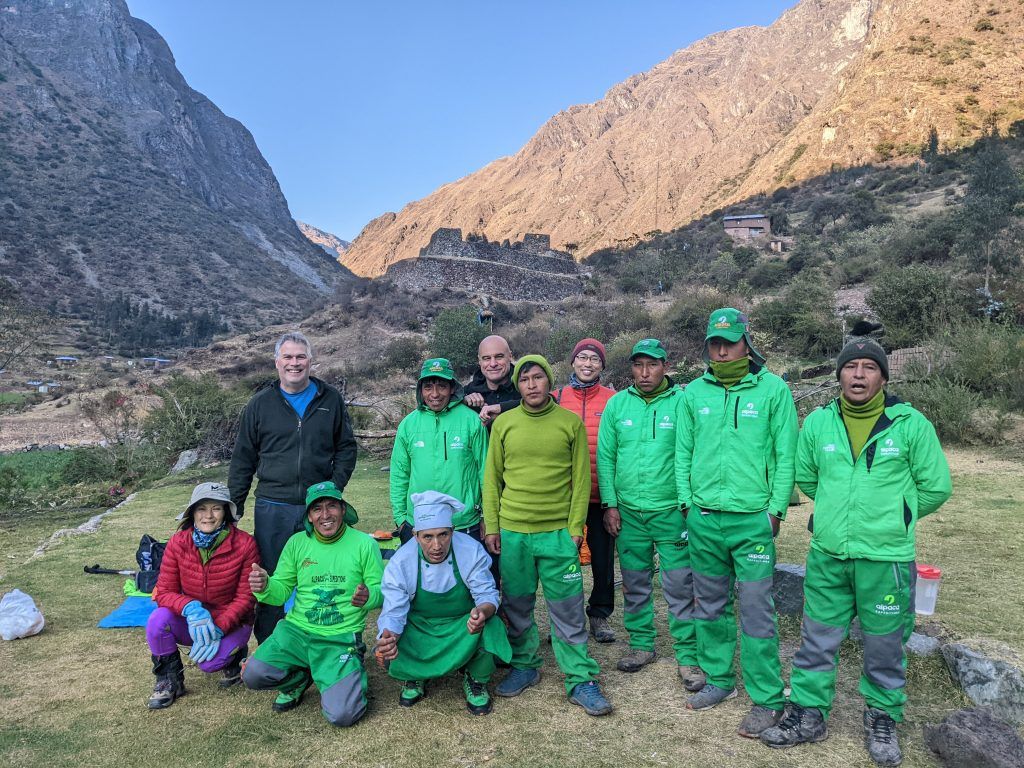
Each porter for all the trekking companies are not allowed to carry more than 25 kilos (55 lbs). There are checkpoints with scales each day to ensure none are overloaded. That being said, it’s still an incredible achievement to carry that much gear and food over the 45 or so kilometers we hike. And they usually start after us as they break down camp and quickly pass us up as they move to the next site.
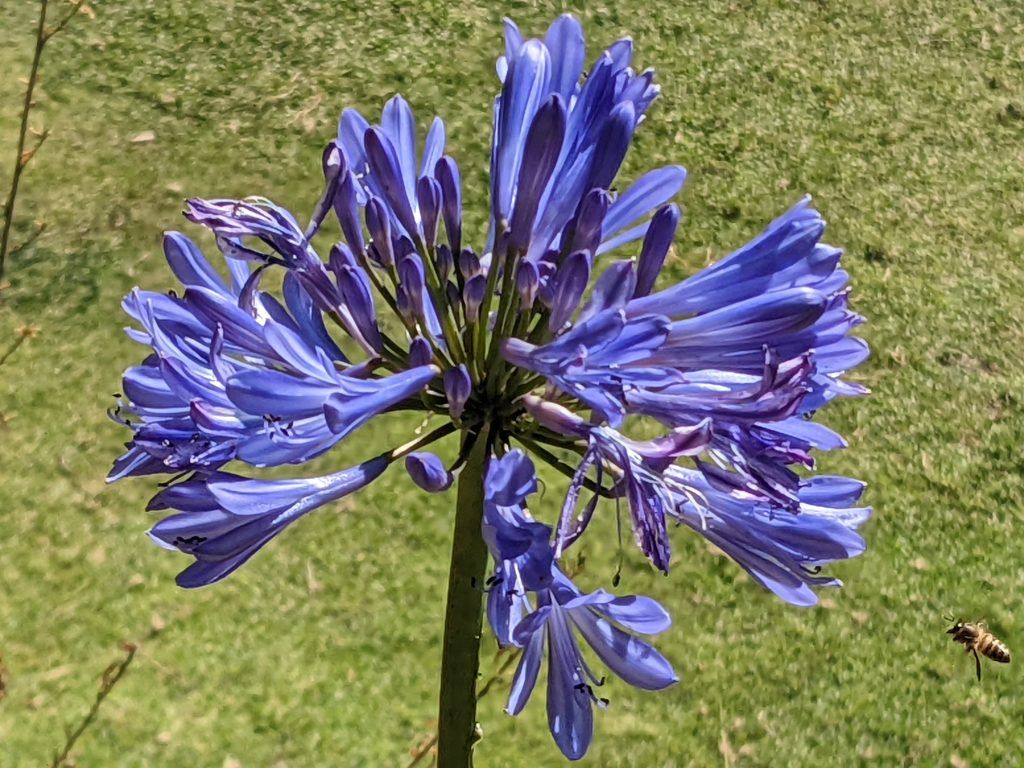
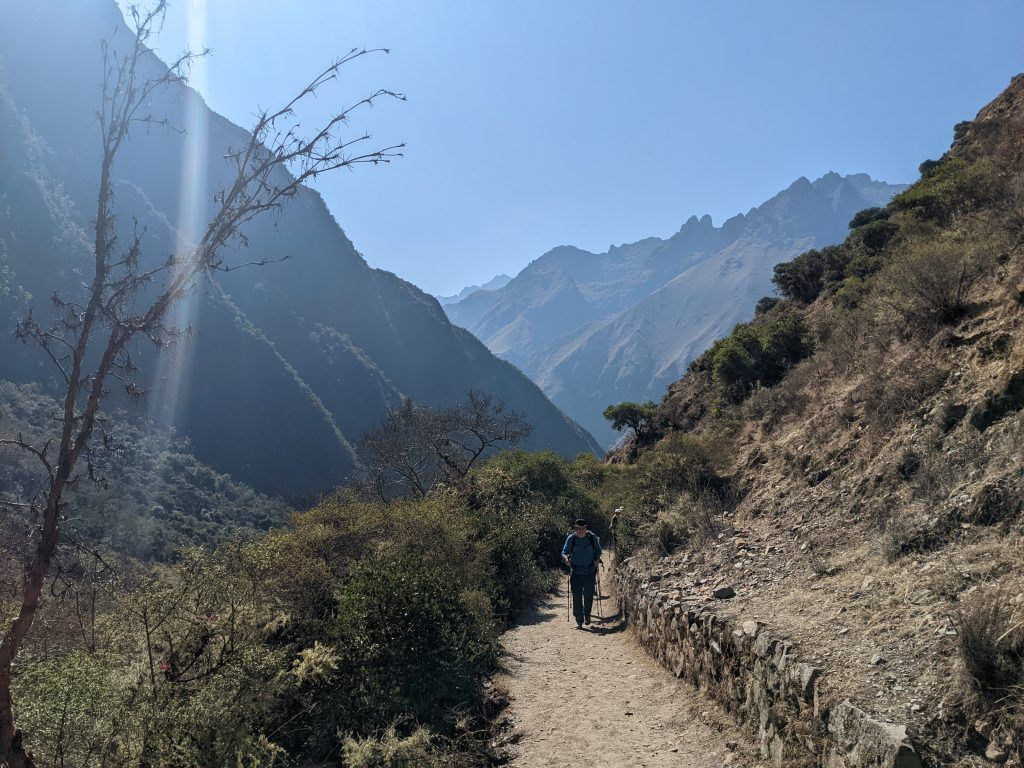
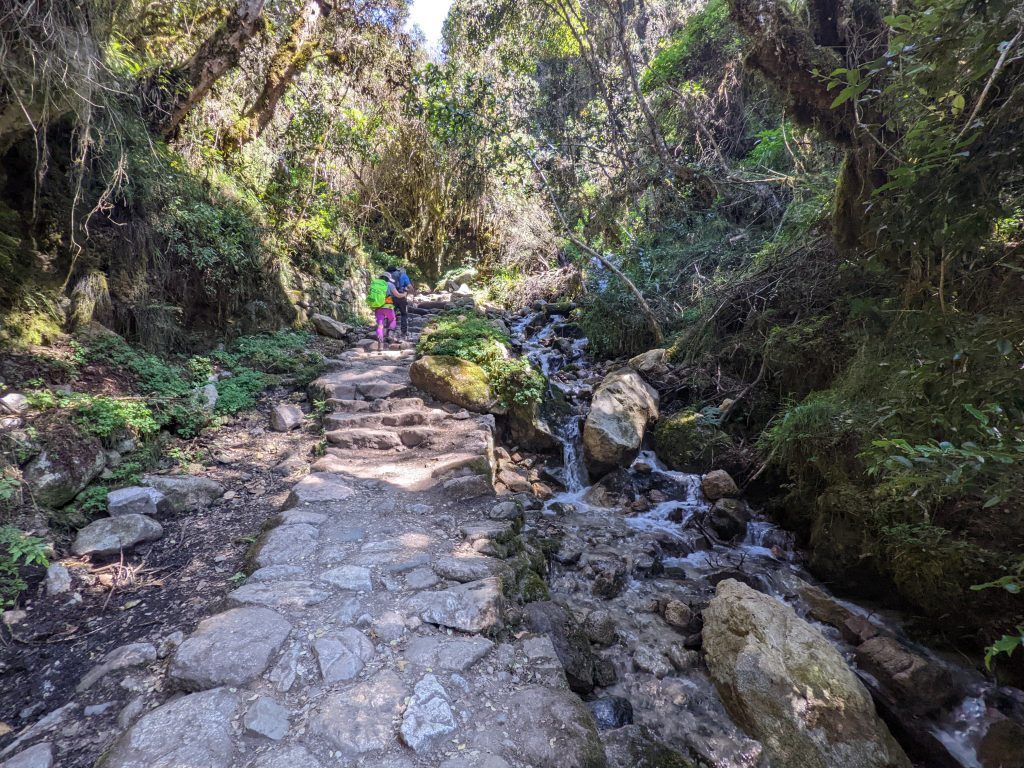
Our lunch spot for day 2…
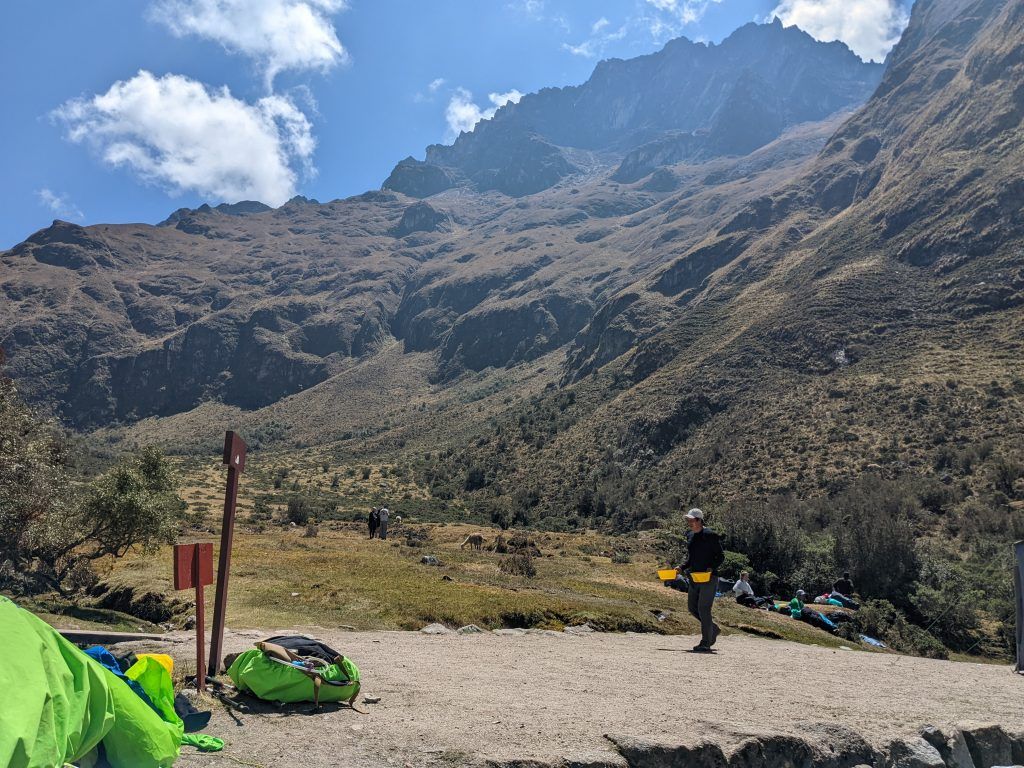
…with some local guests.
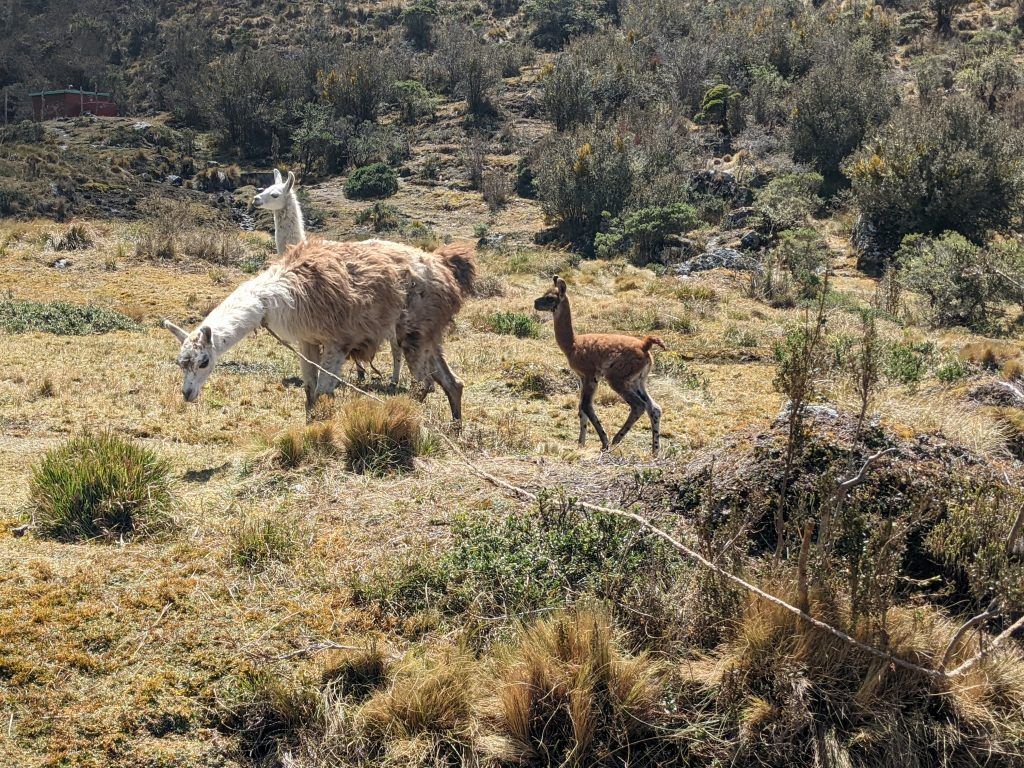
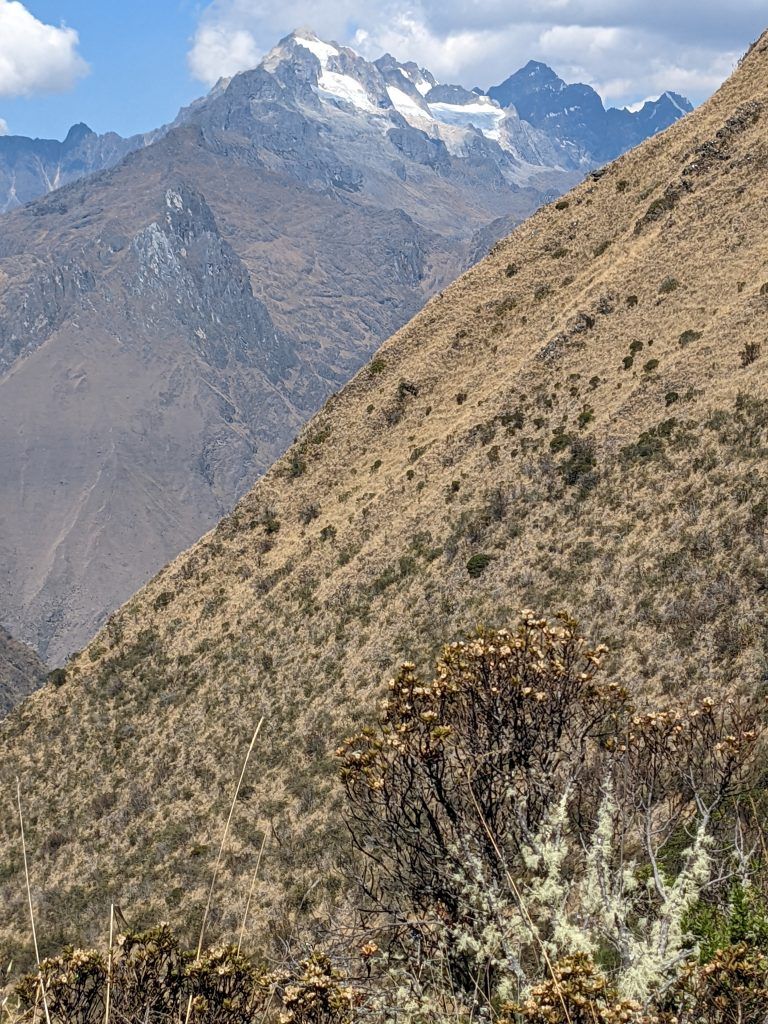
After six hours of straight climbing we made it to Dead Women’s Pass at 4200 meters (13,800 feet).
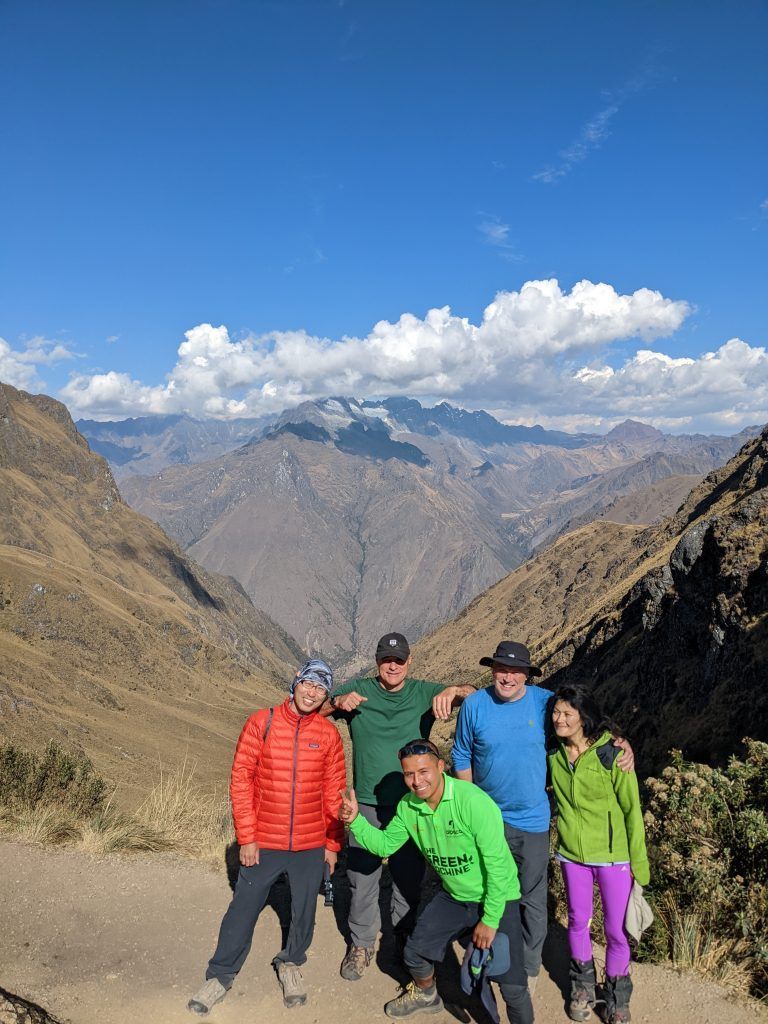
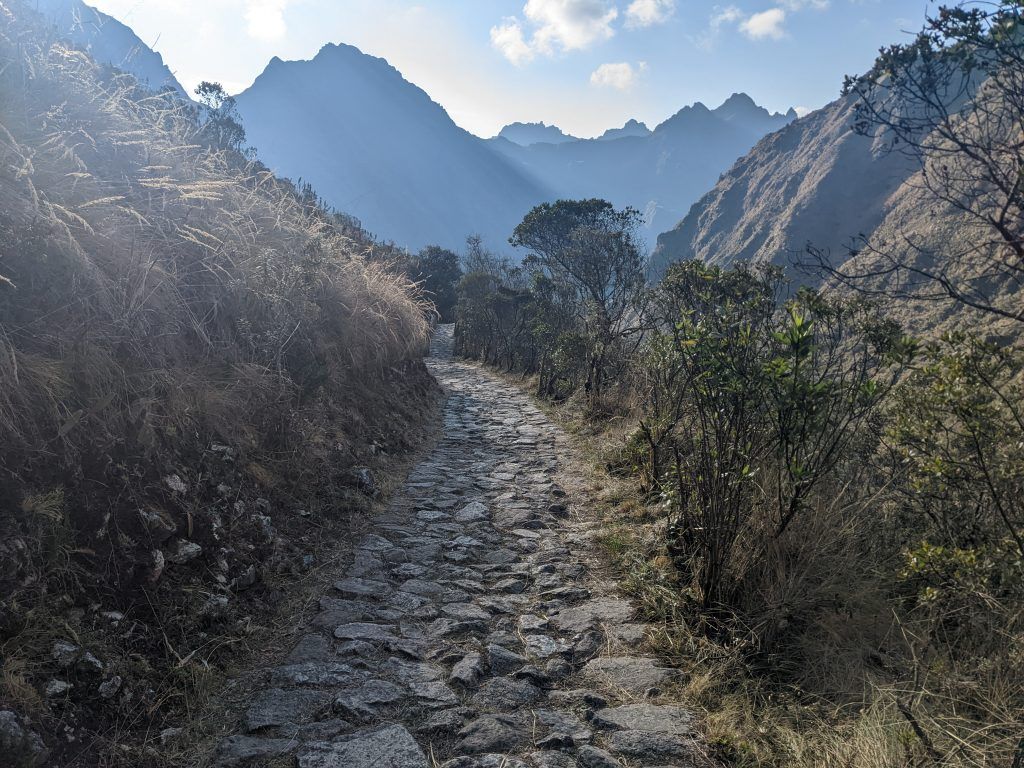
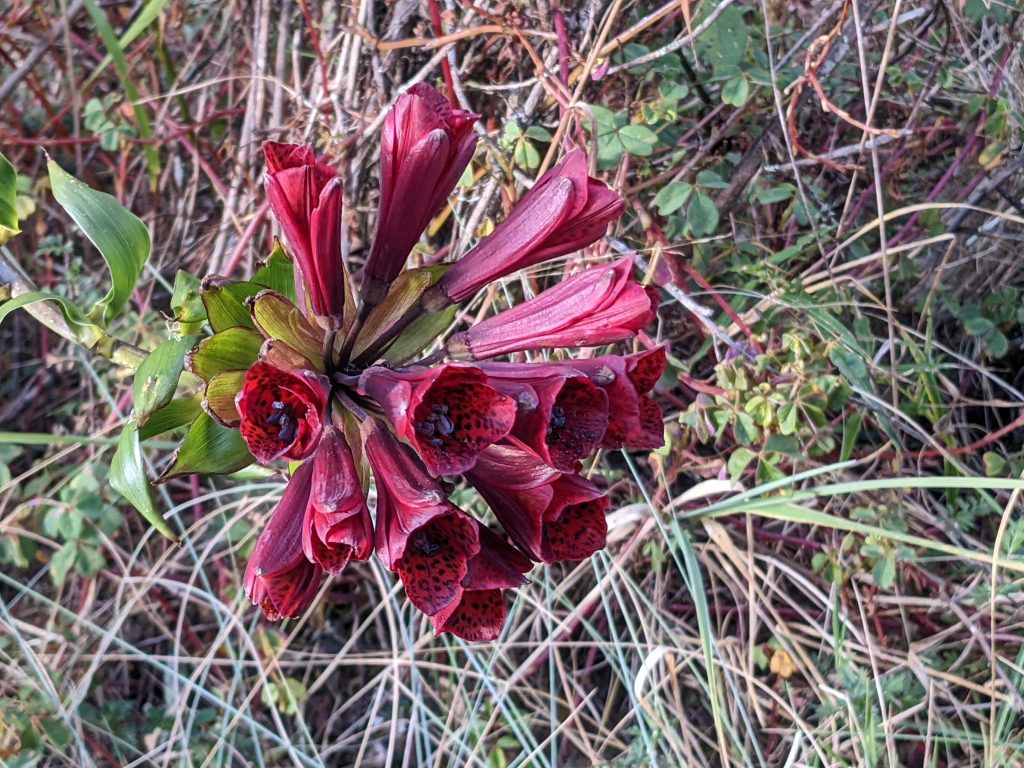
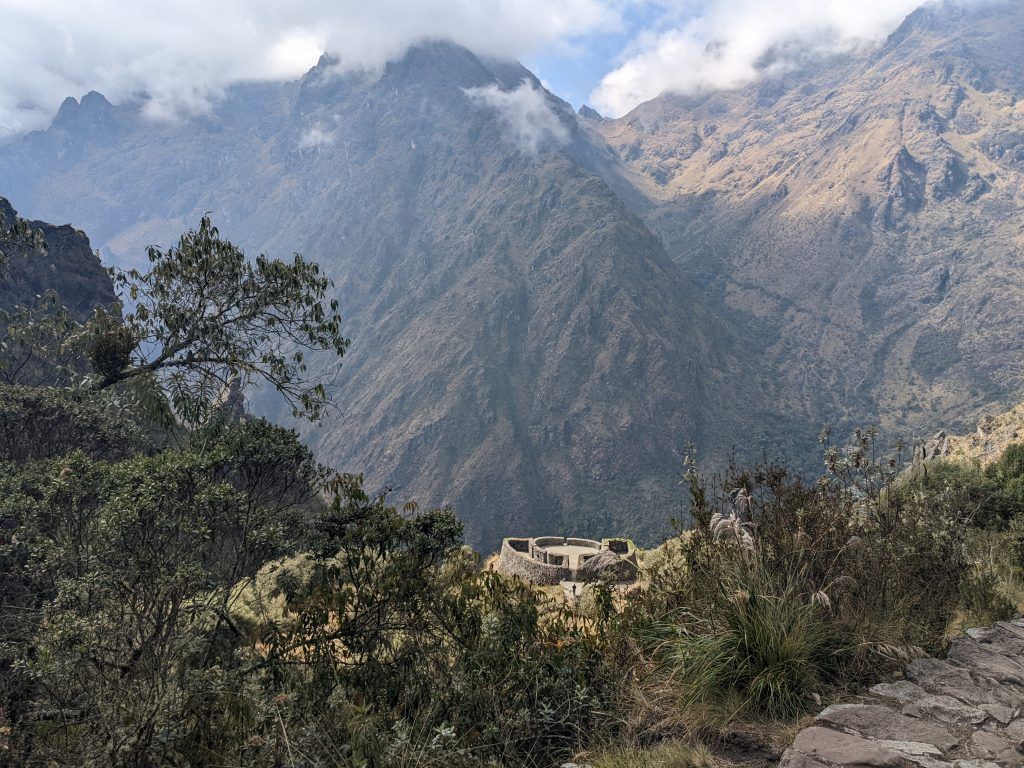
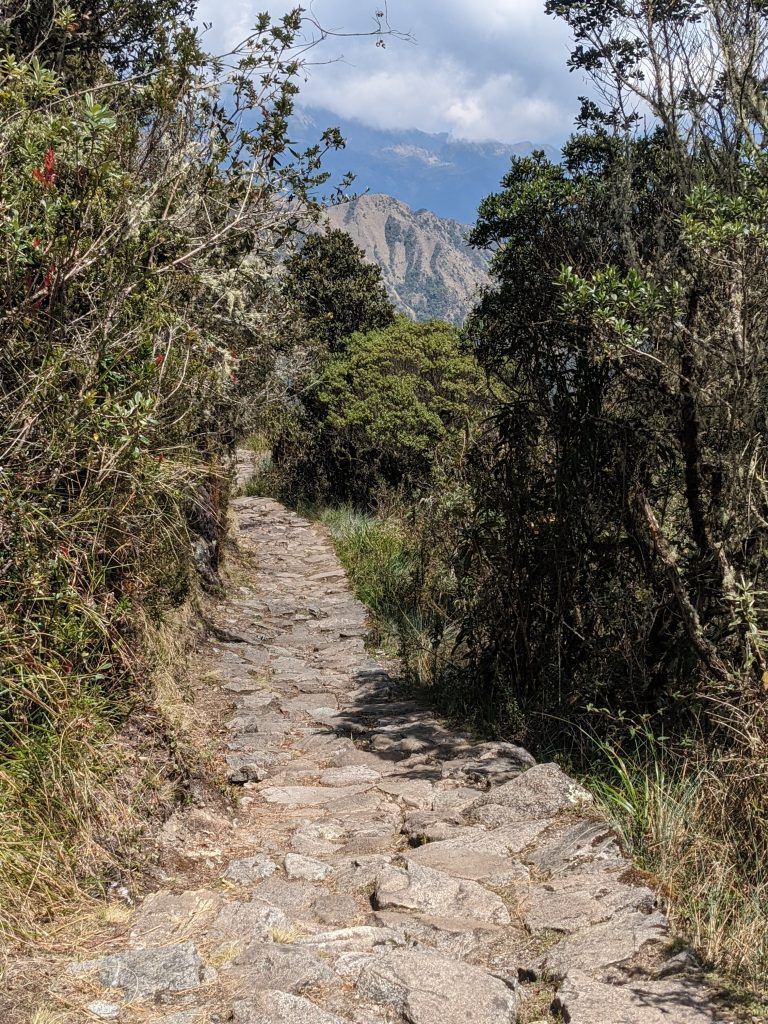
The amazing Inca site of Sayacmarca
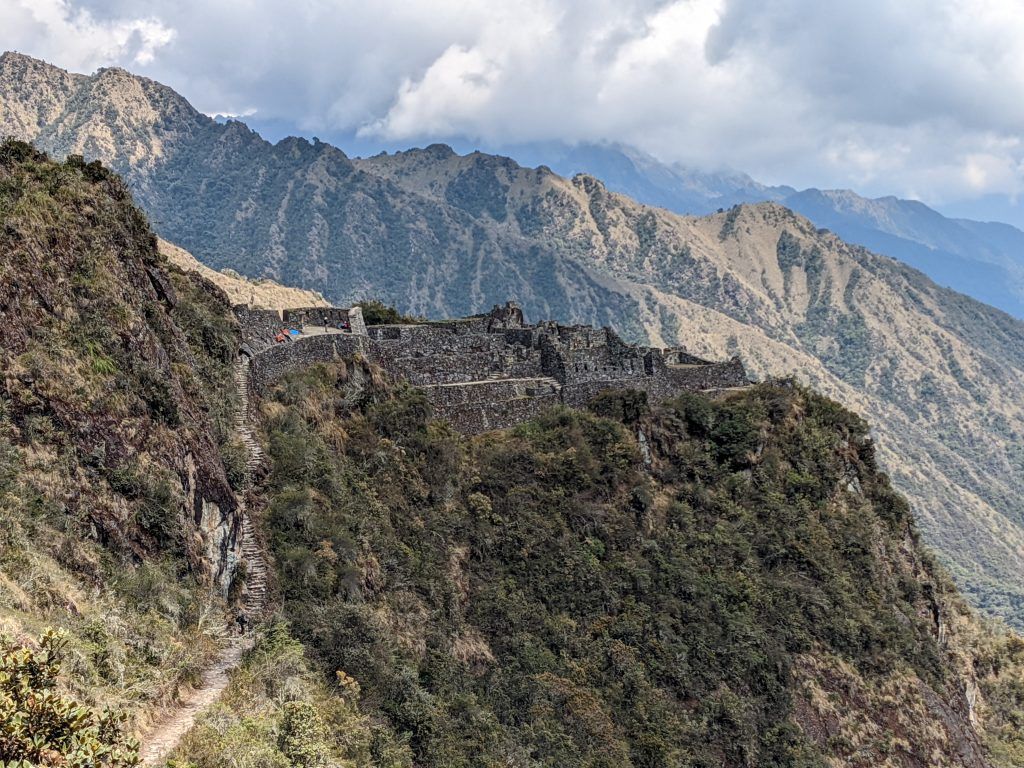
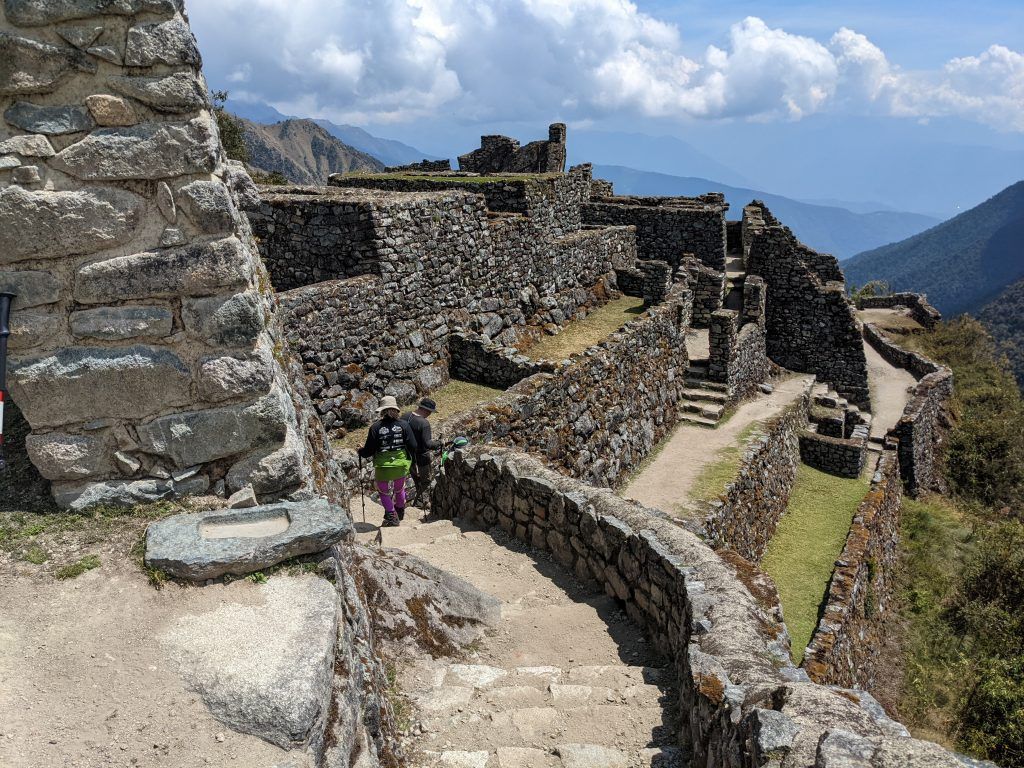
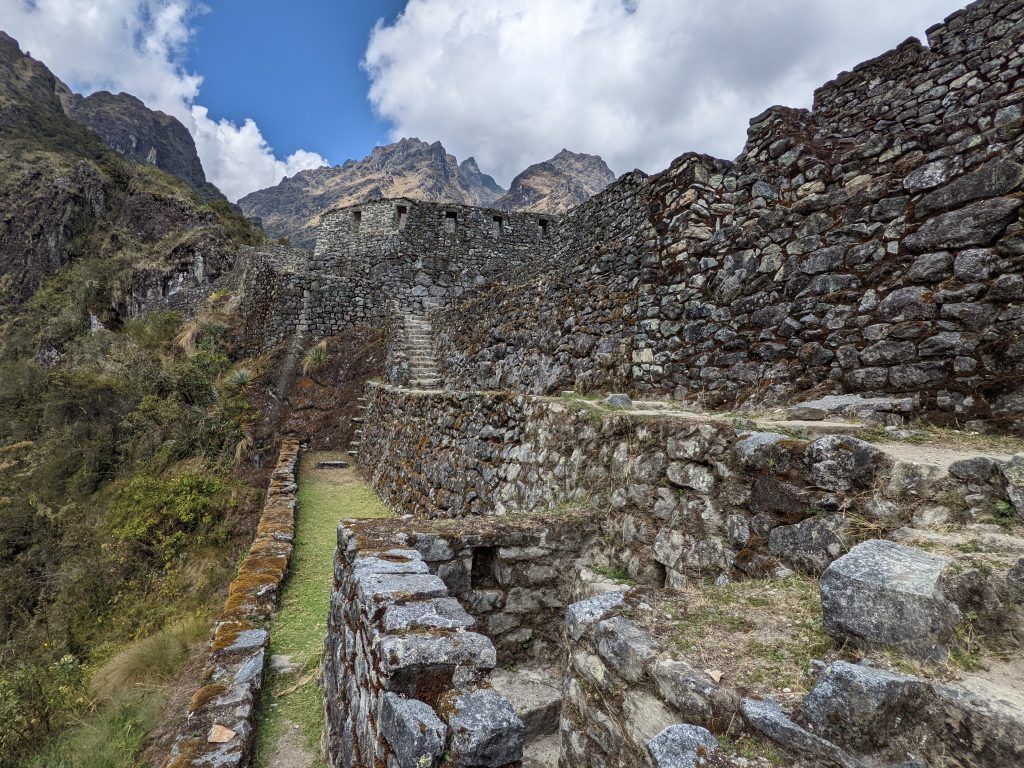
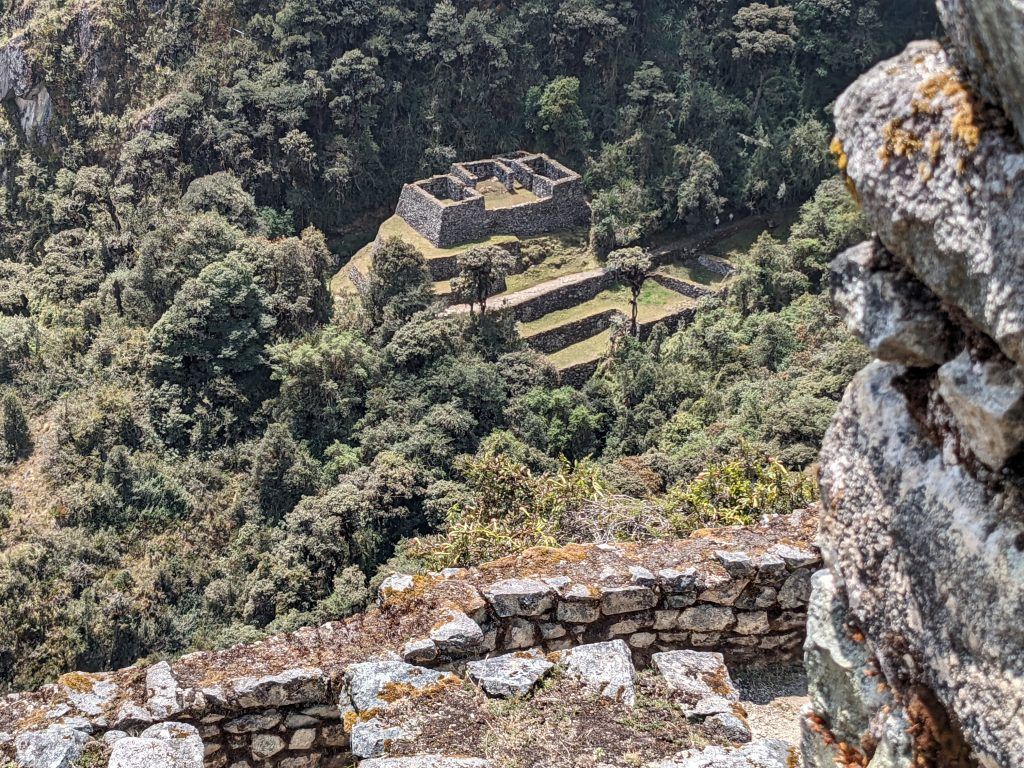
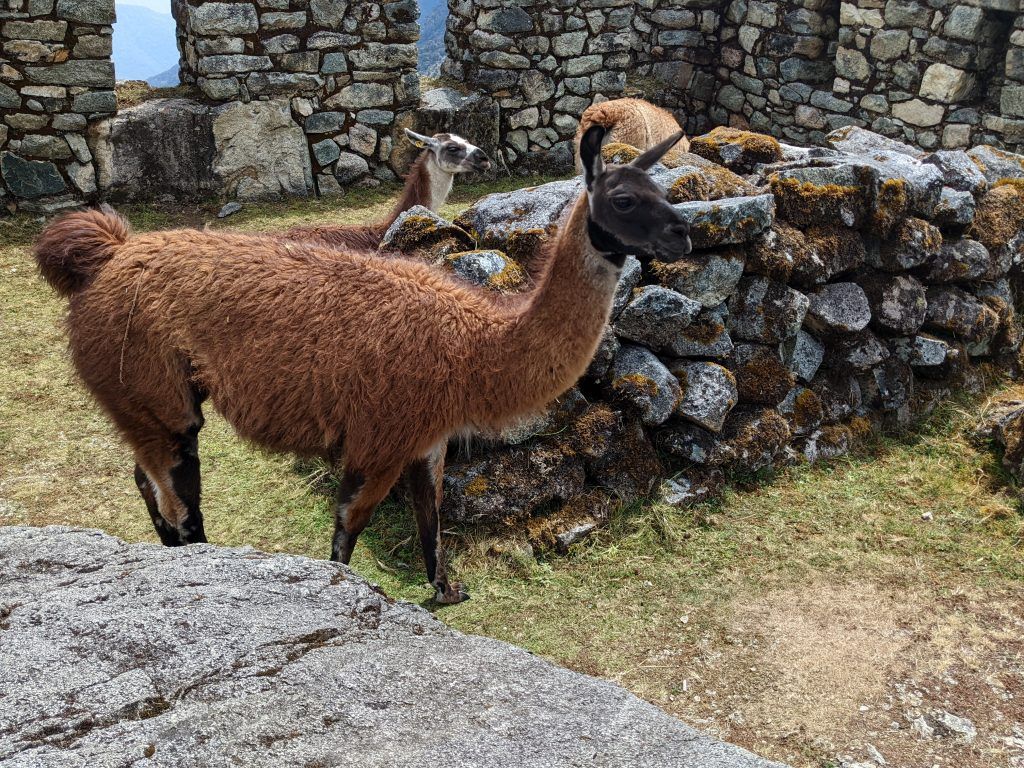
After completing Dead Women’s Pass I treated myself to chewing on some coca leaves Juan Carlos gave me. My mouth and my head got pretty numb and the hiking definitely got easier 🙂
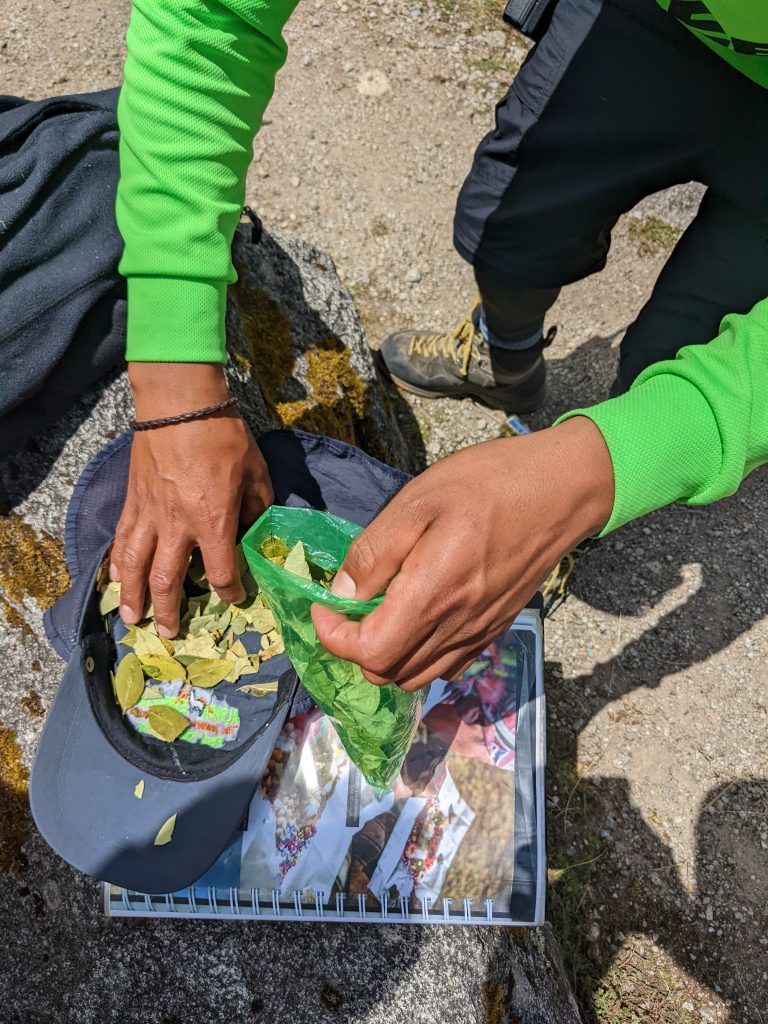
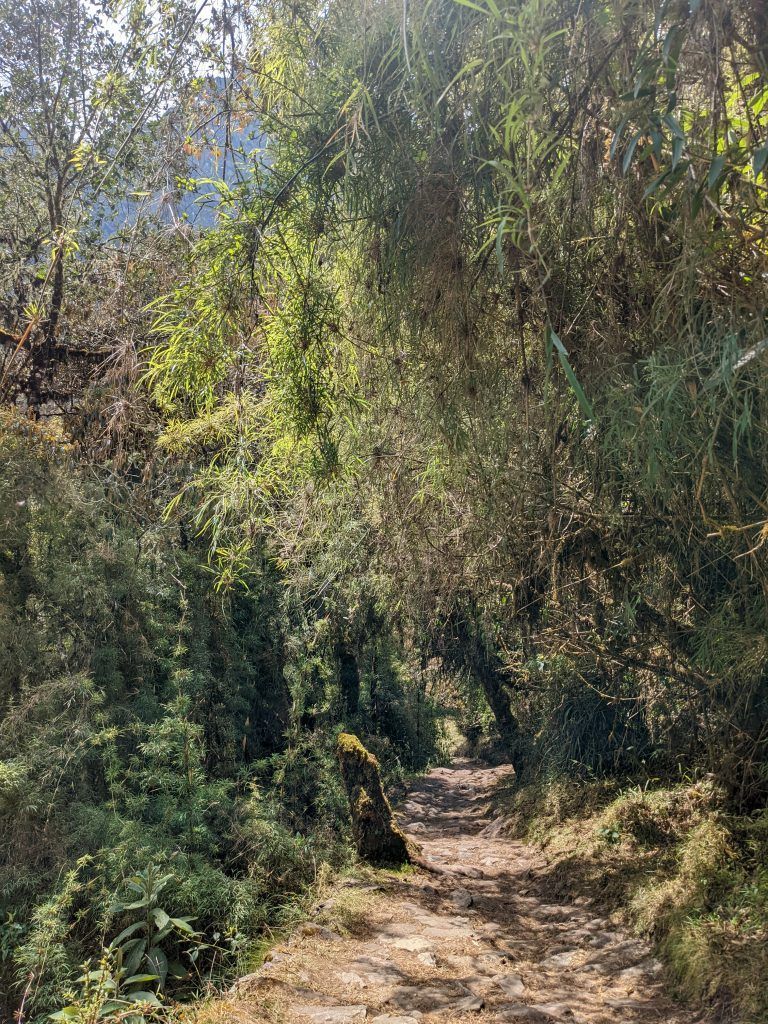
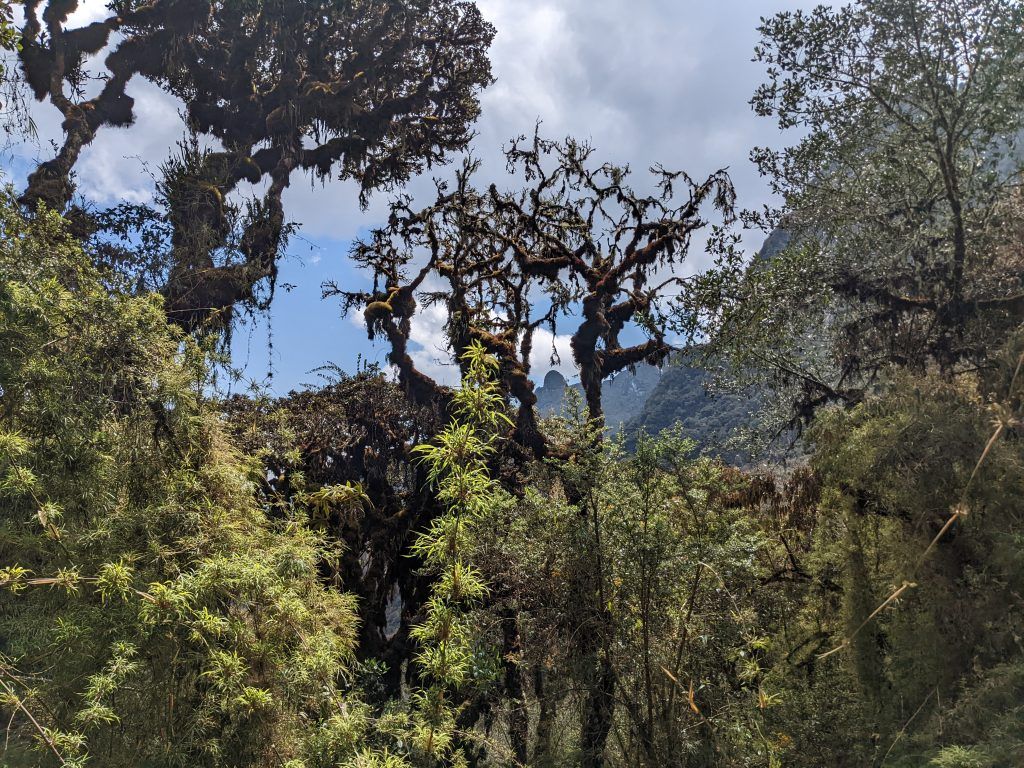
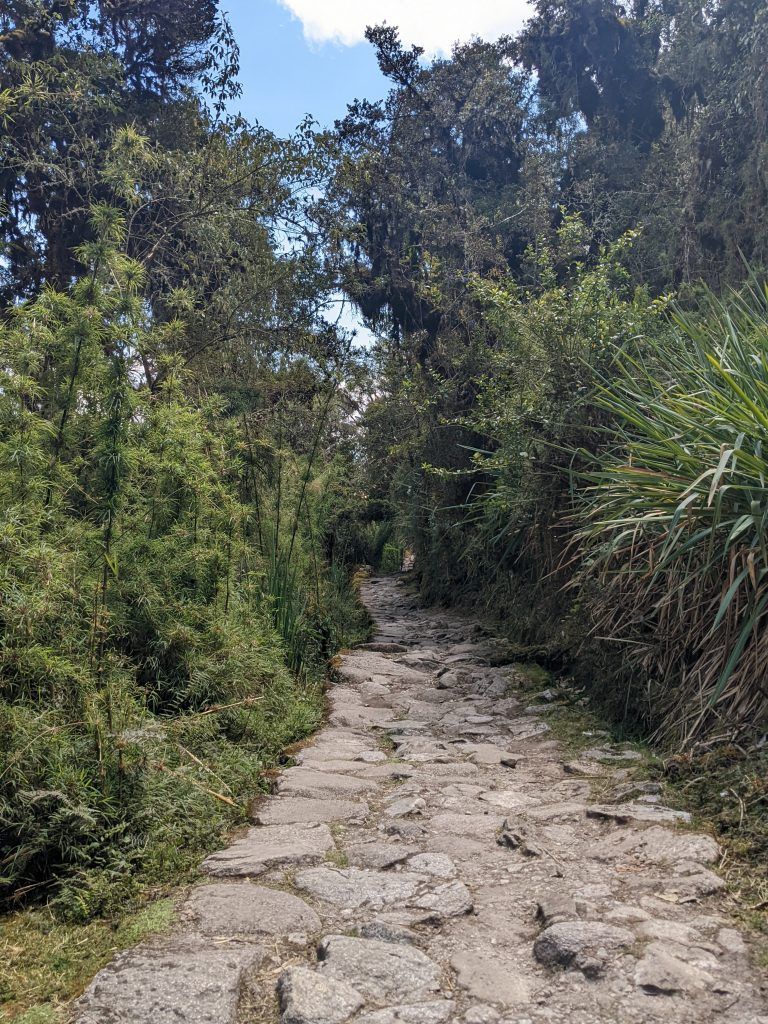
Our incredibly scenic campsite for night 2.
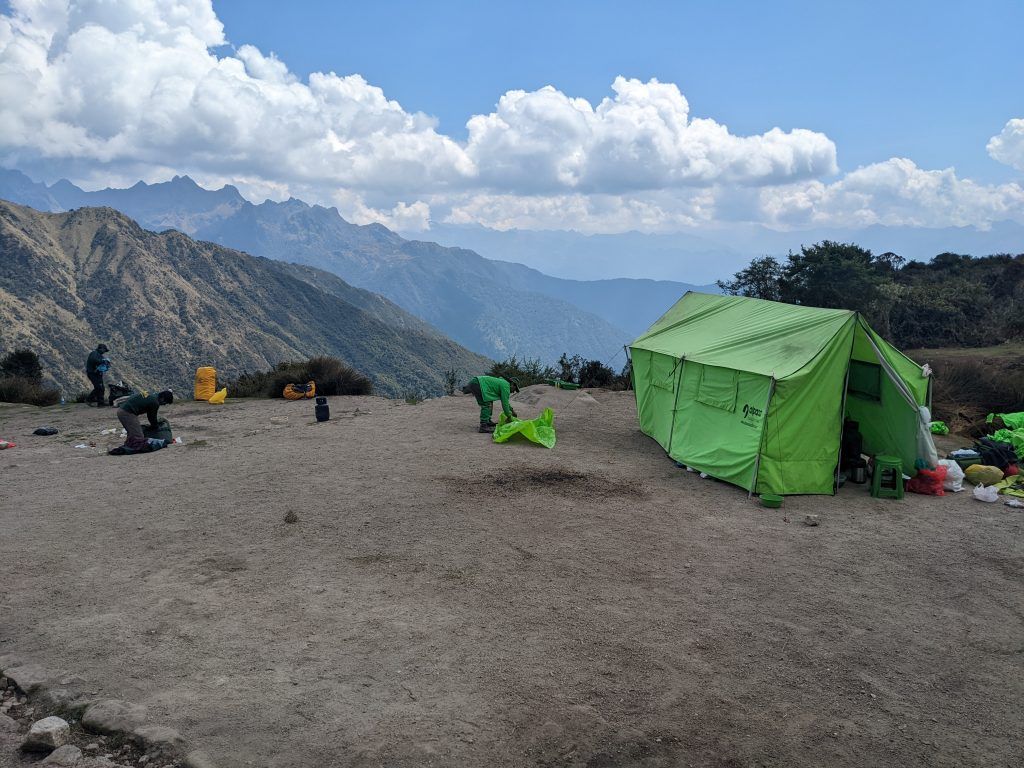
Day 3: Pacaymayo to Phuyupatamarca
Our third day itinerary courtesy of Alpaca Expeditions:
After breakfast, we will continue our hike up the opposite side of the valley, as we make our way towards the second pass on the trek. Along the way, we will see fantastic views of waterfalls and flora and fauna. Halfway up, we will stop and visit the Inca site of Runcu Raccay (an Inca watchtower), and to catch our breath before we continue our climb to the pass (4,000 meters). From the pass, we will once again begin our descent back into the cloud forest and continue to our lunch spot at Chaquicocha (dry lake). Here you will see some of the fantastic flora and fauna the Inca Trail has to offer. From Chaquicocha onwards, we will walk along Inca flat (gradual inclines), as we make our way towards our final campsite, Phuyupatamarca (3,680 meters). This area of the Inca Trail has stunning views of the Vilcabamba mountain range, as well as abundant flora and fauna. After another two hour walk, we’ll arrive at our campsite, where we’ll get our first view of Machu Picchu mountain and the Urubamba river. As the sun goes down, we can enjoy the beautiful sunset over the snow-capped peaks.
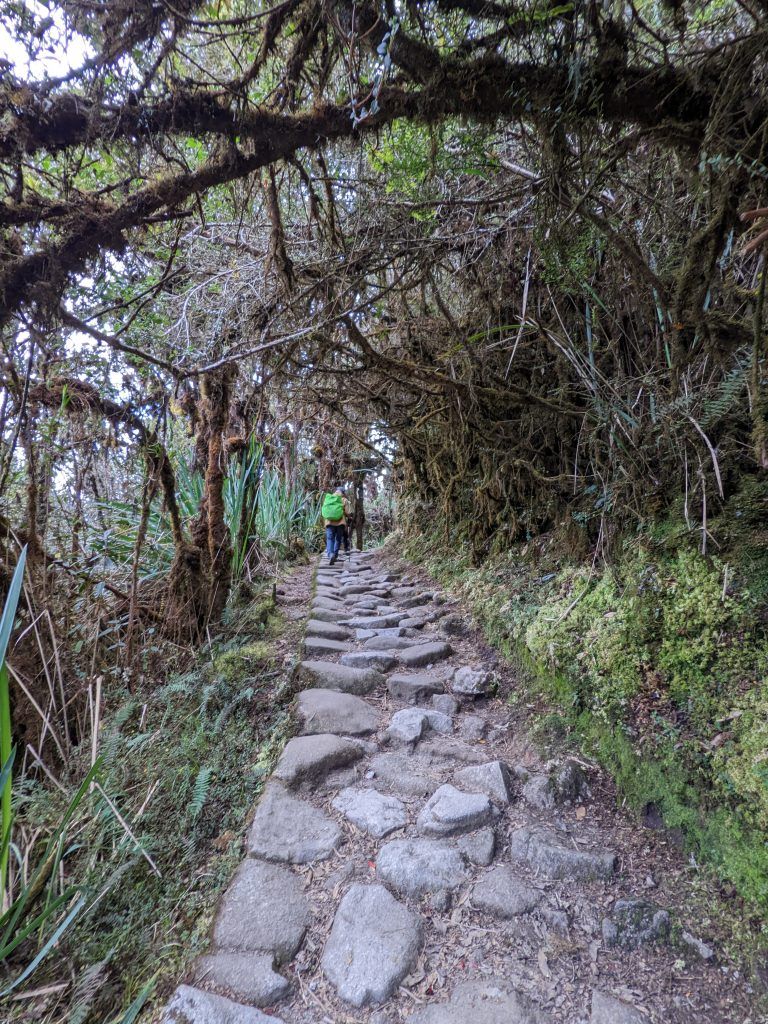
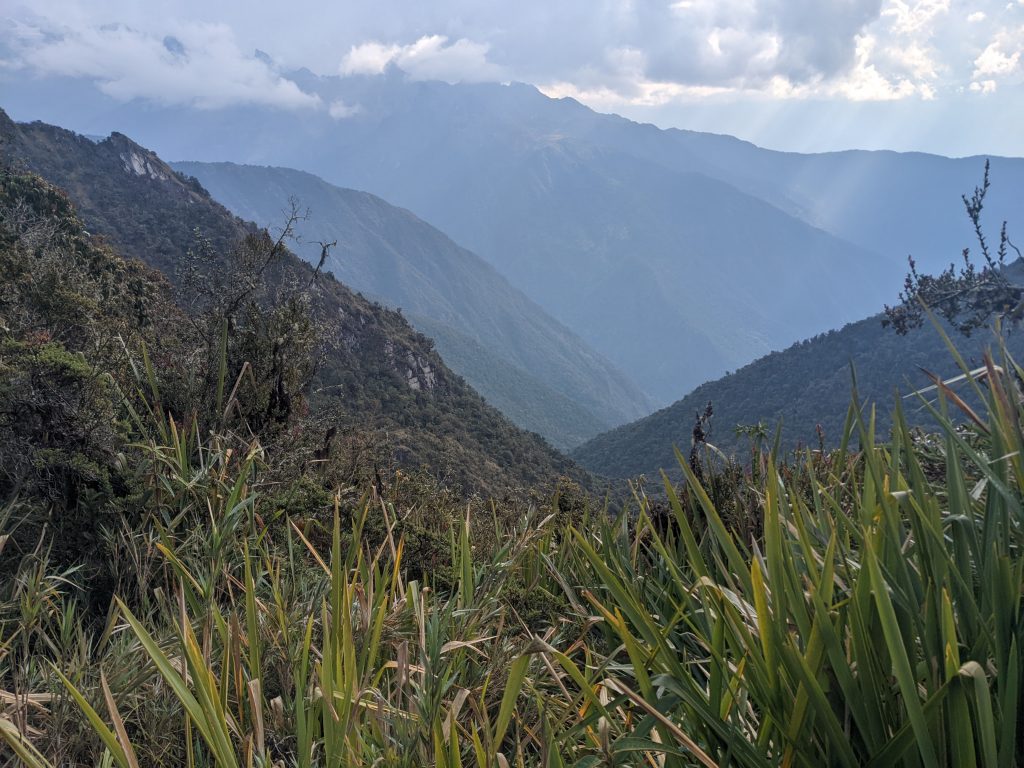
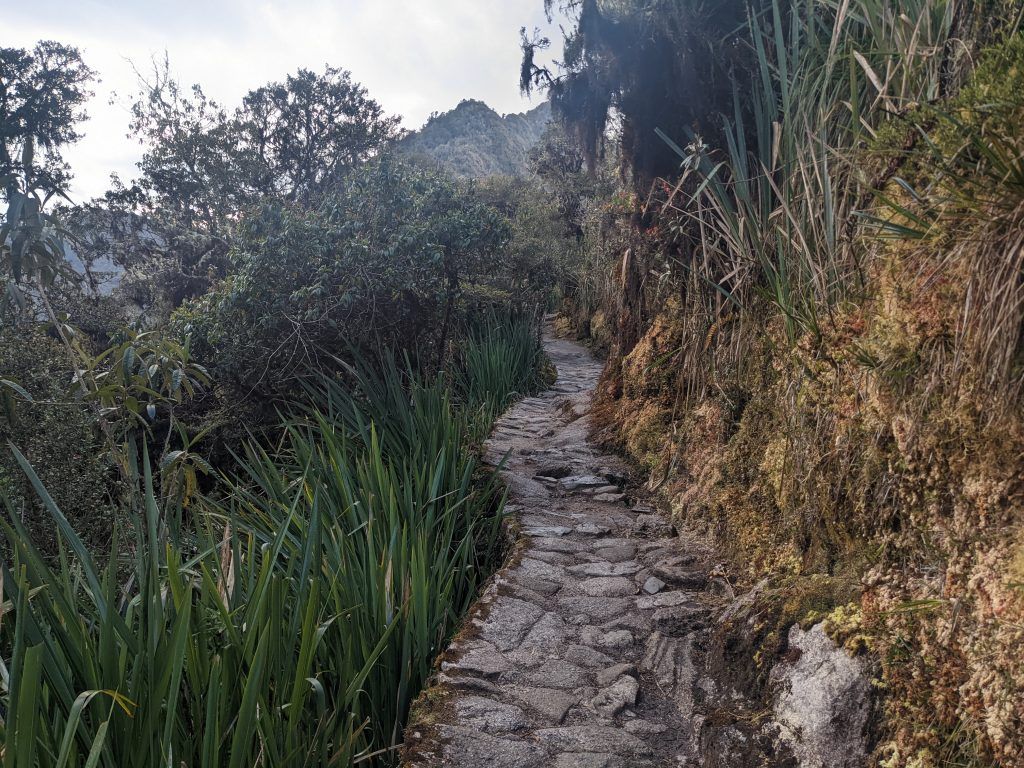
In many places the trail was carved right into the side of the mountain with 20-30 meter drops to our side. It was a good test of my fear of heights on these narrow footpaths.
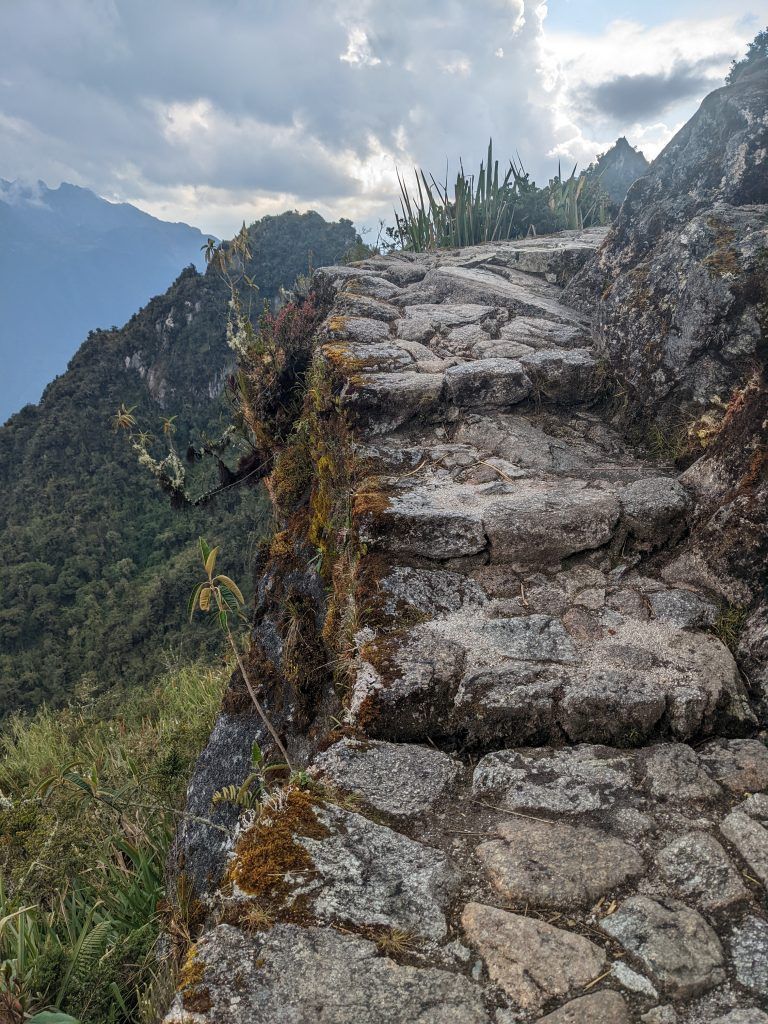
Our final night’s campsite.
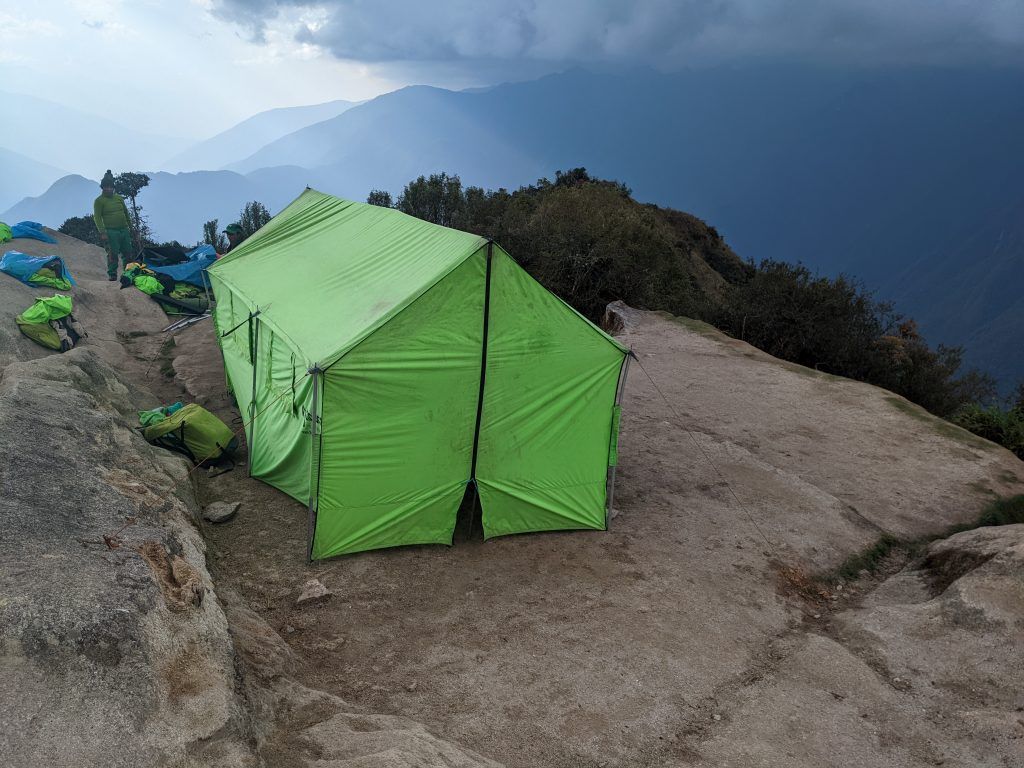
Just after we got to camp the skies opened up with thunder and hard rain, and then hail and snow. Some of the snow hung around.
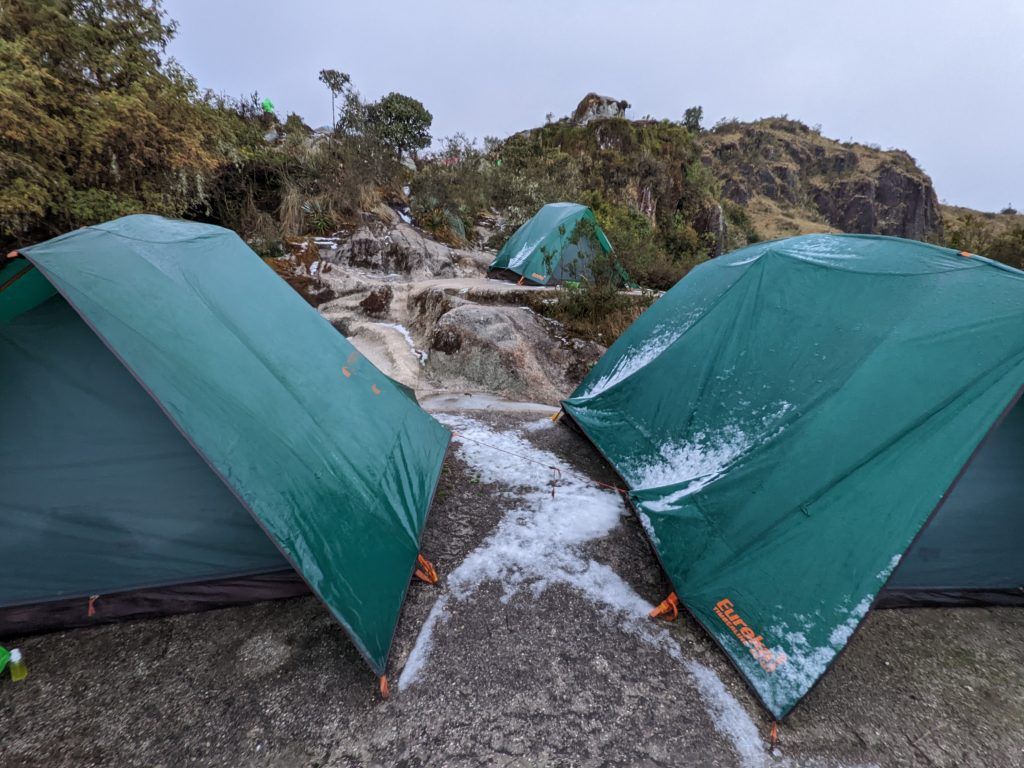
Day 4: Phuyupatamarca to Aguas Calientes
The itinerary for our final day of hiking:
Today, we will have the chance to enjoy one of the most spectacular sunrises on the Inca Trail, weather permitting. After breakfast, you´ll have a guided tour of Phuyupatamarca. We will then start our way down the long descending stone steps to Wiñay Wayna 2,650m/8,692ft, where we will have lunch. As we near the bottom of the staircase, we will visit the site of Intipata (Terraces of the Sun). This site has beautiful views of the Sacred Valley and was an important agricultural site for Machu Picchu. After Intipata, we will continue to Wiñay Wayna, the archaeological site that is the largest on the Inca Trail besides Machu Picchu. It consists of an impressive complex made up of an agricultural center, with numerous terraces, a religious sector, and an urban sector. This site offers
spectacular views over the already narrower Urubamba River valley. After our visit, we will have our last lunch with the porters. Following, it is a tradition on the Inca Trail to have a thanking ceremony for all the hard work the porters and cooks have provided. If you wish, you may leave a tip for them at this time. After we´ve said goodbye to our team, we will carry on to the Sun Gate (Inti Punku), where we will get our first views of Machu Picchu. It takes about an hour of hiking along a trail of flat stones in the highland jungle to reach the Sun Gate. From there, it is about another hour down to the site itself. Upon arrival, we´ll have a chance to enjoy the views of Machu Picchu before taking the bus to your hotel in Aguas Calientes.
The sun coming up over our campsite.
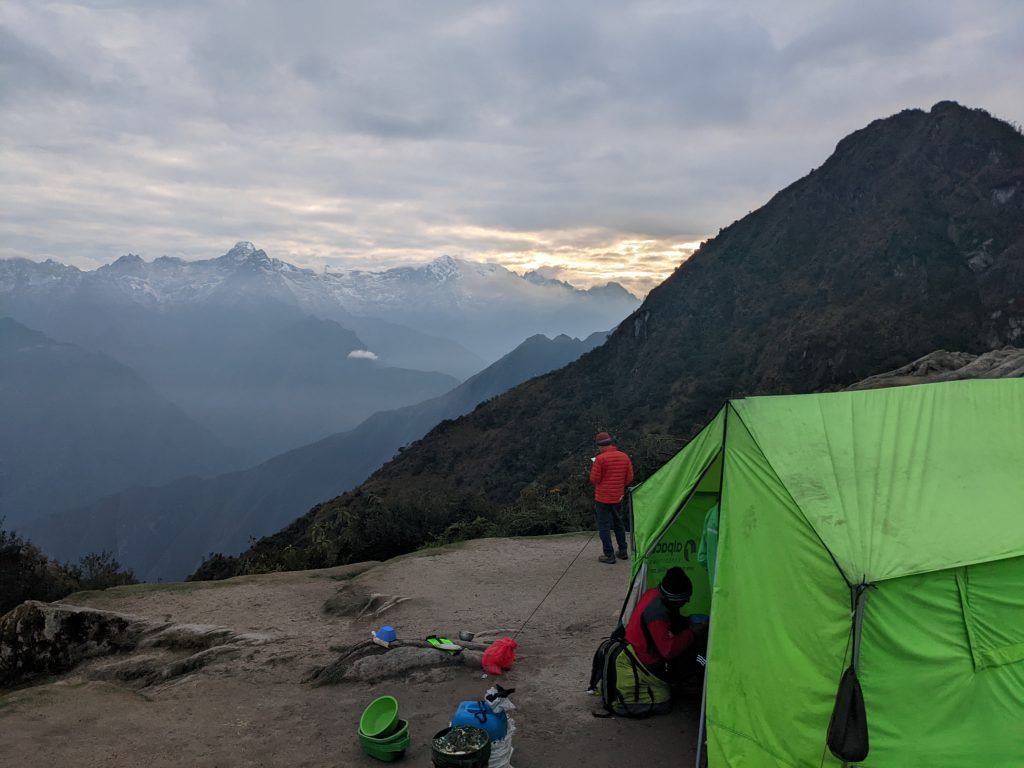
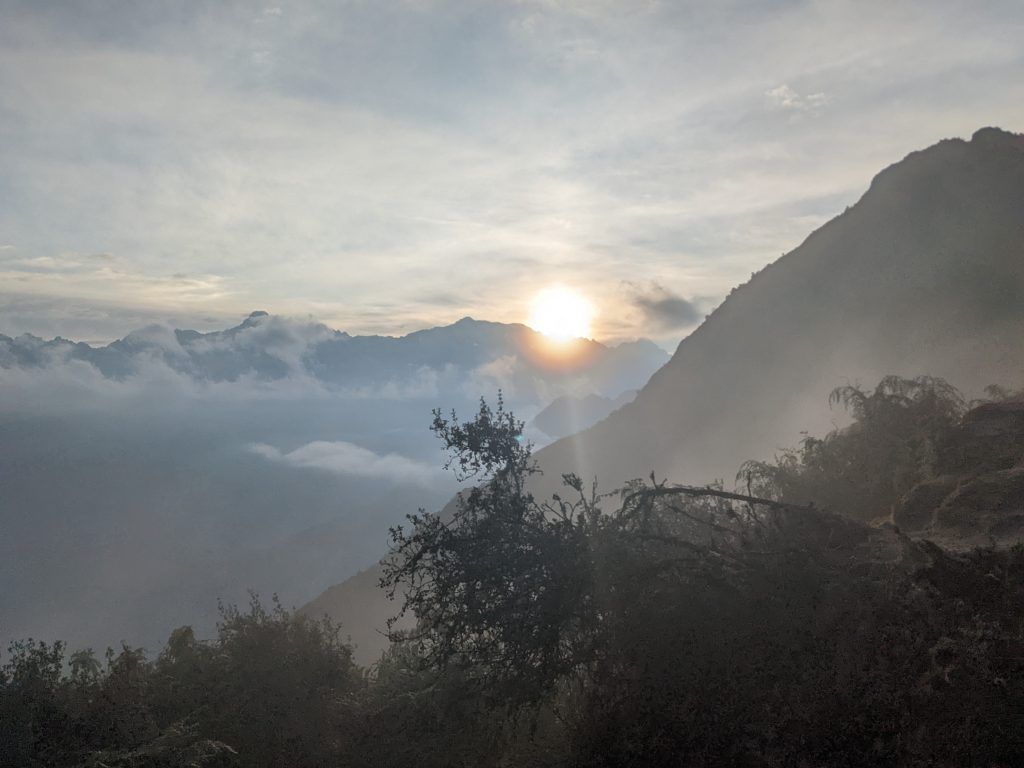
A goodbye coconut cake from our chef to set us off on our last day of hiking.
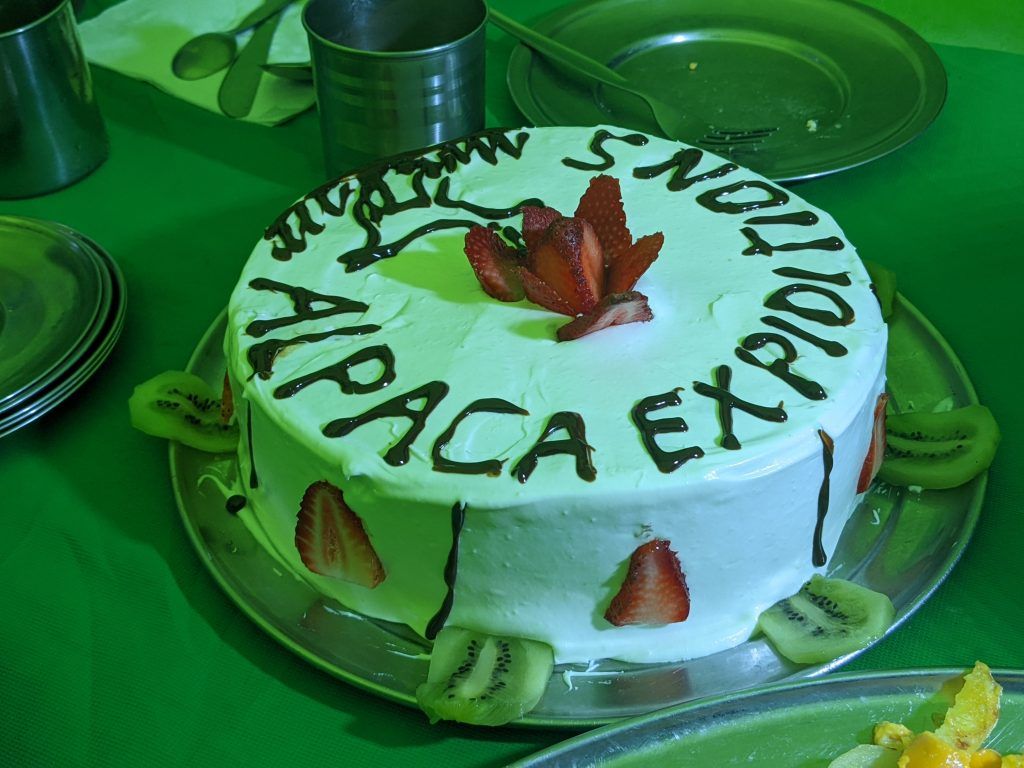
The ruins of Phuyupatamarca
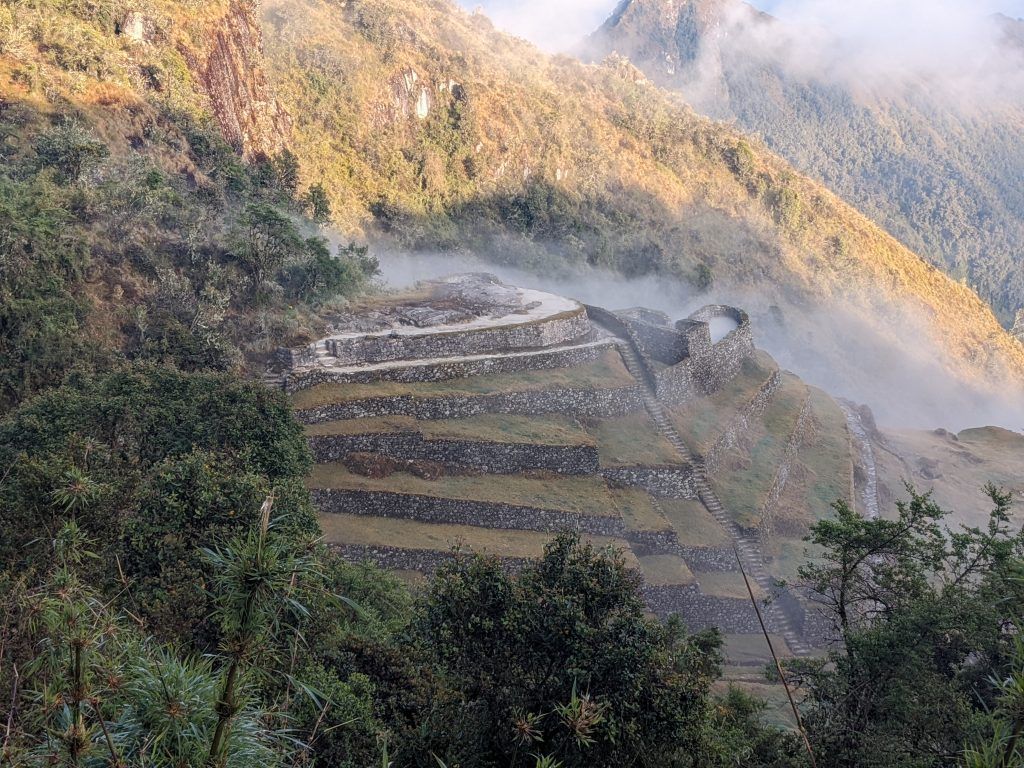
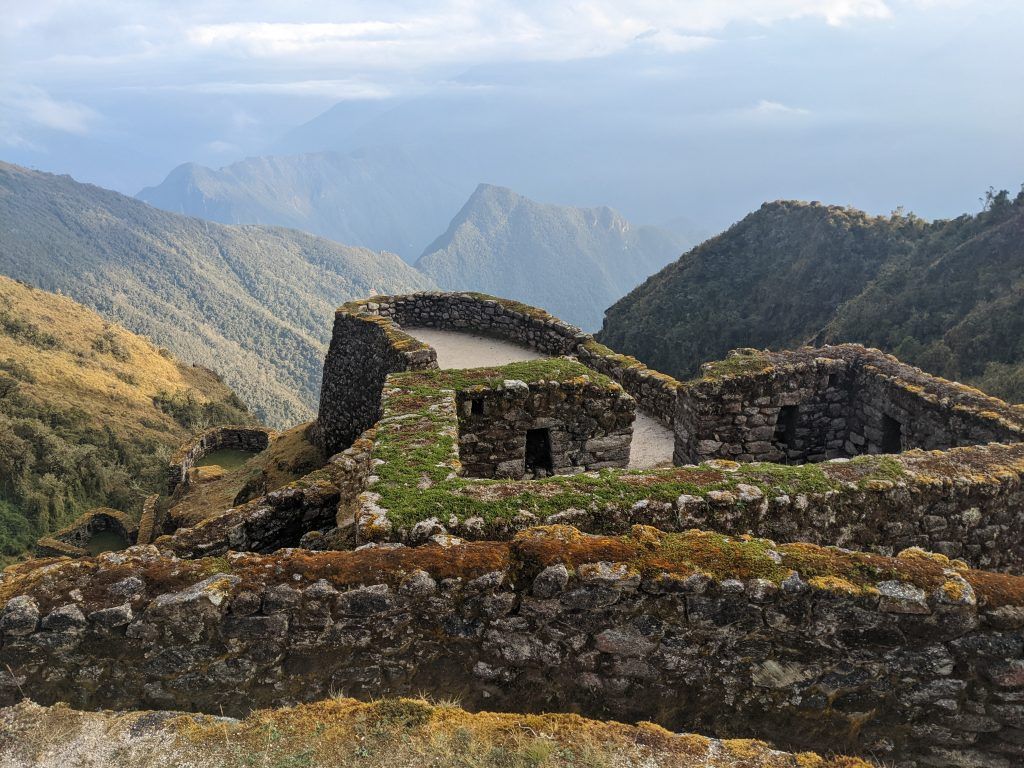
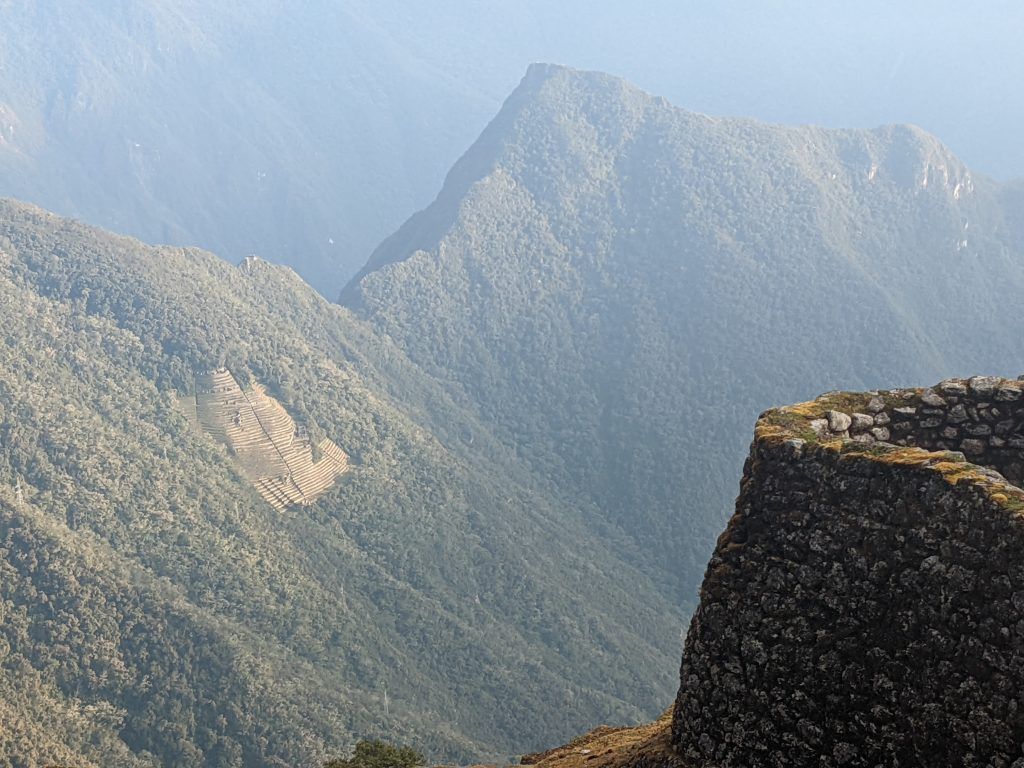
Lots of steep descending on this part of the trail.
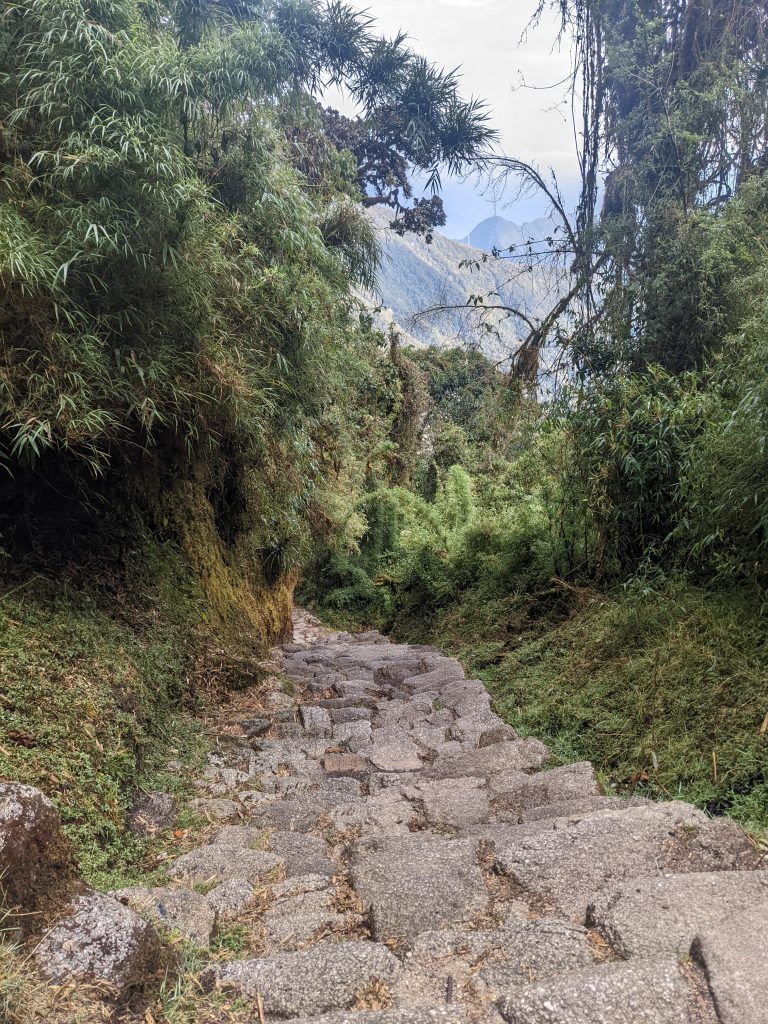
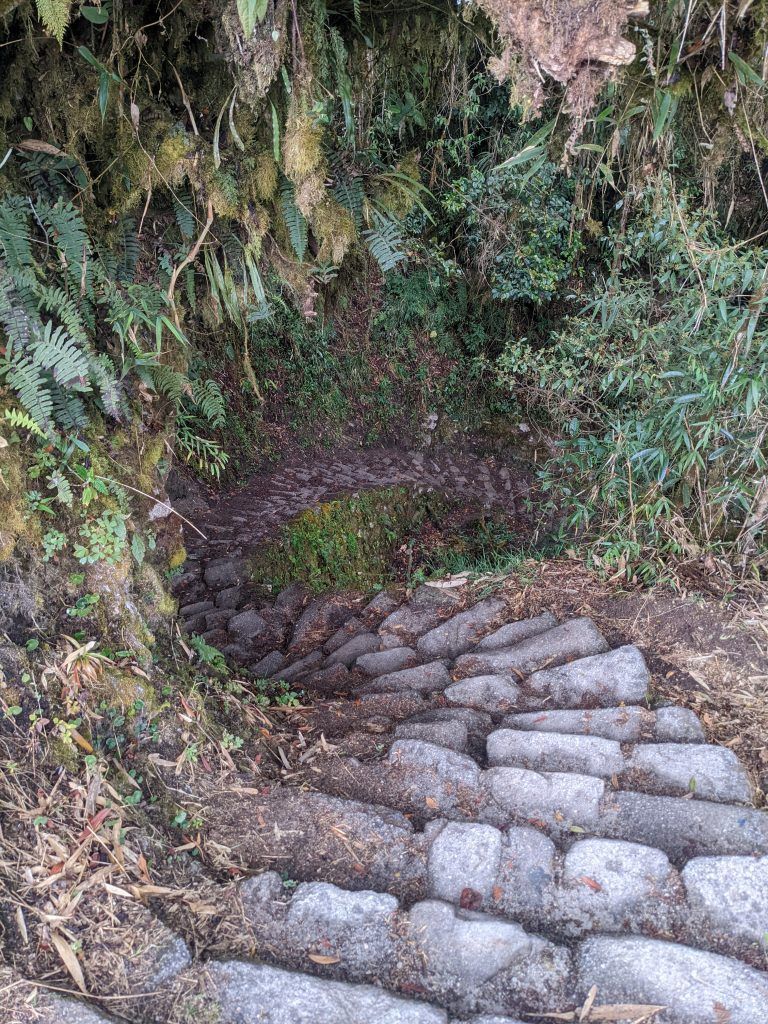
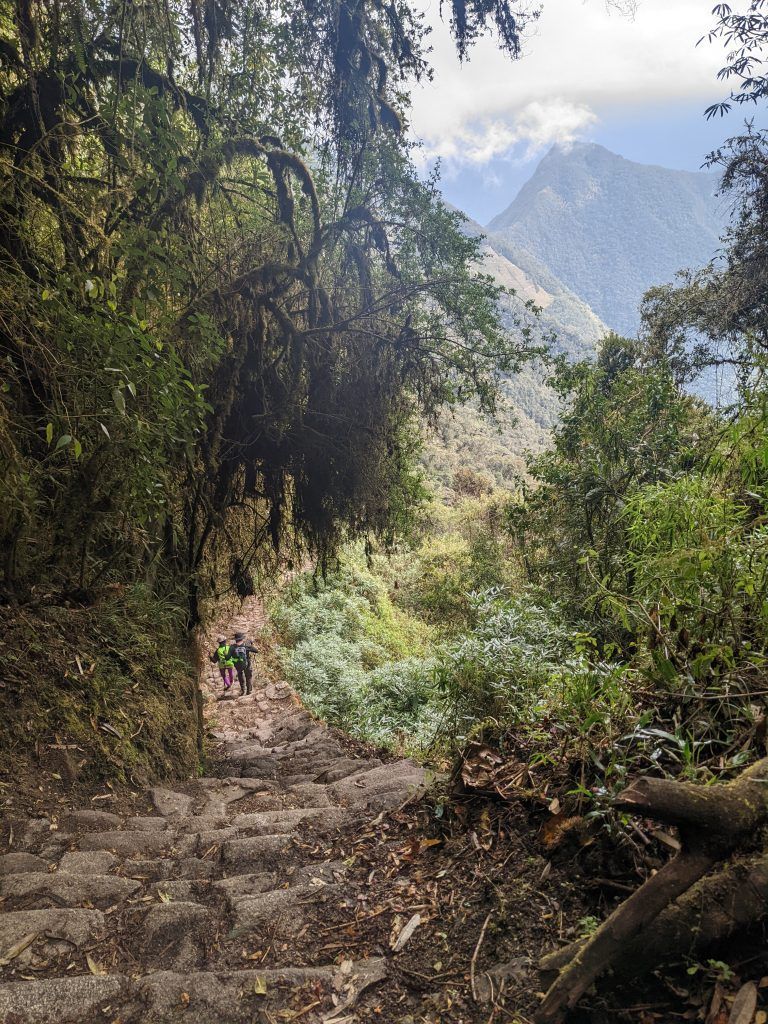
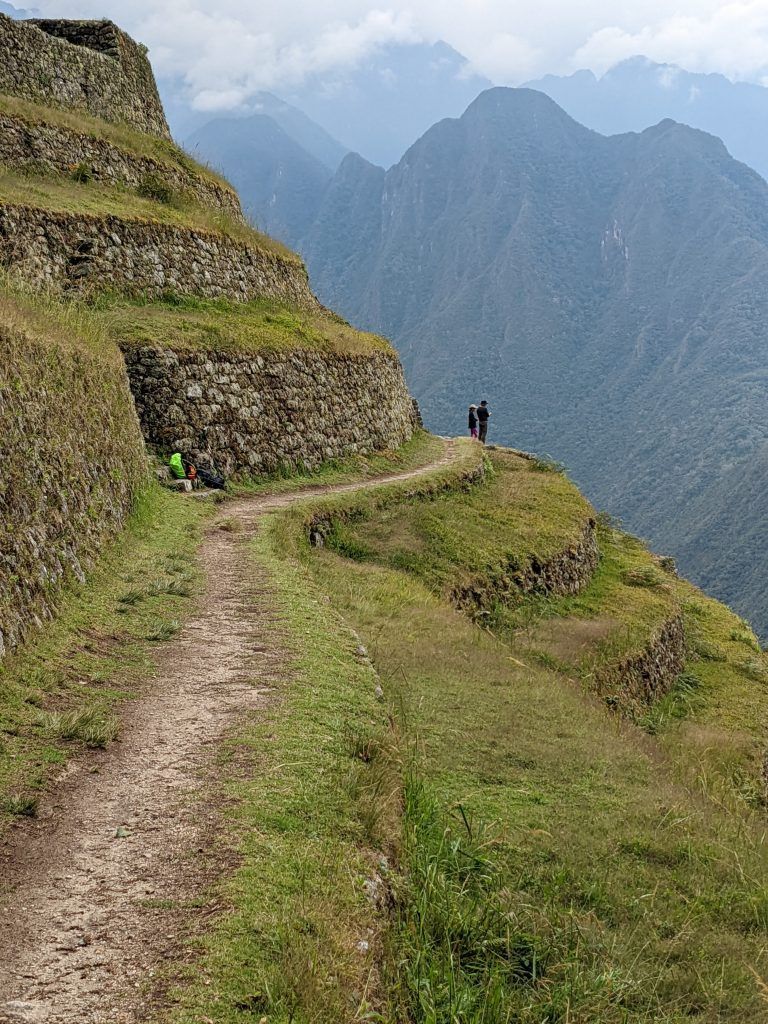
Looking down at the Urubamba River
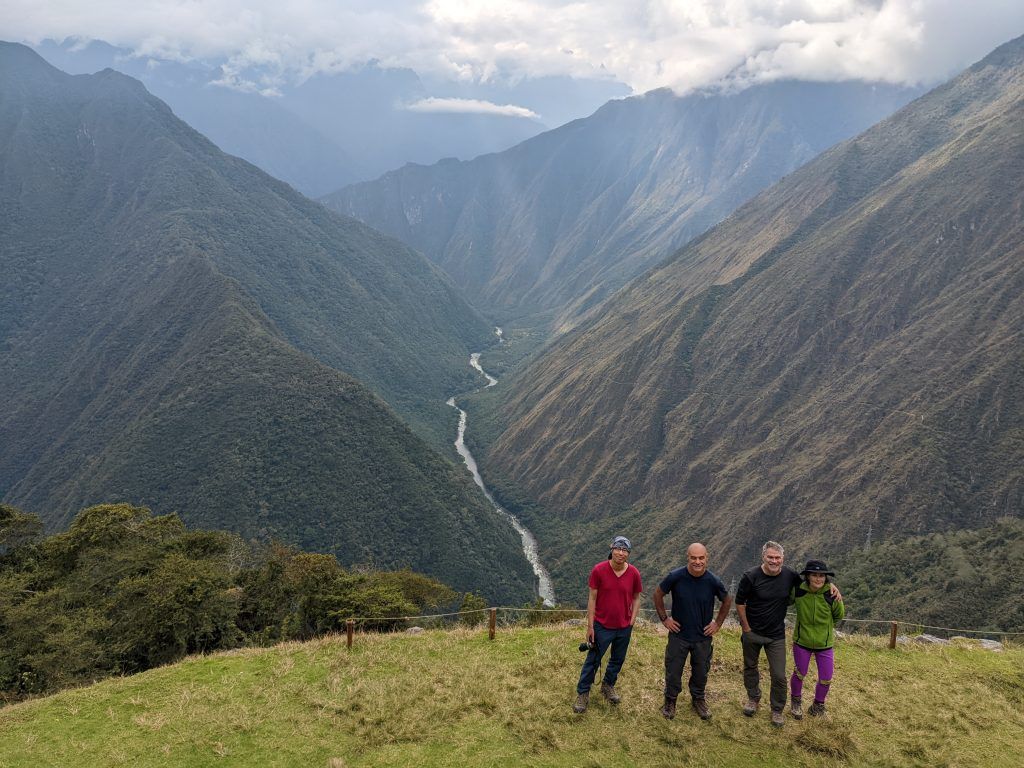
Winayhuayna is an amazing series of ruins. Many people call this the mini Machu Picchu.
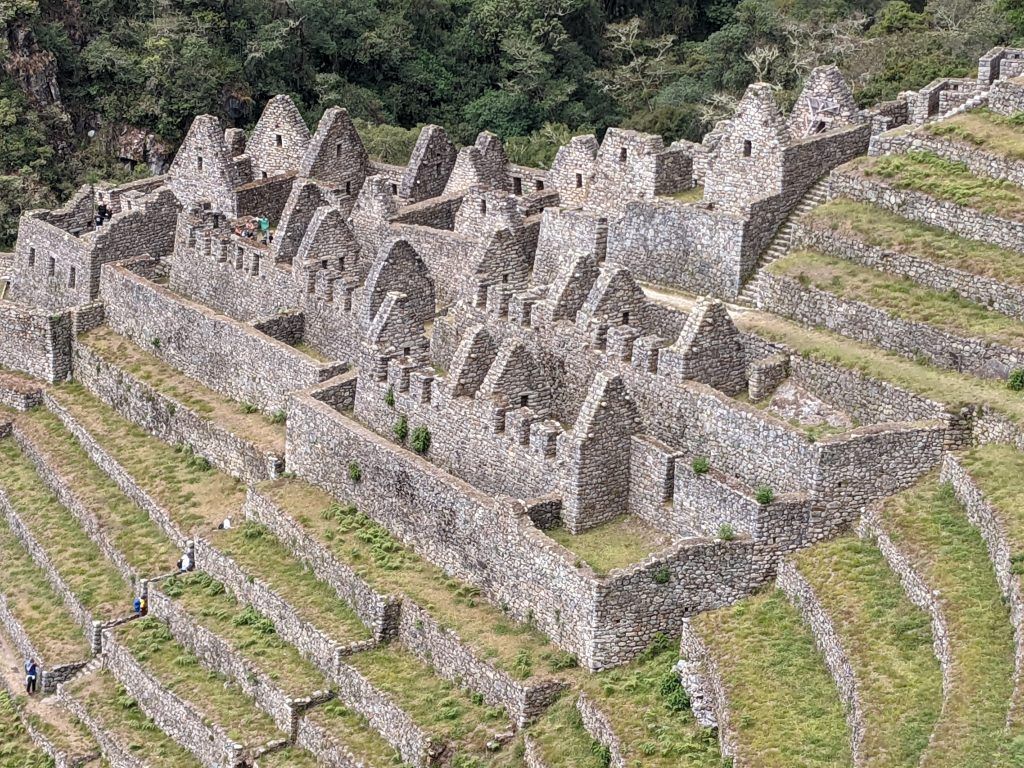
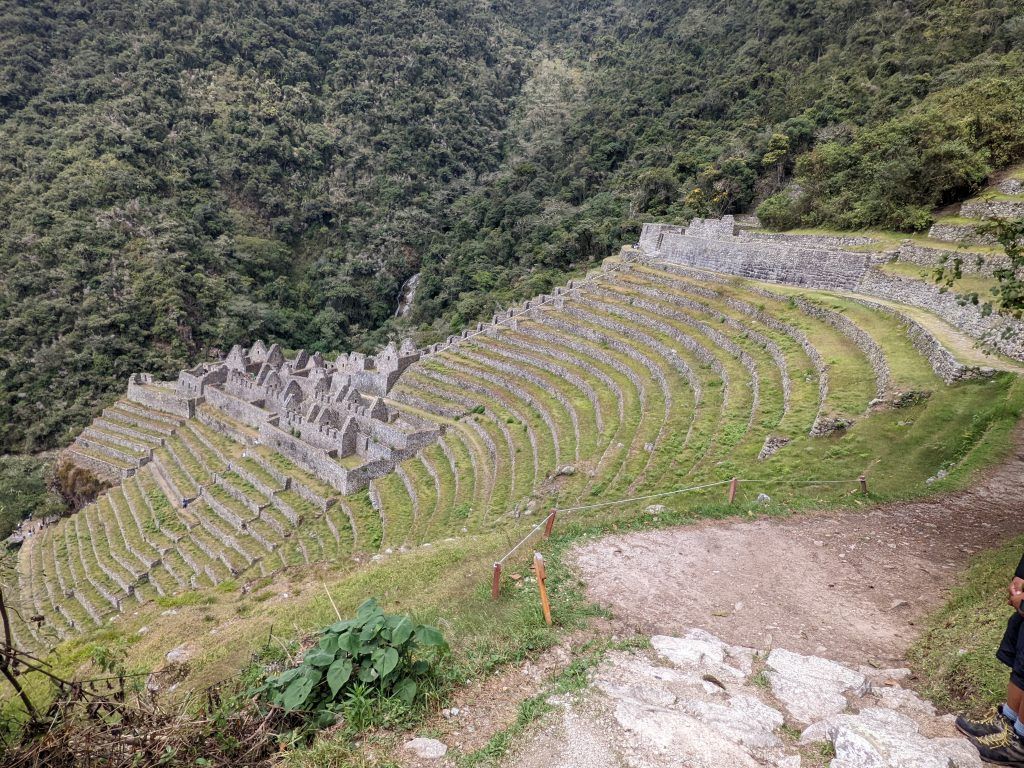
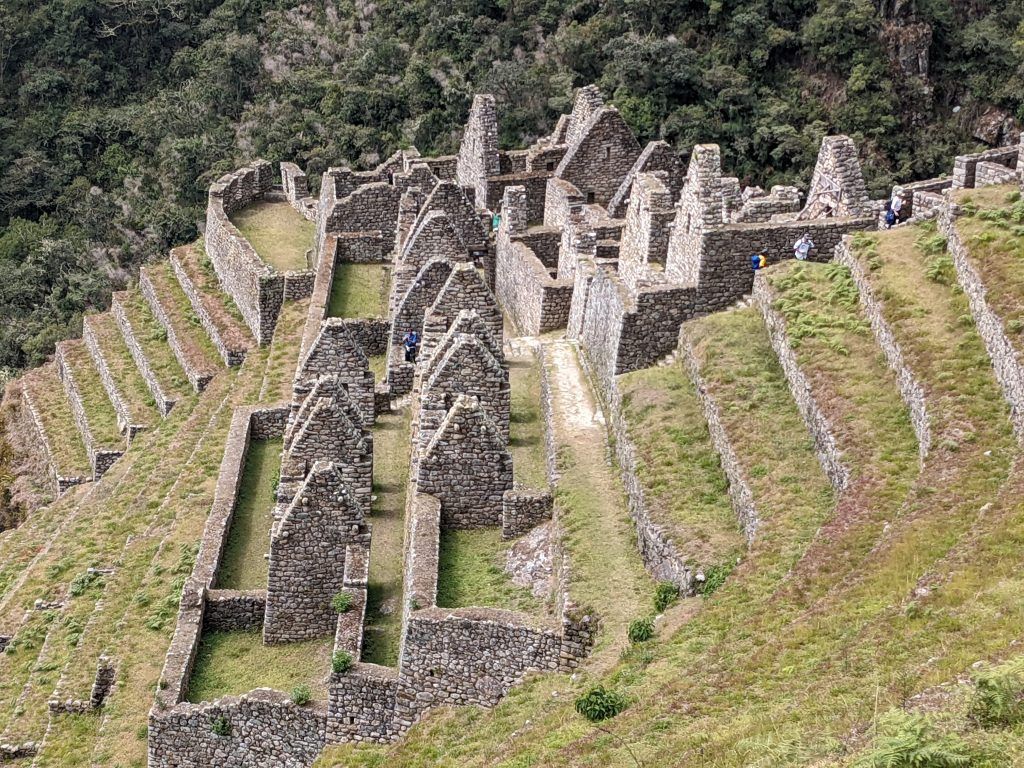
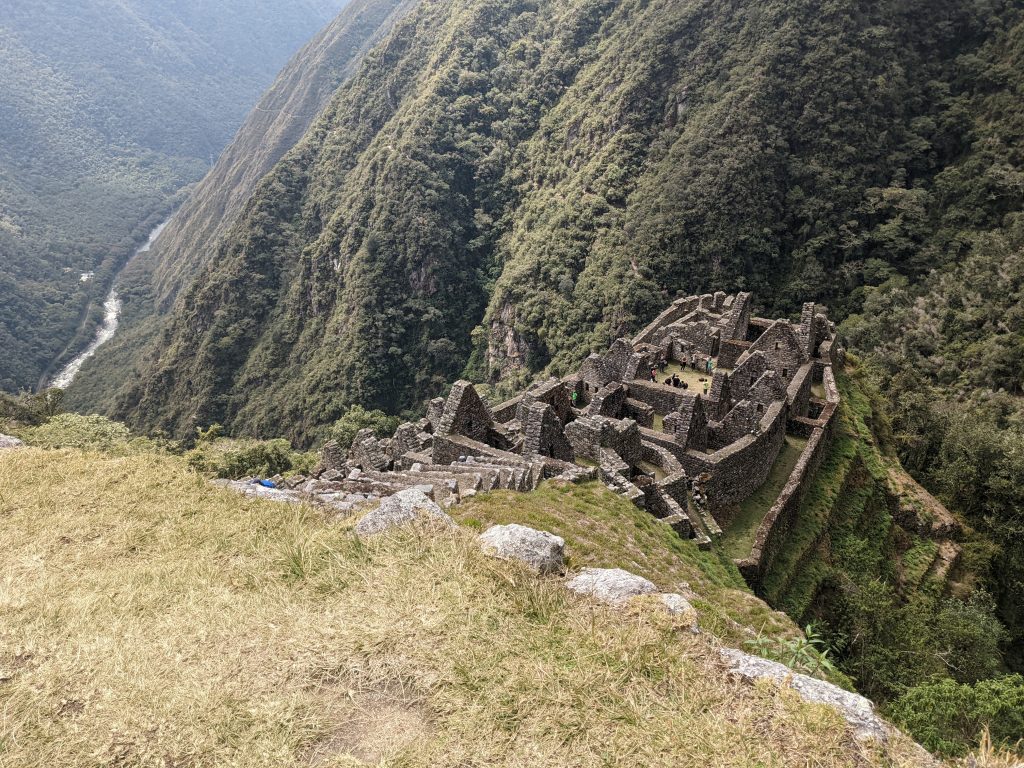
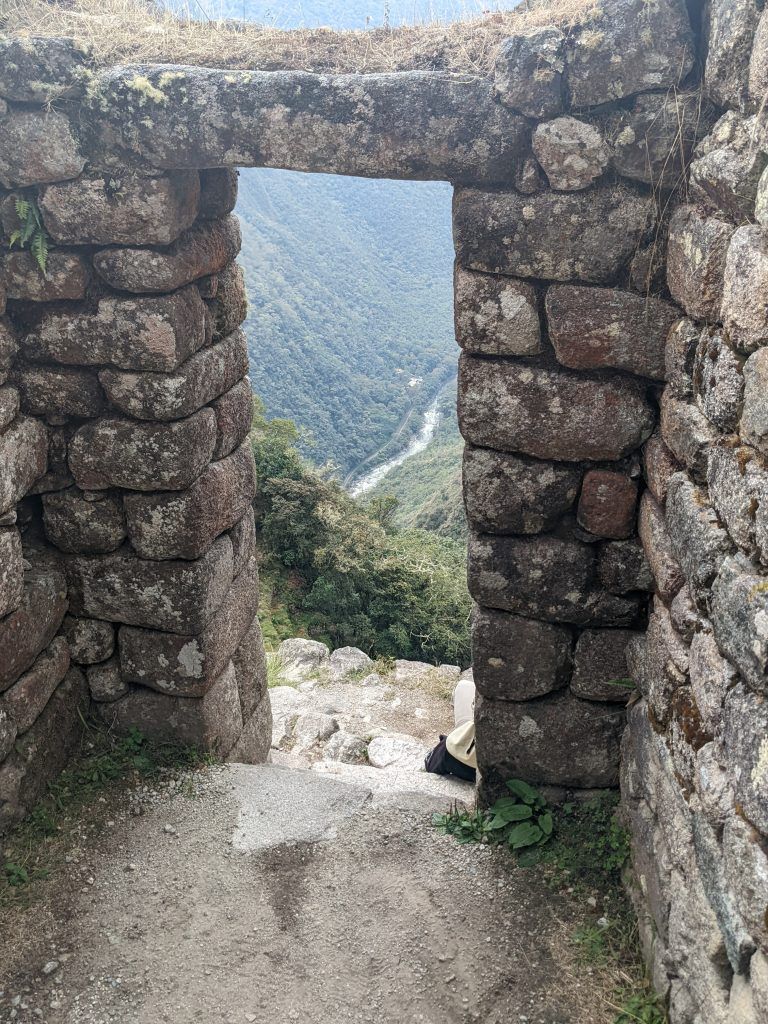
We finally reached the famous Sun Gate to get our first views of Machu Picchu and it promptly started raining hard. The Sun Gate was not designed to watch the sunrise or sunset from. It’s actually a marker for the Southern Hemisphere’s summer soltice in December. On the longest day, the sun goes through the gate and projects a beam of light into one of the windows of the Sun Temple far below in Machu Picchu.
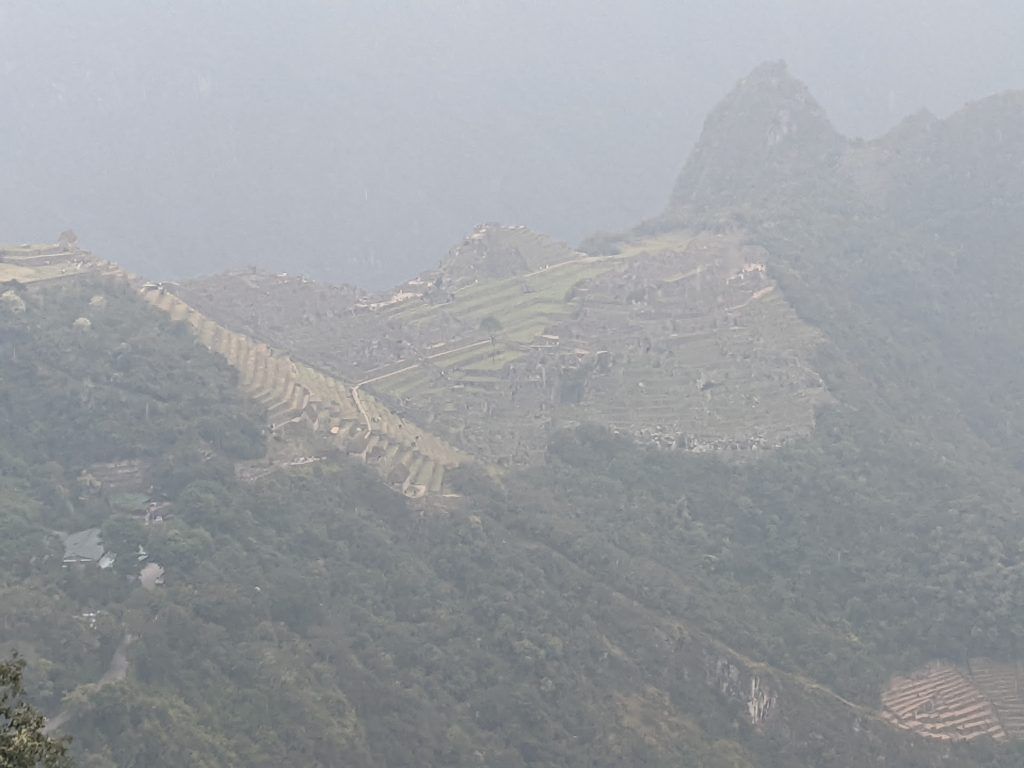
As we descended closer to Machu Picchu the rain eventually let up and we were able get some amazing views of the famous lower section of the site from our position on the upper platforms.
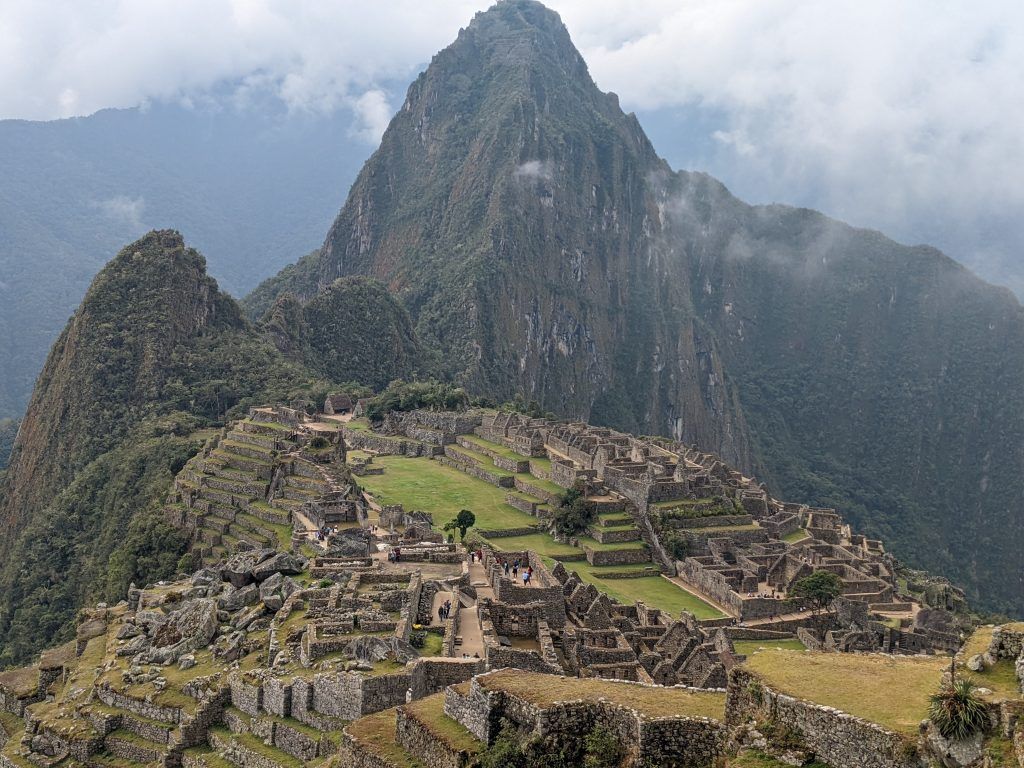
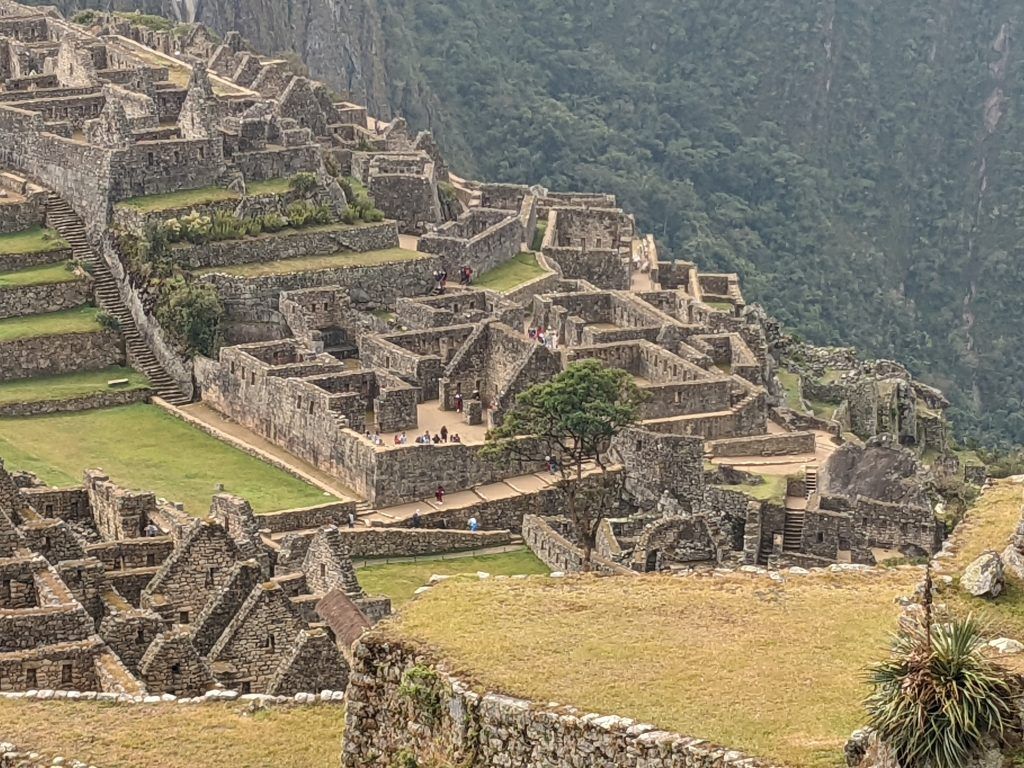
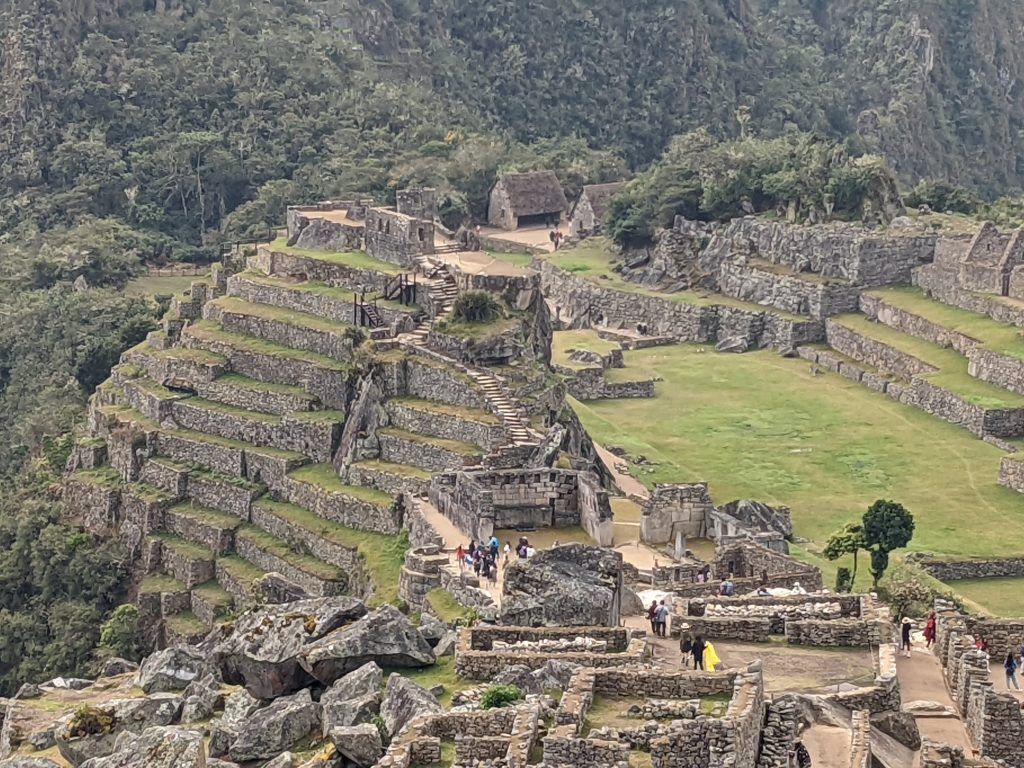
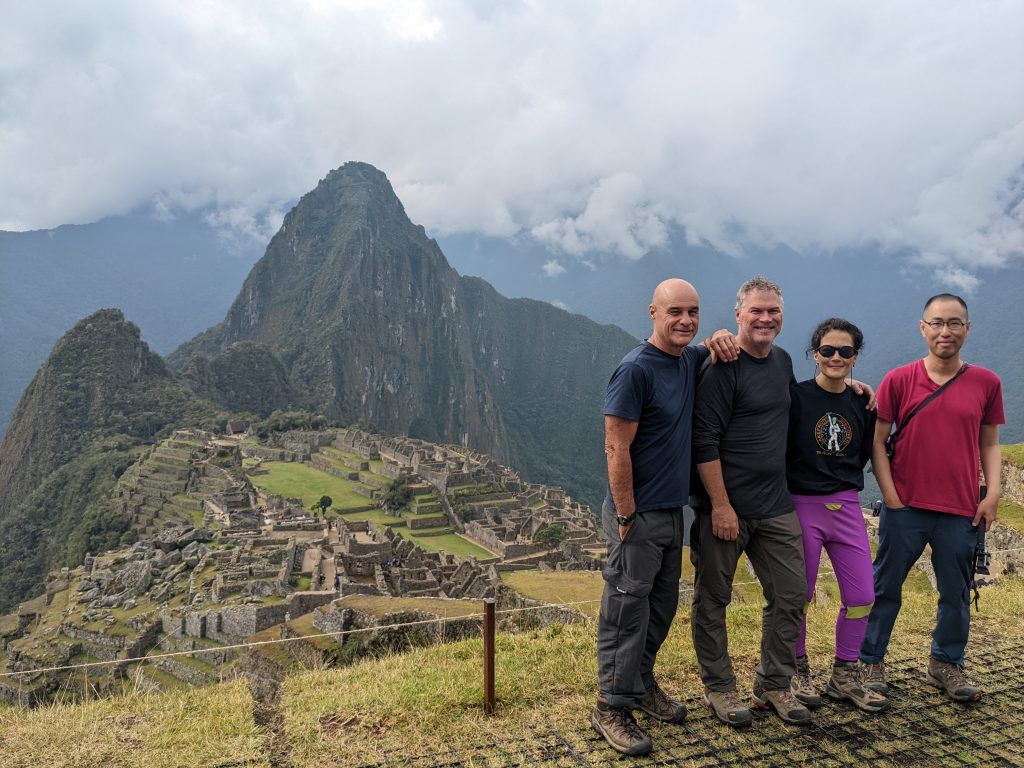
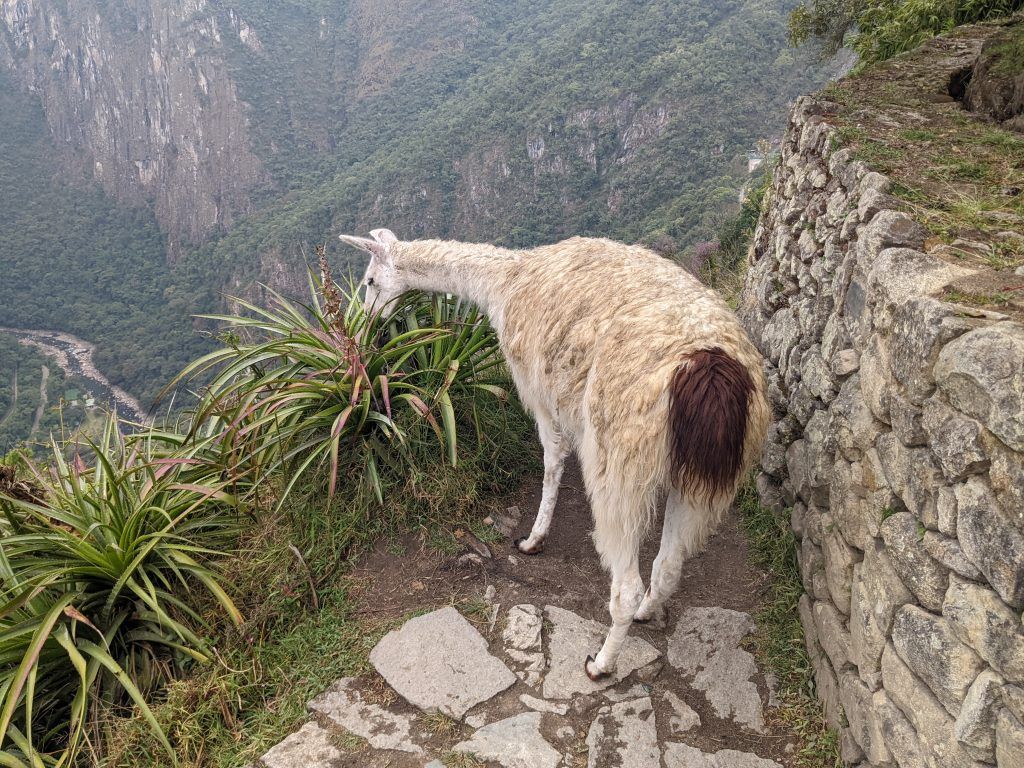
And on our last night we got to stay in hotel rooms in the town of Aguas Calientes. The hot shower that night was wonderful.
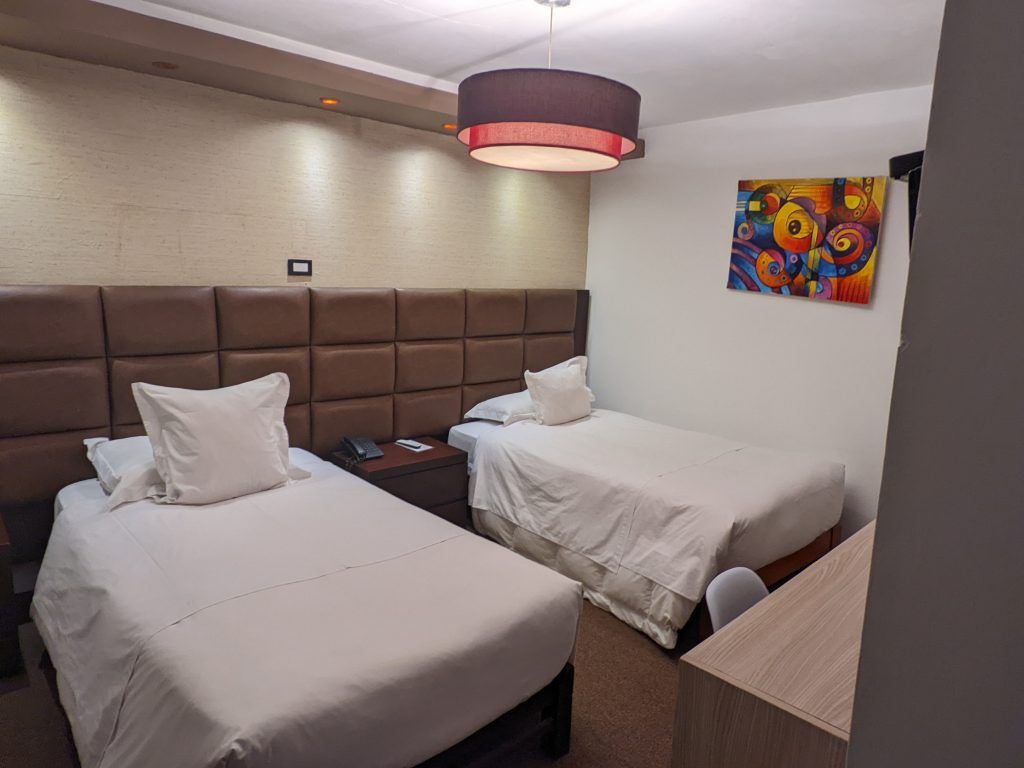
Day 5: Machu Picchu Tour
Day 5 is the ultimate ending to the trek where we got to visit Machu Picchu. We caught a 6:30am bus from Aguas Calientes back up to the site where Juan Carlos gave us an excellent guided tour.
It was raining when got to Machu Picchu. Thankfully it let up within 30 minutes and then we had some amazing views, first as the clouds were lifting, and then as the sun shone through.
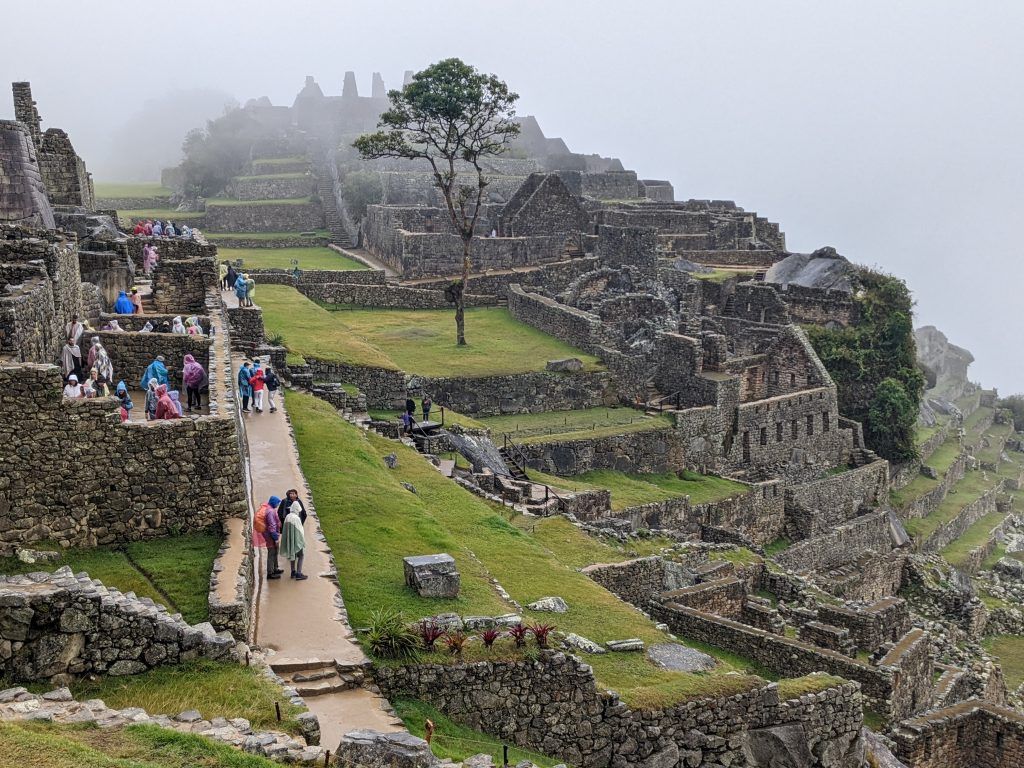
They built this temple right into the natural rock from the mountain.
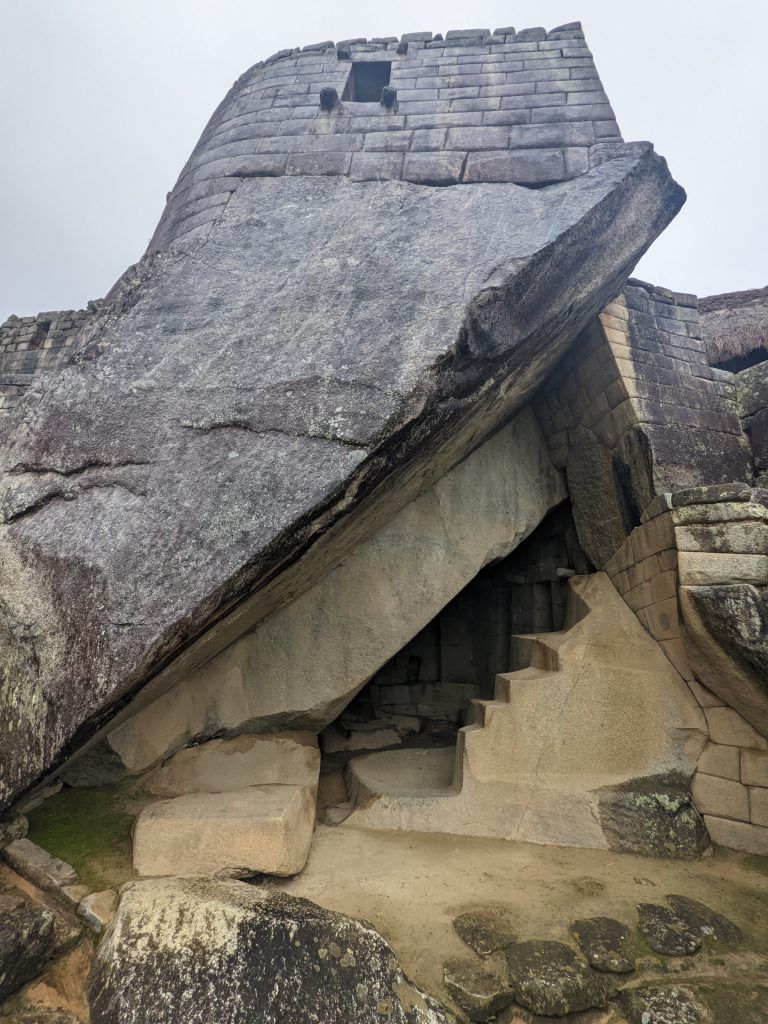
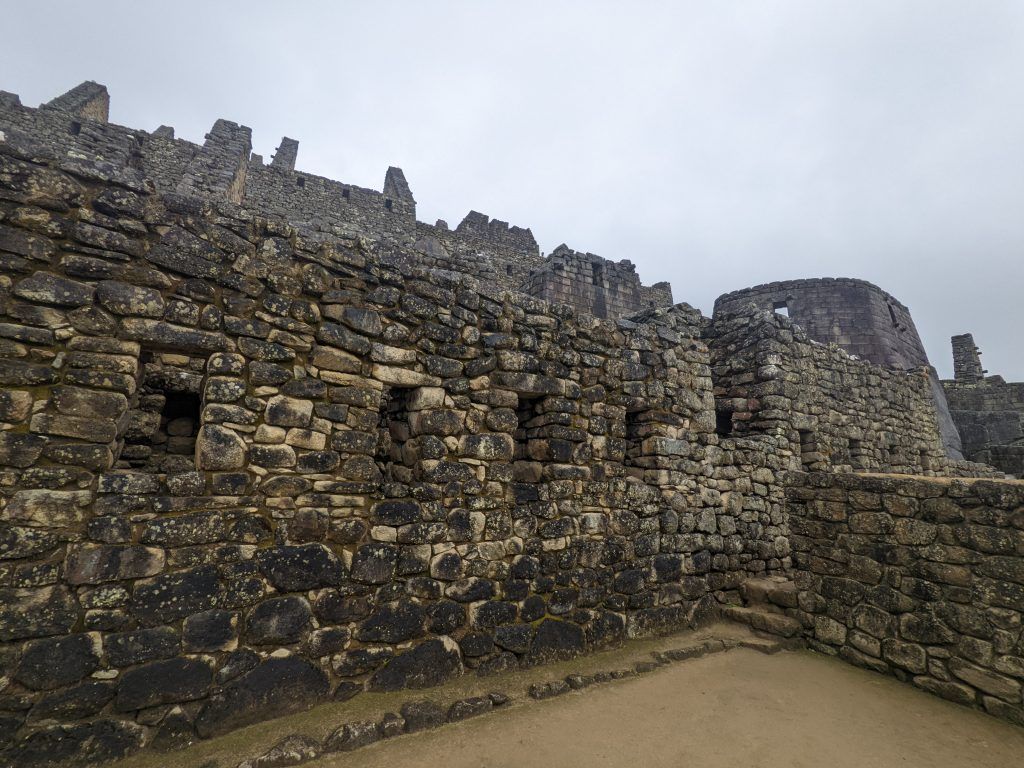
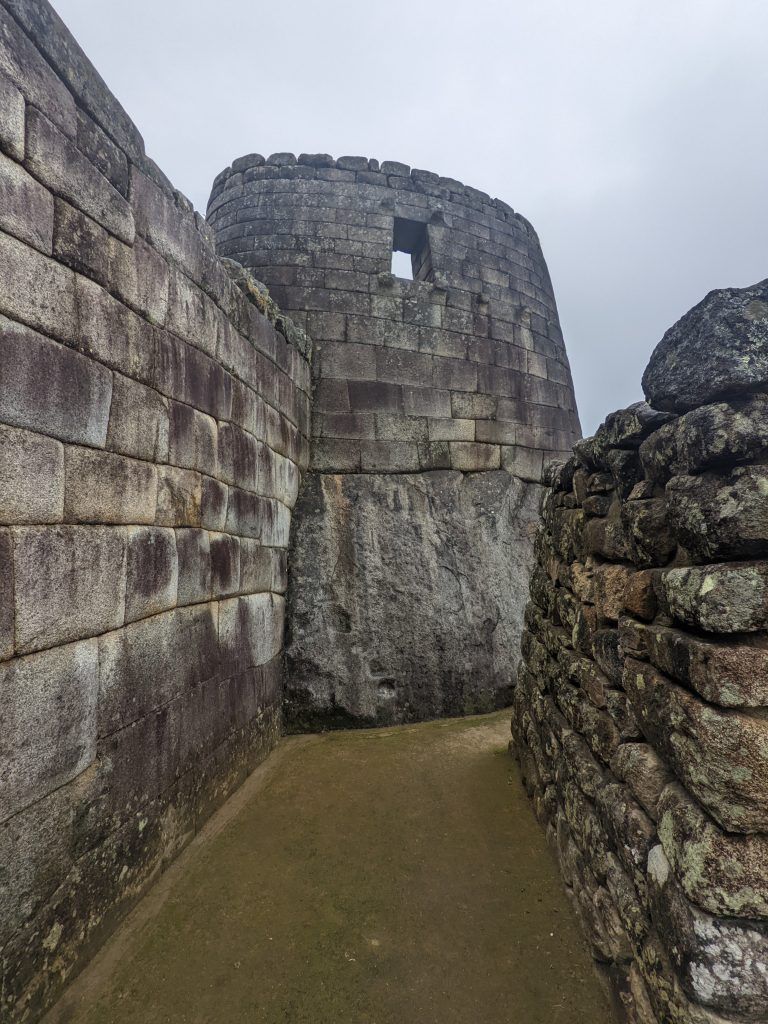
Juan Carlos waving us into one of the doorways.
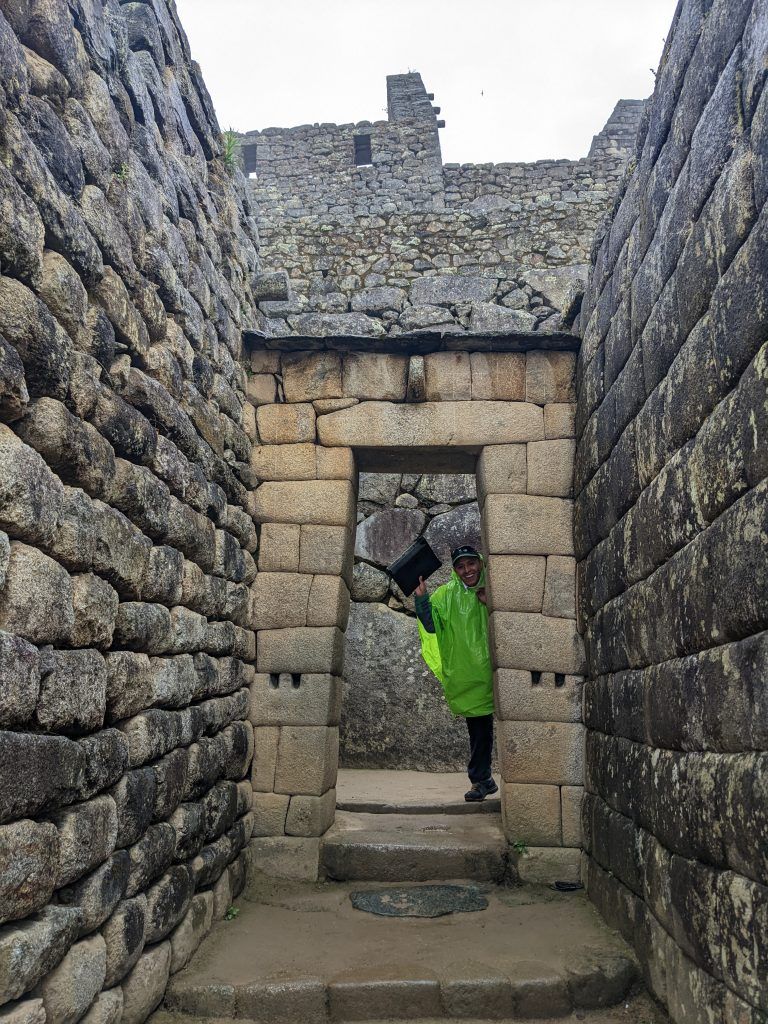
The wall on the left was the back of the main palace. Notice how straight and seemless the stonework is here.
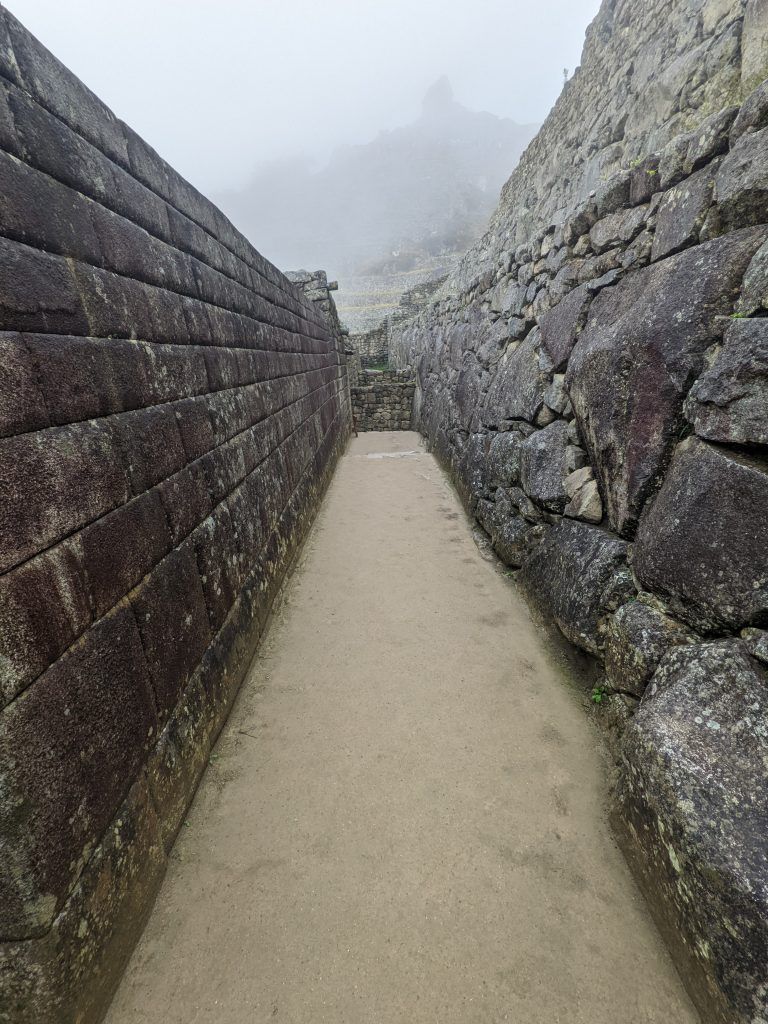
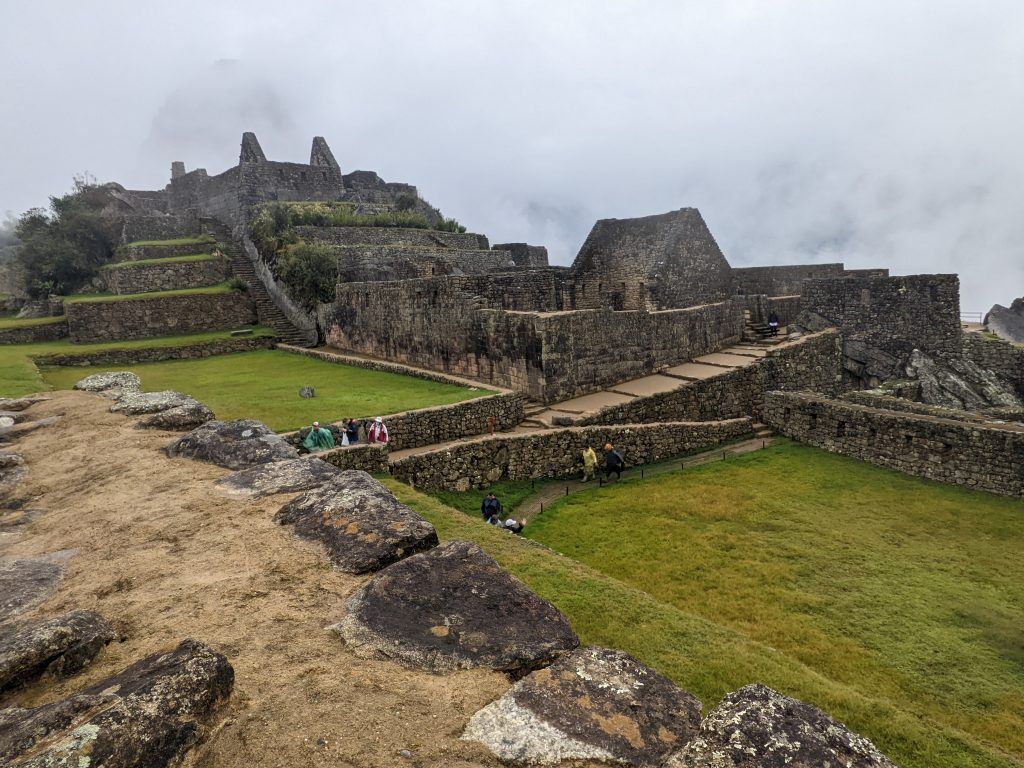
Looking back up to part of the upper terraces where we were the afternoon before.
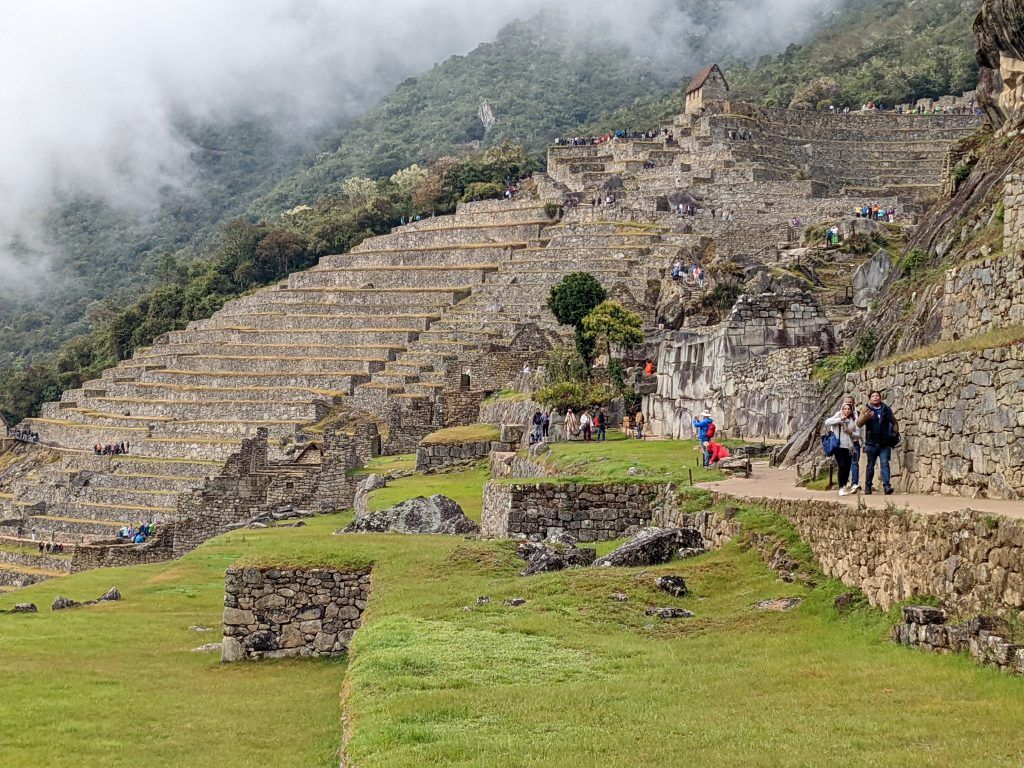
The main plaza where the Incas hosted ceremonies and special events.
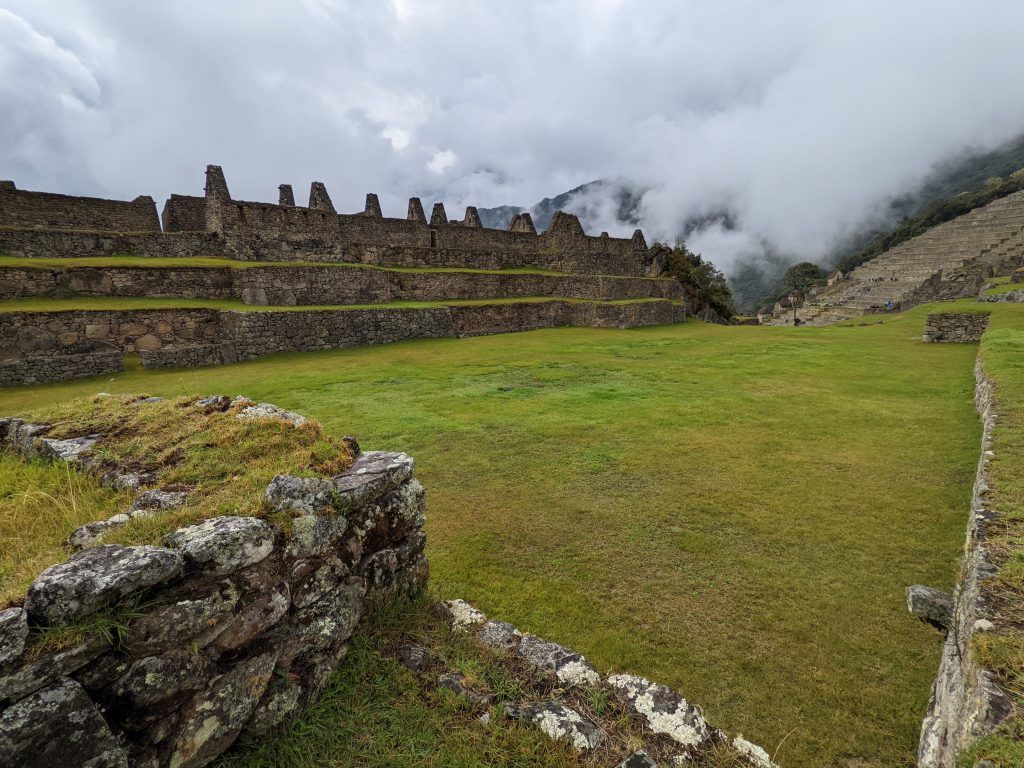
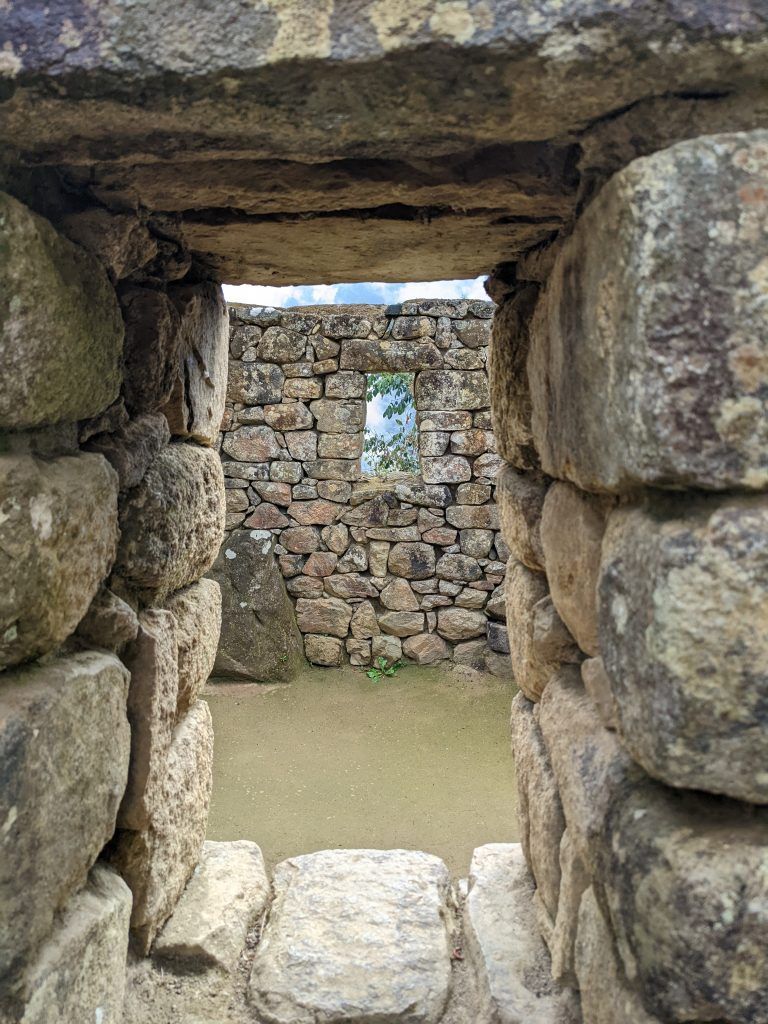
The view looking out from part of what Juan Carlos said was the women’s school.
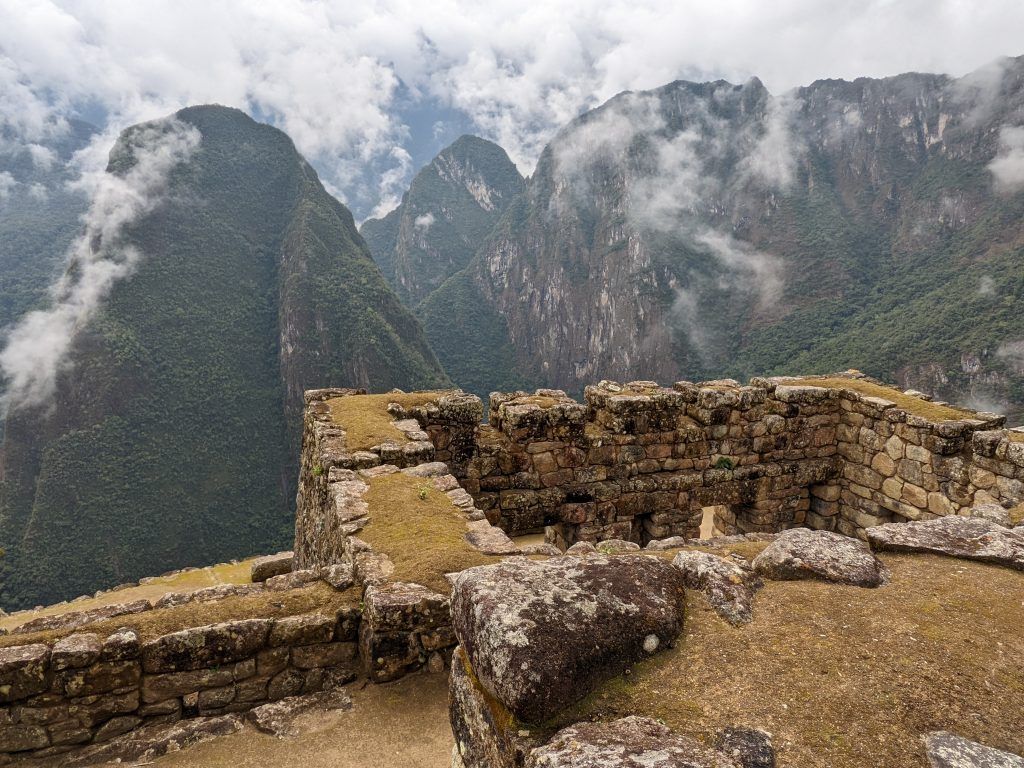
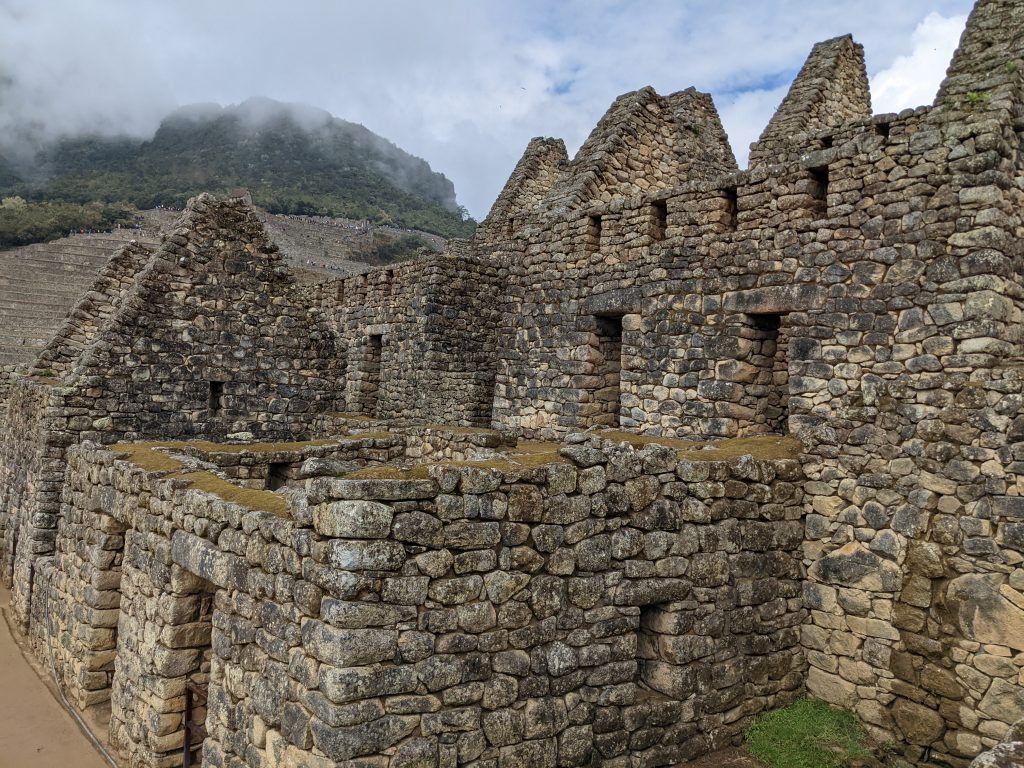
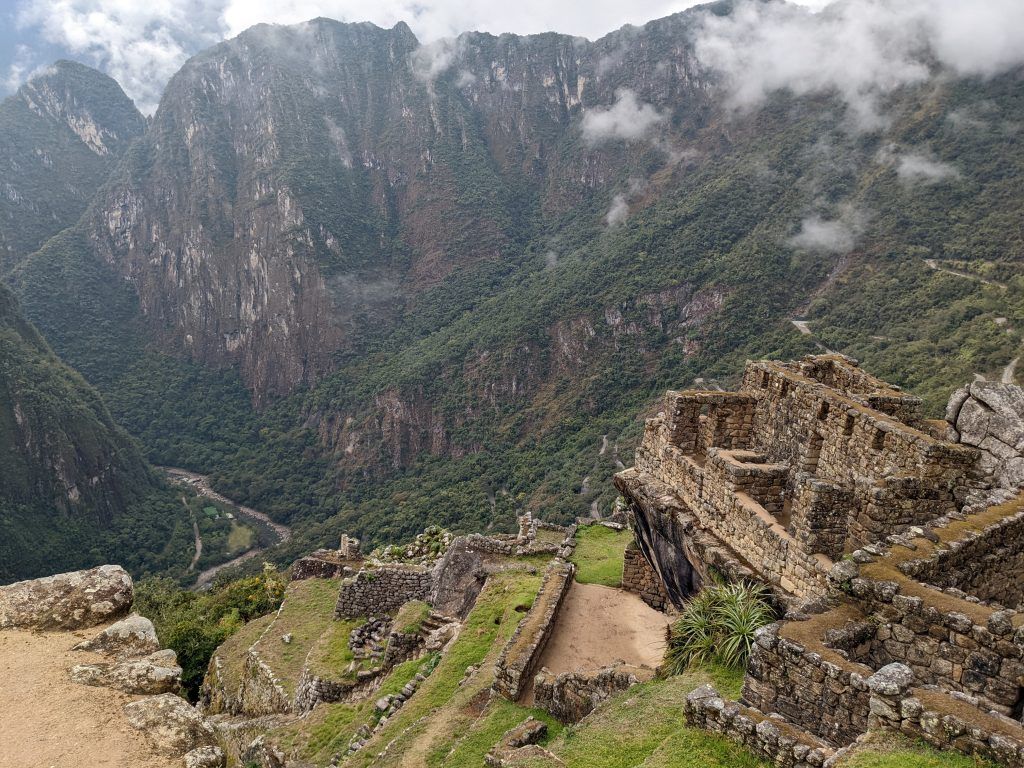
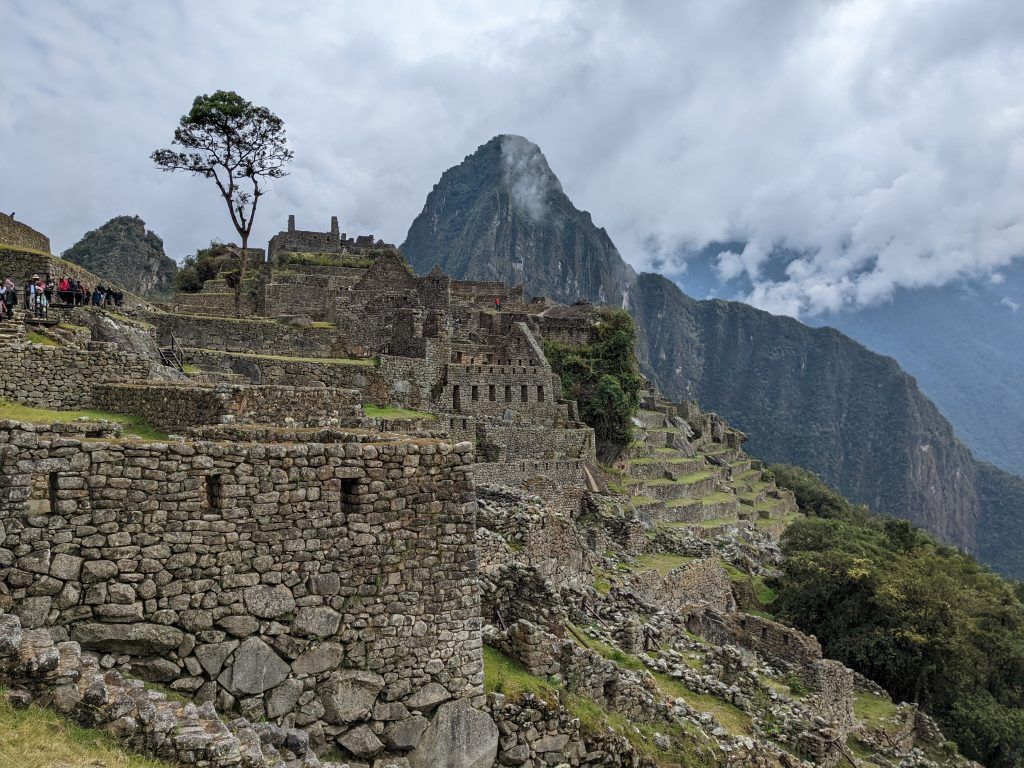
Afterwards we had lunch back at Aguas Calientes. I celebrated with a pisco sour and some cuy. Cuy is guinea pig and is both an Inca and a current delicacy in Peru.
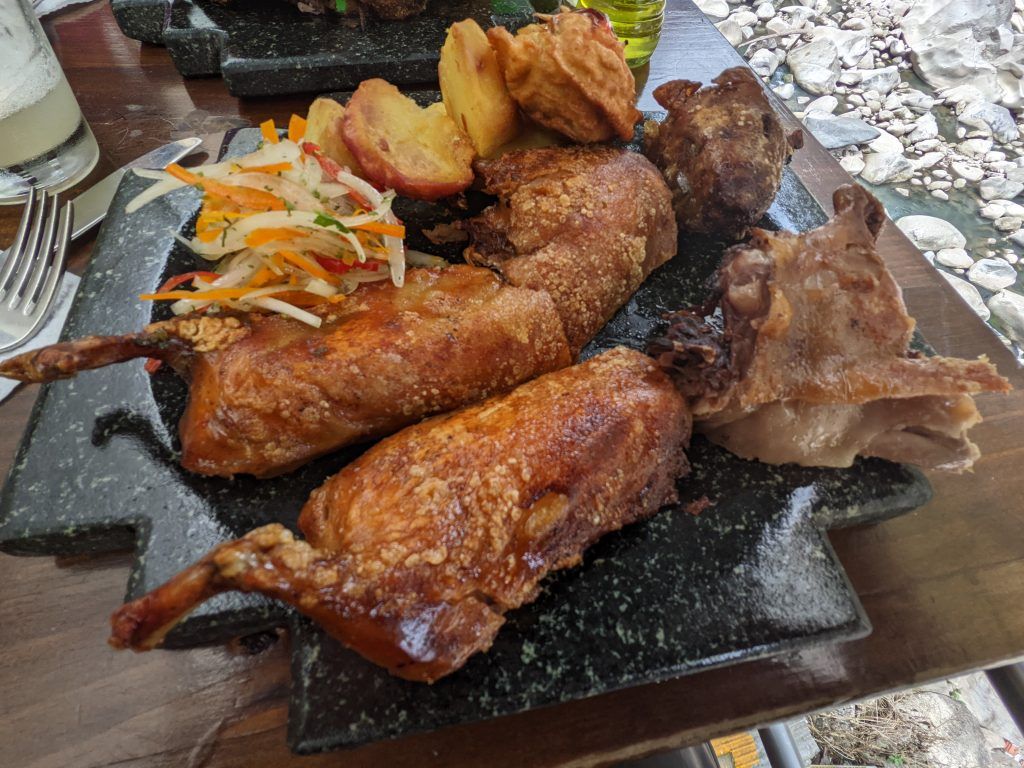
The small town of Aguas Calientes that fits tightly in the tiny valley bisected by the Urubamba River.
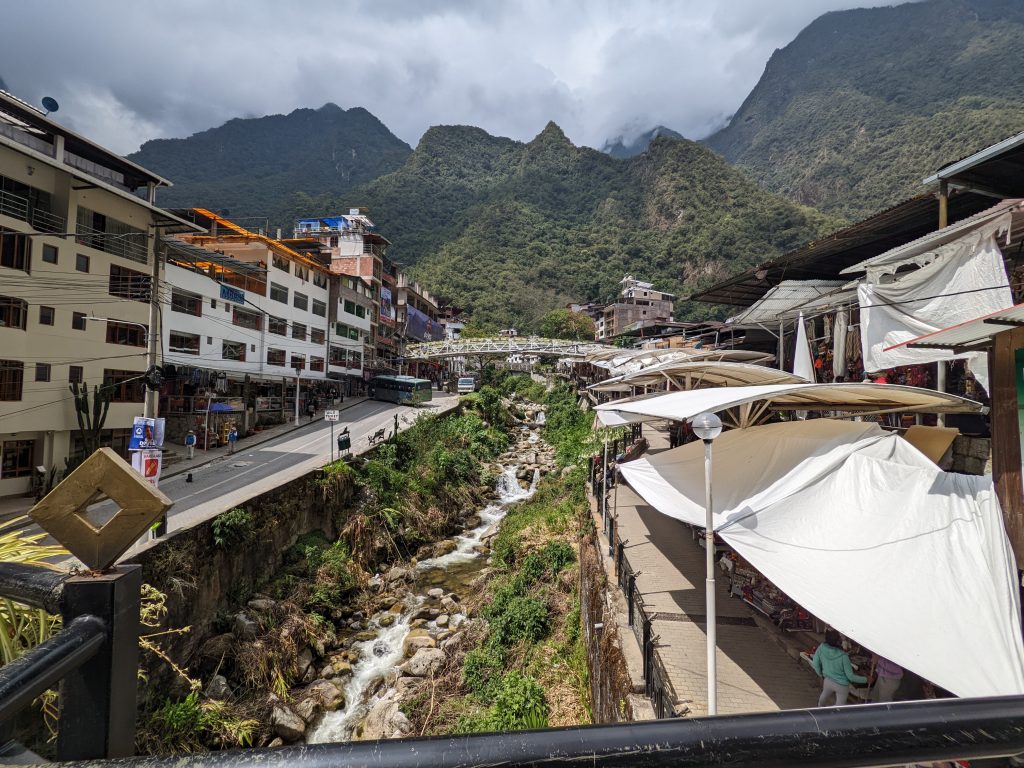
The view from the train back to Ollantaytambo, where we took a private Alpaca Expeditions bus back to Cusco.
